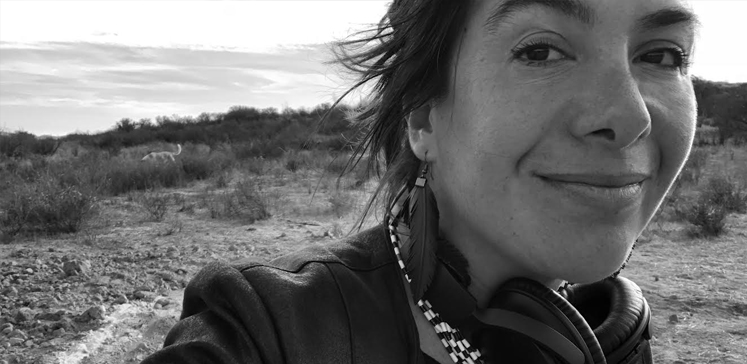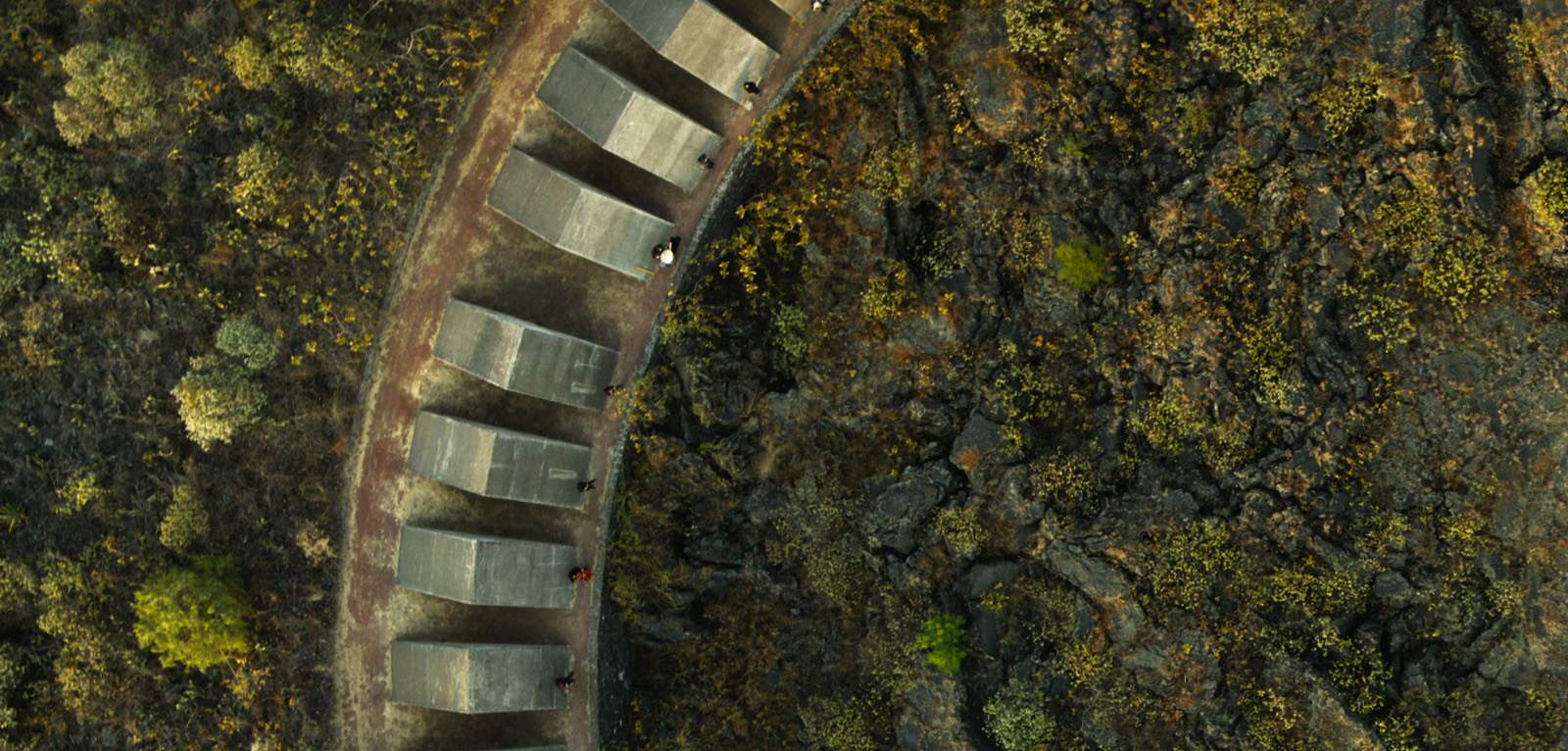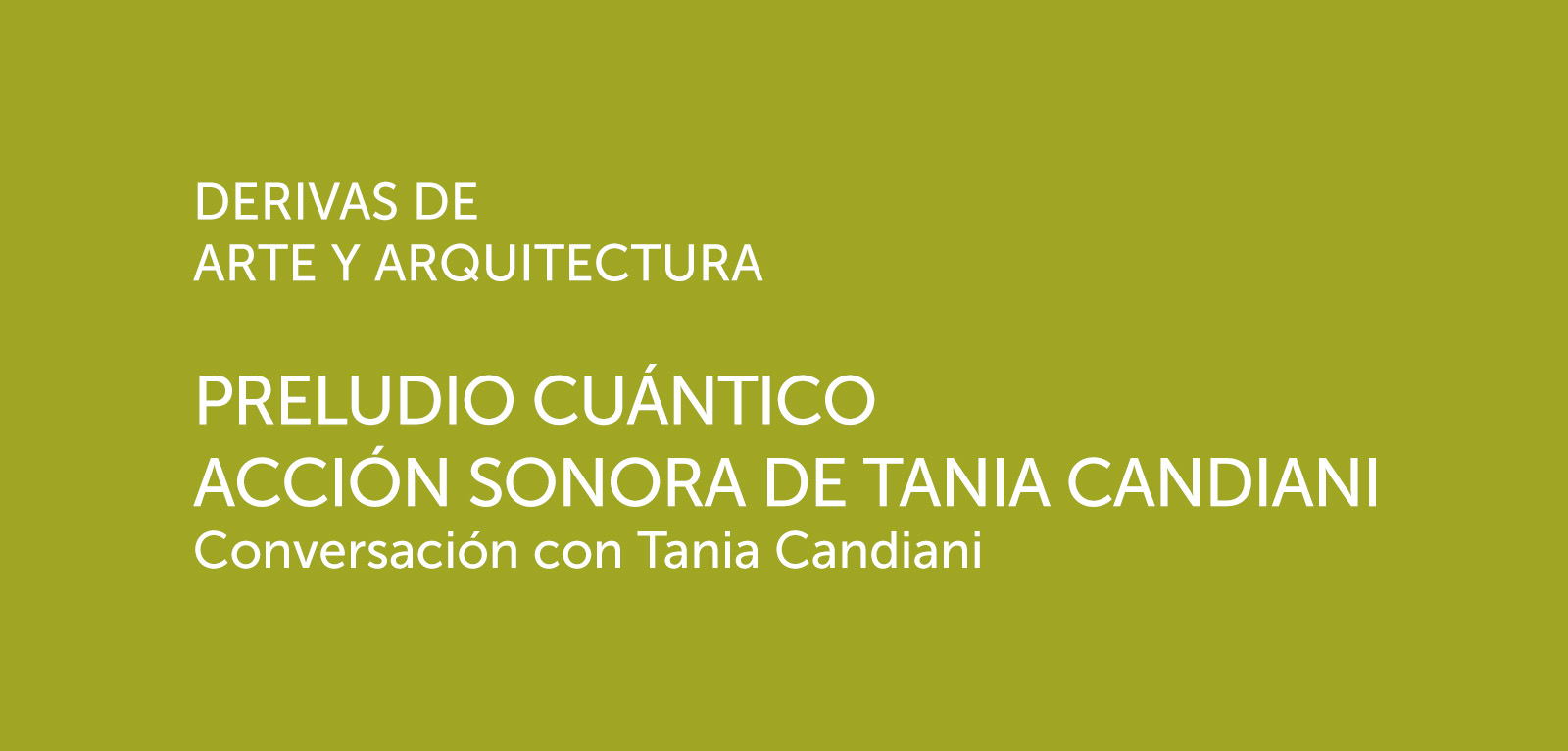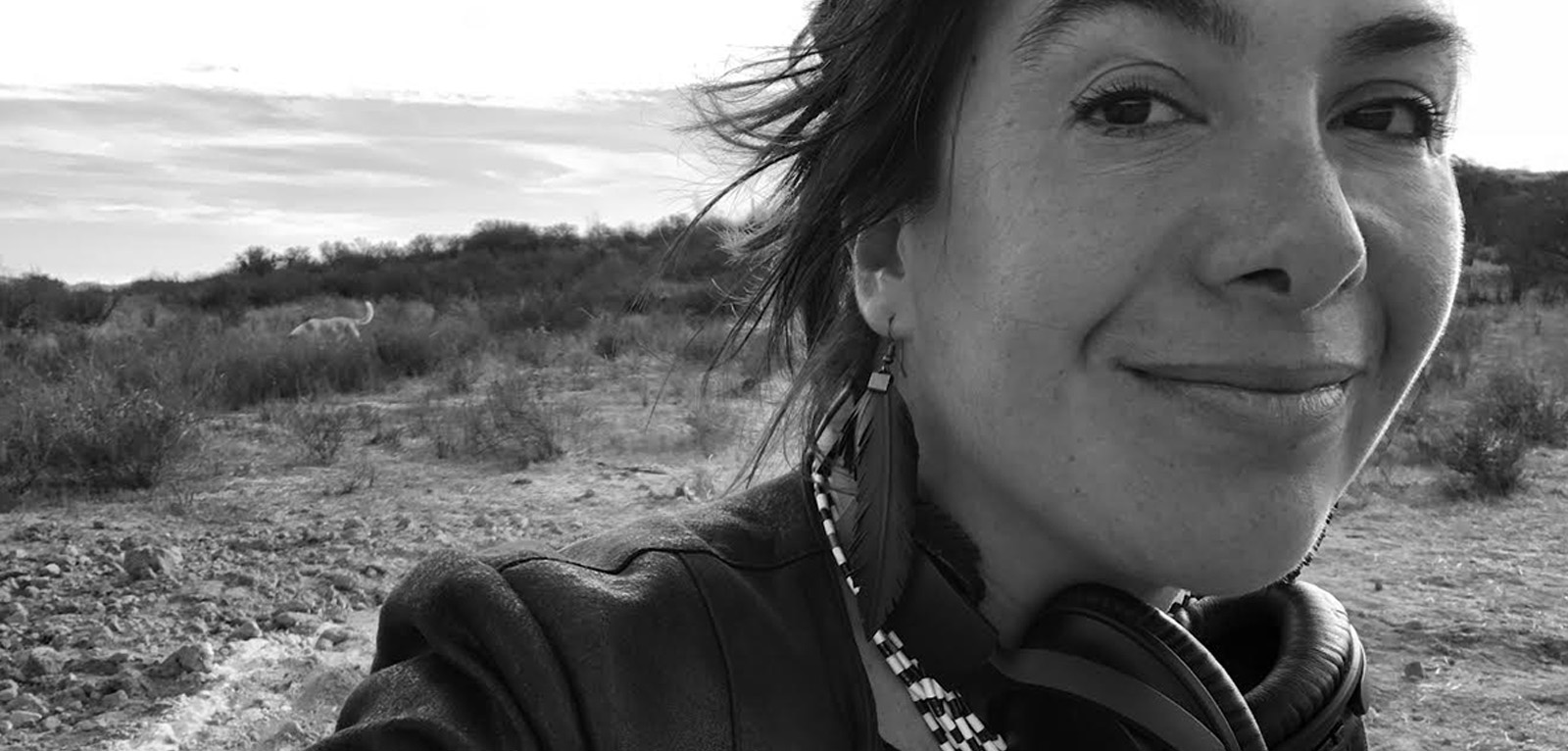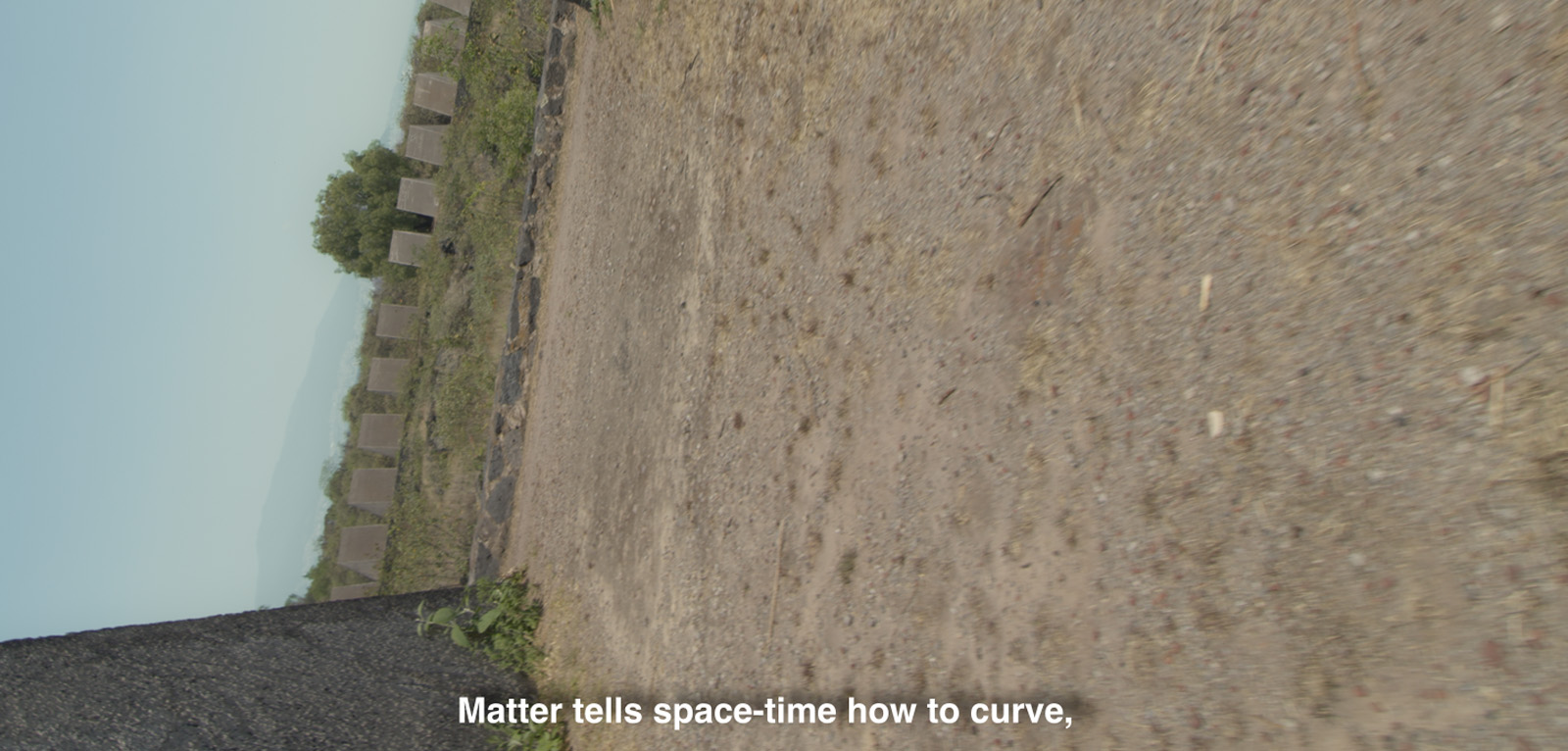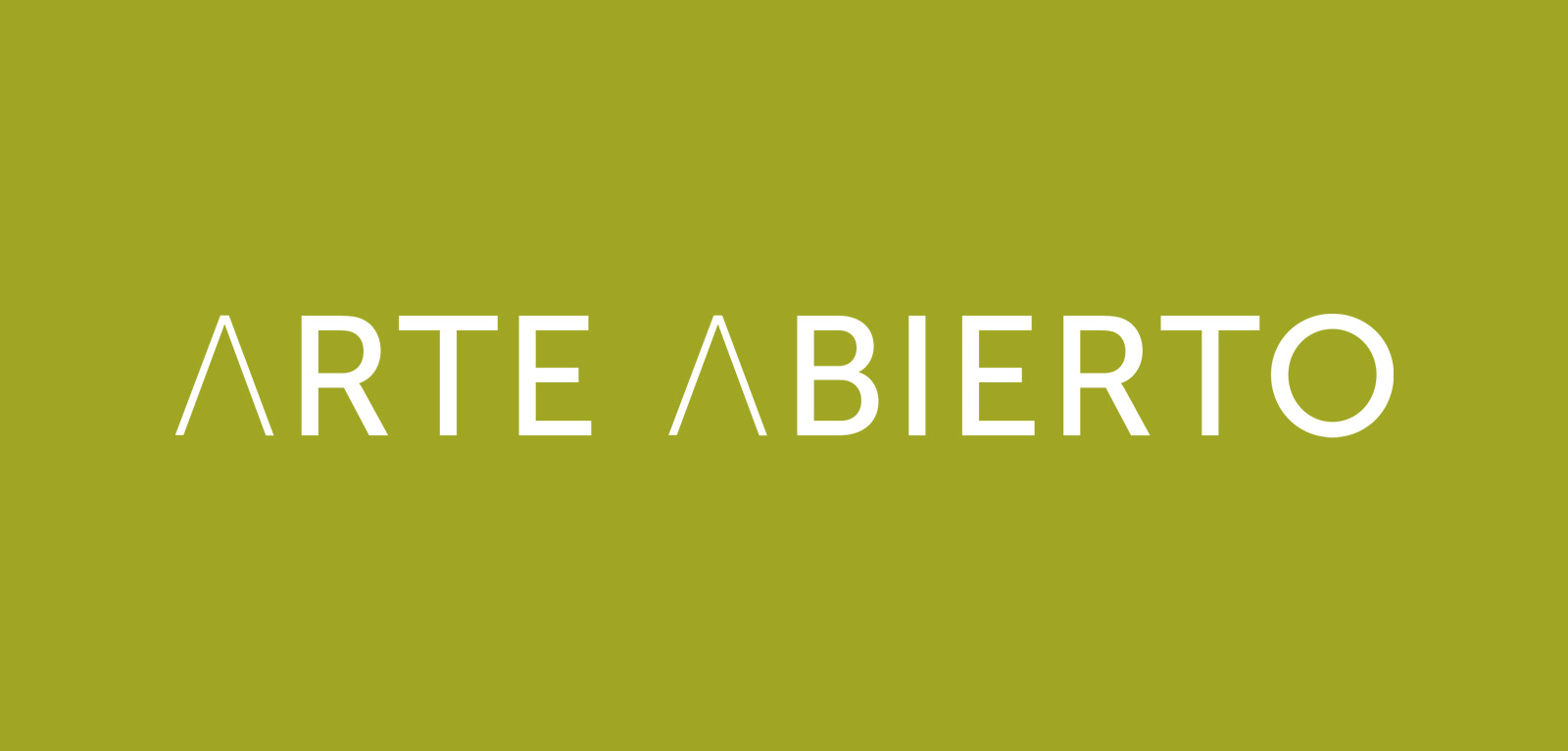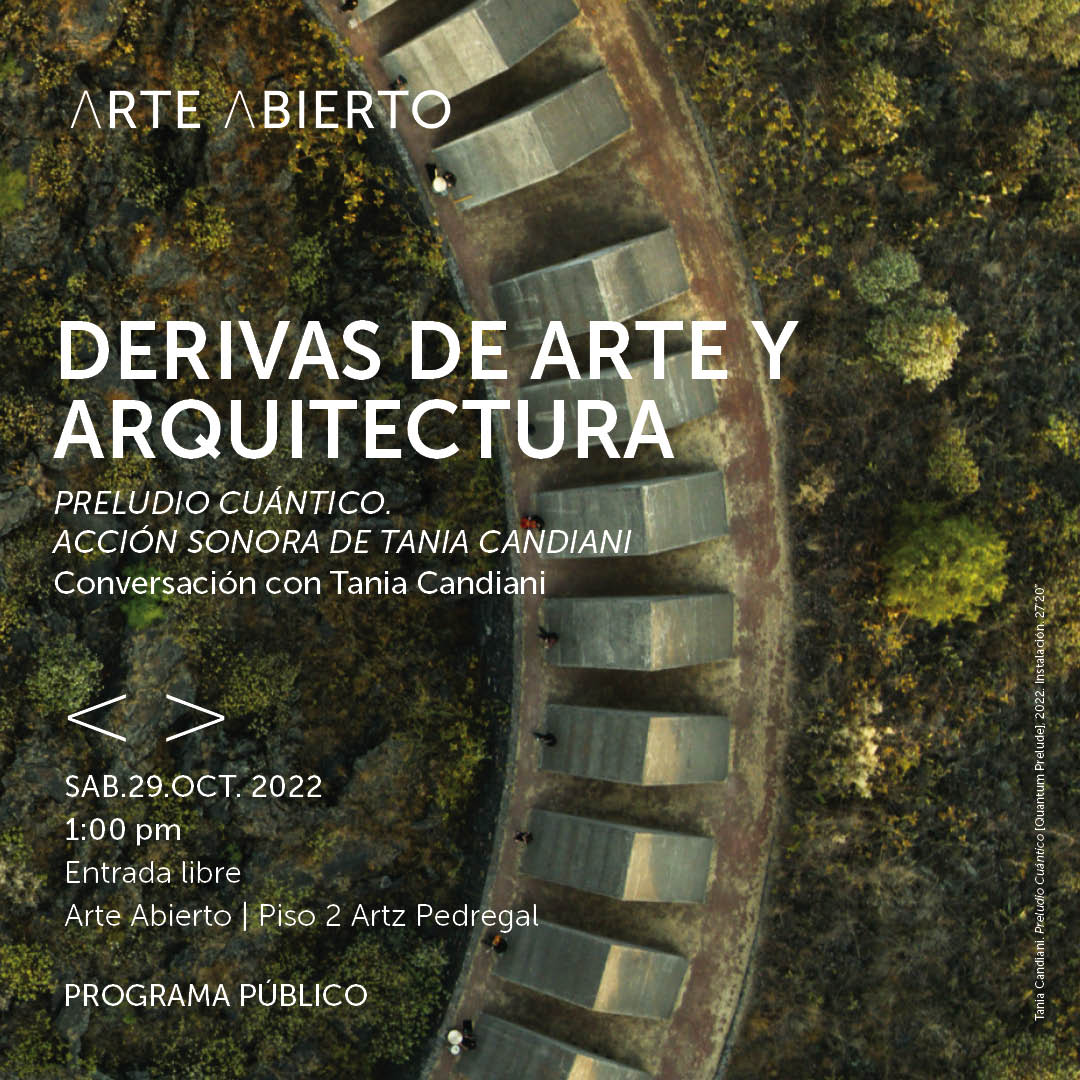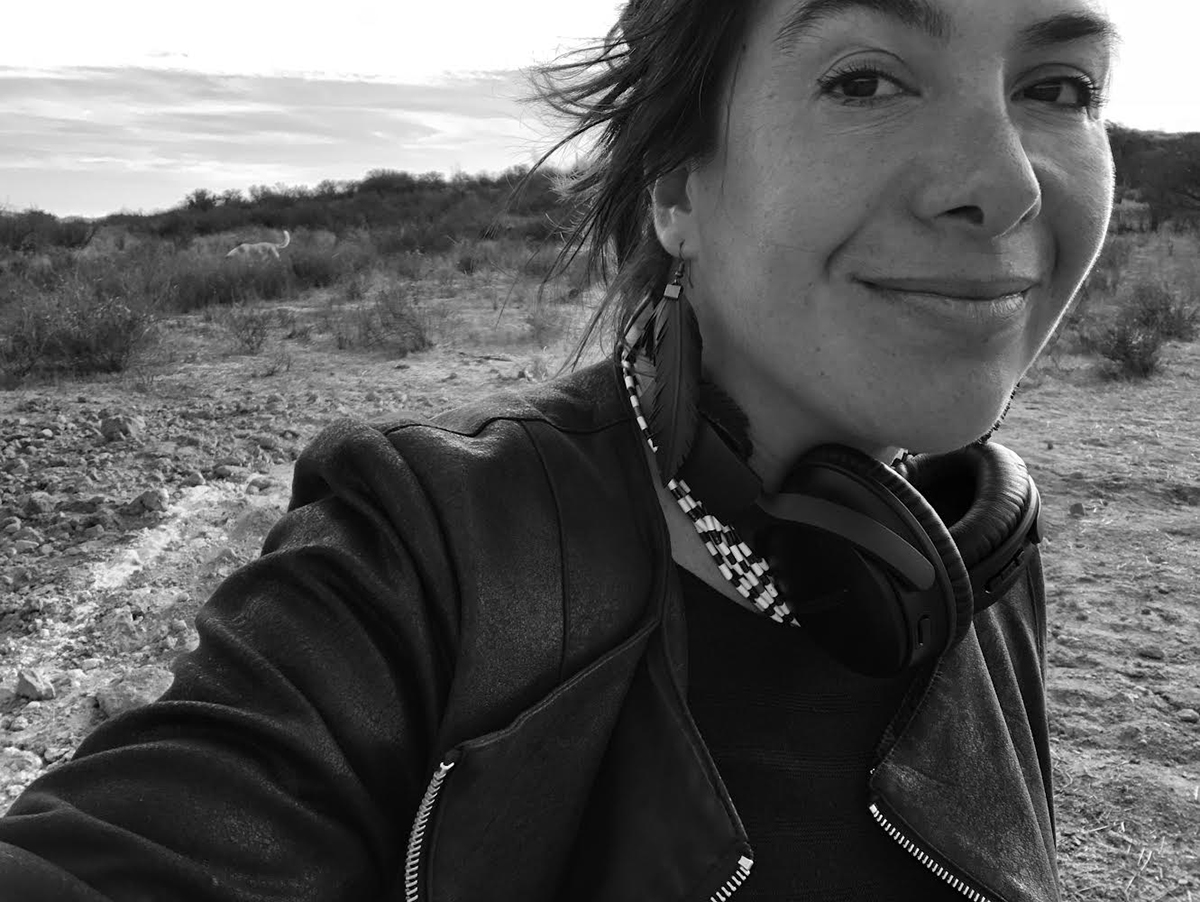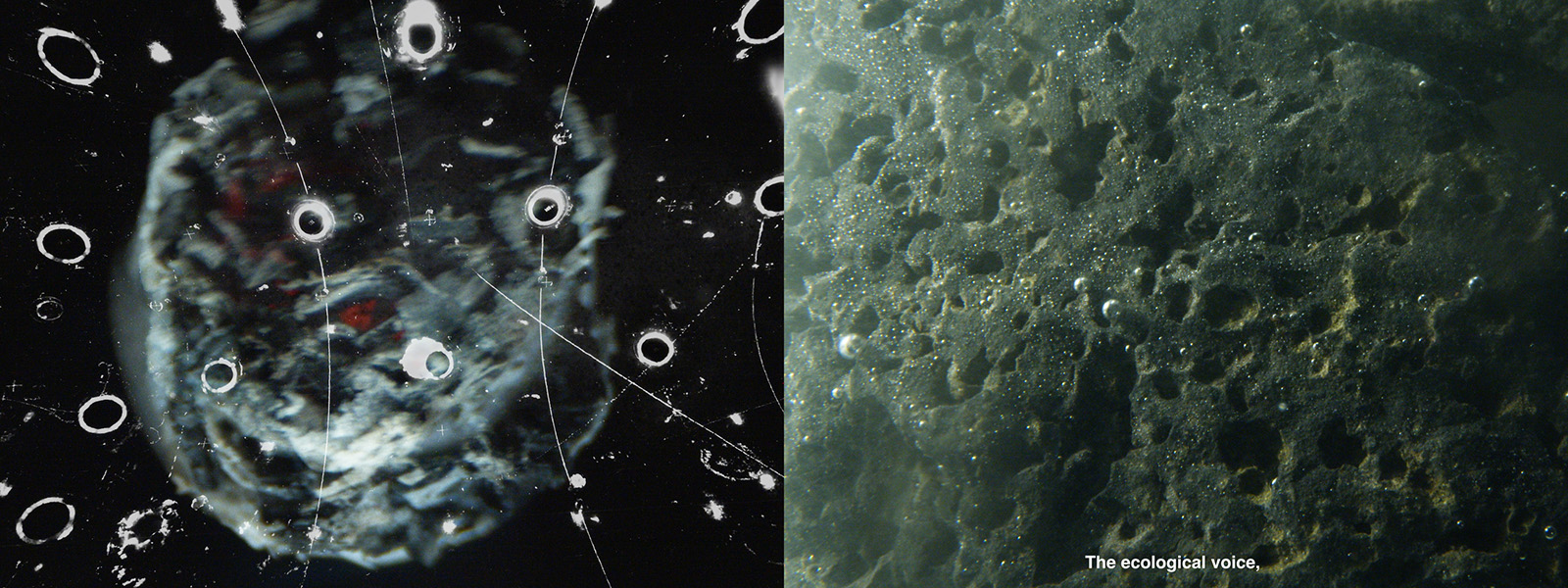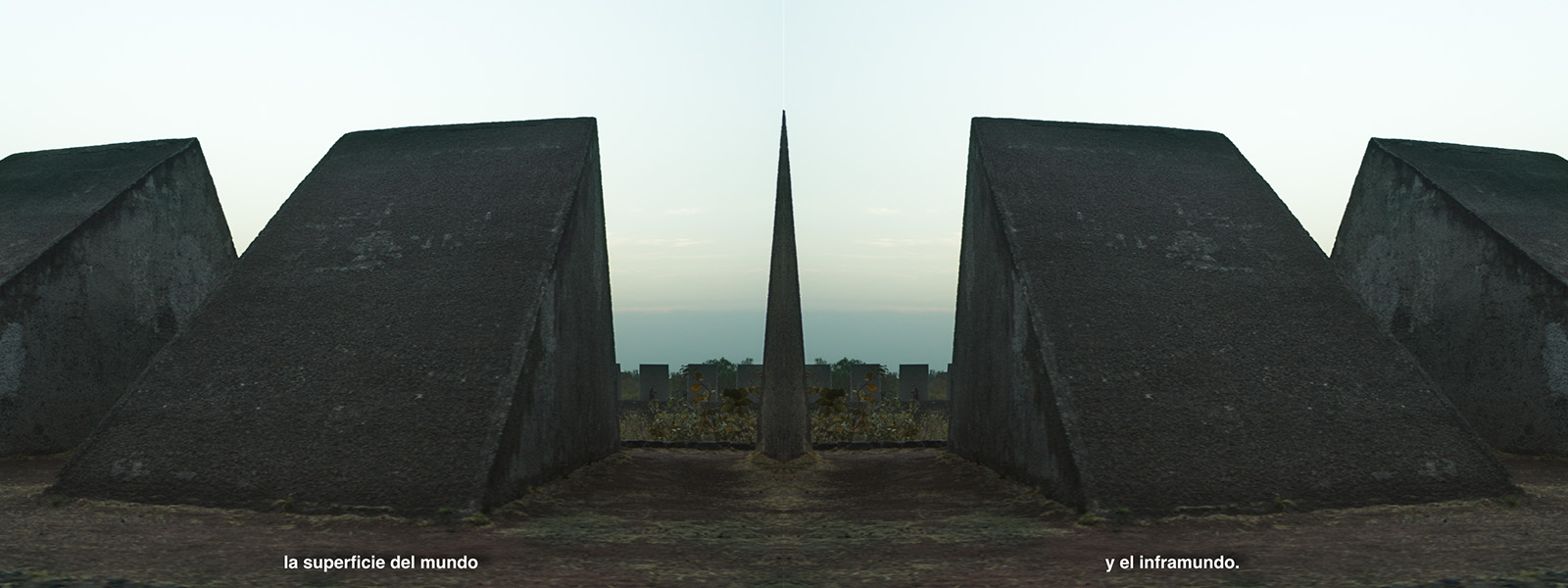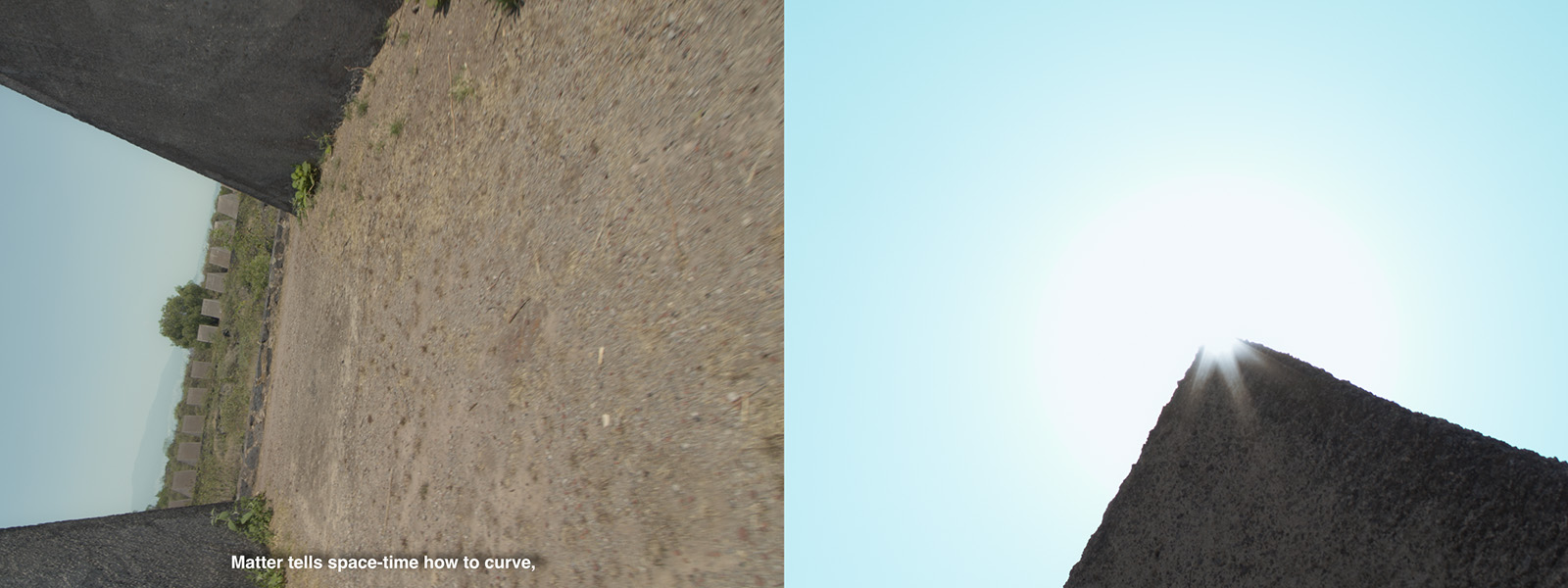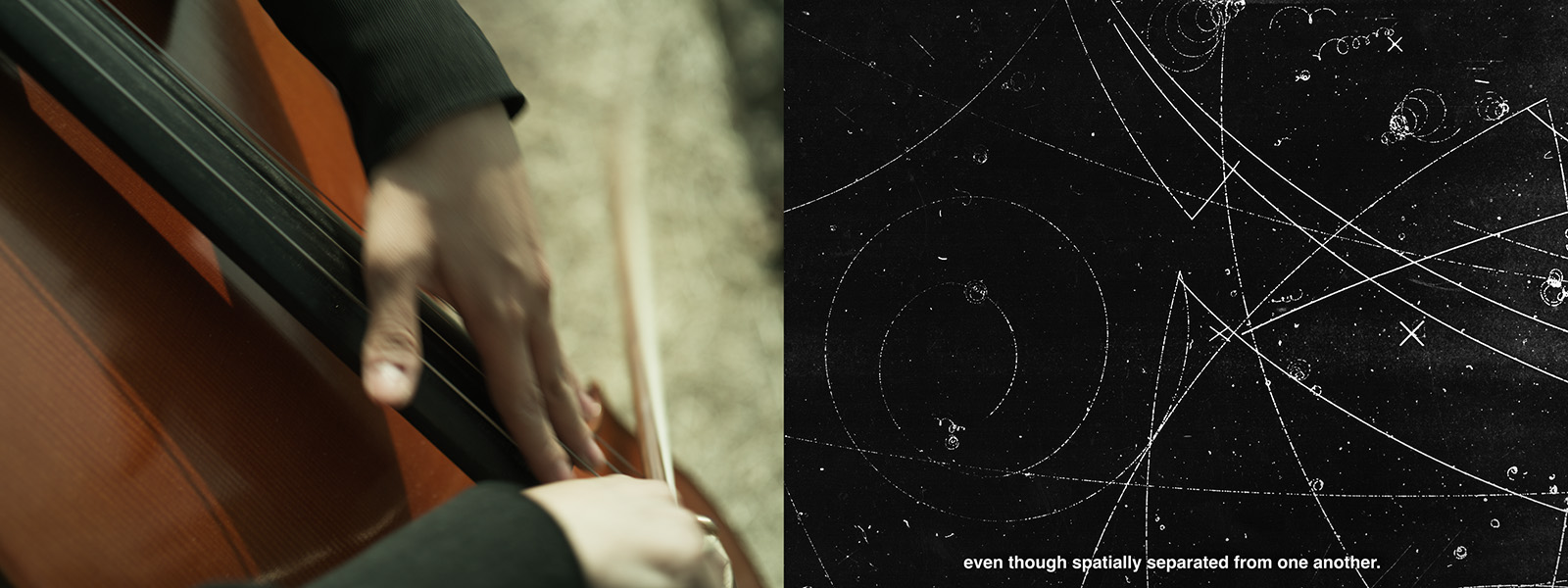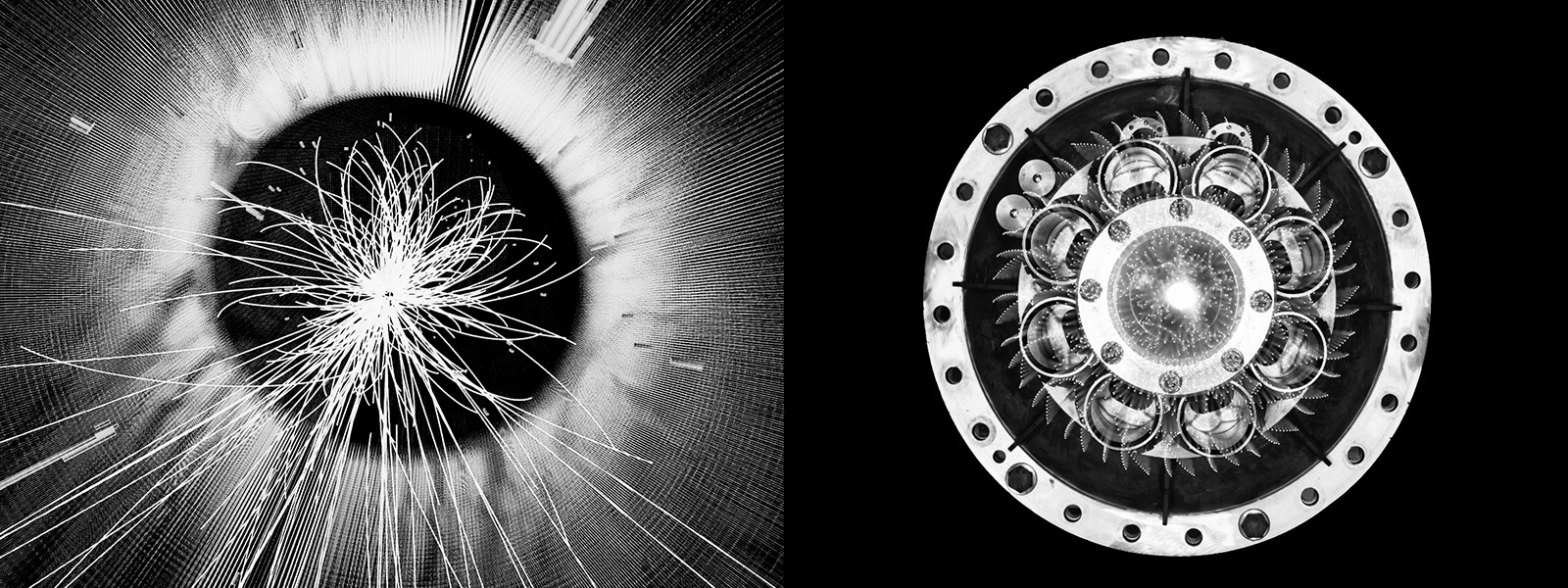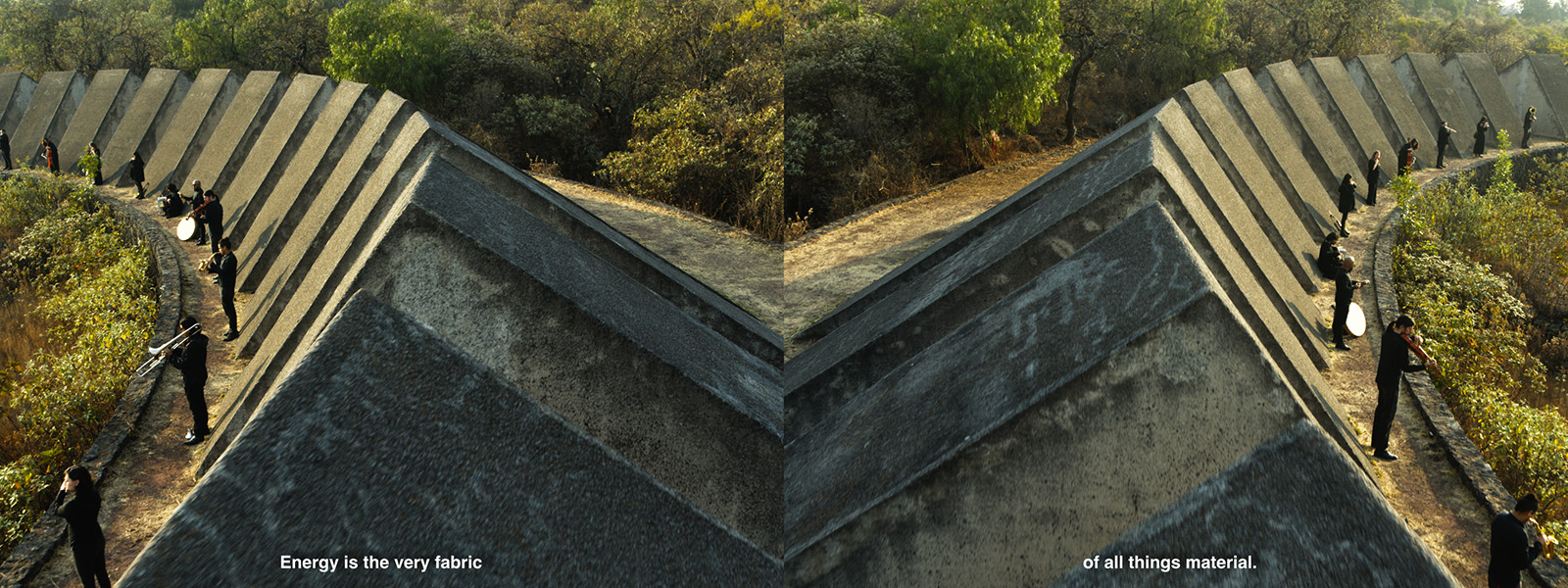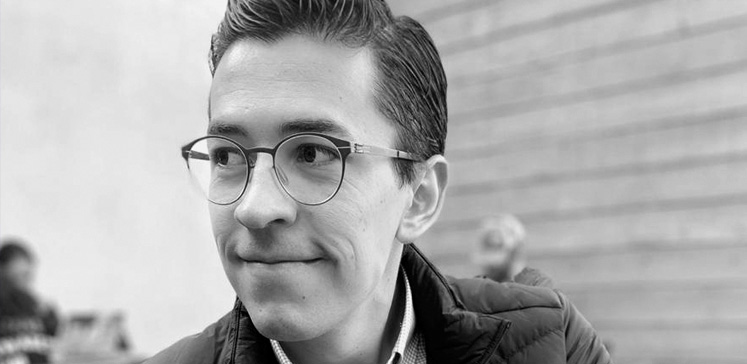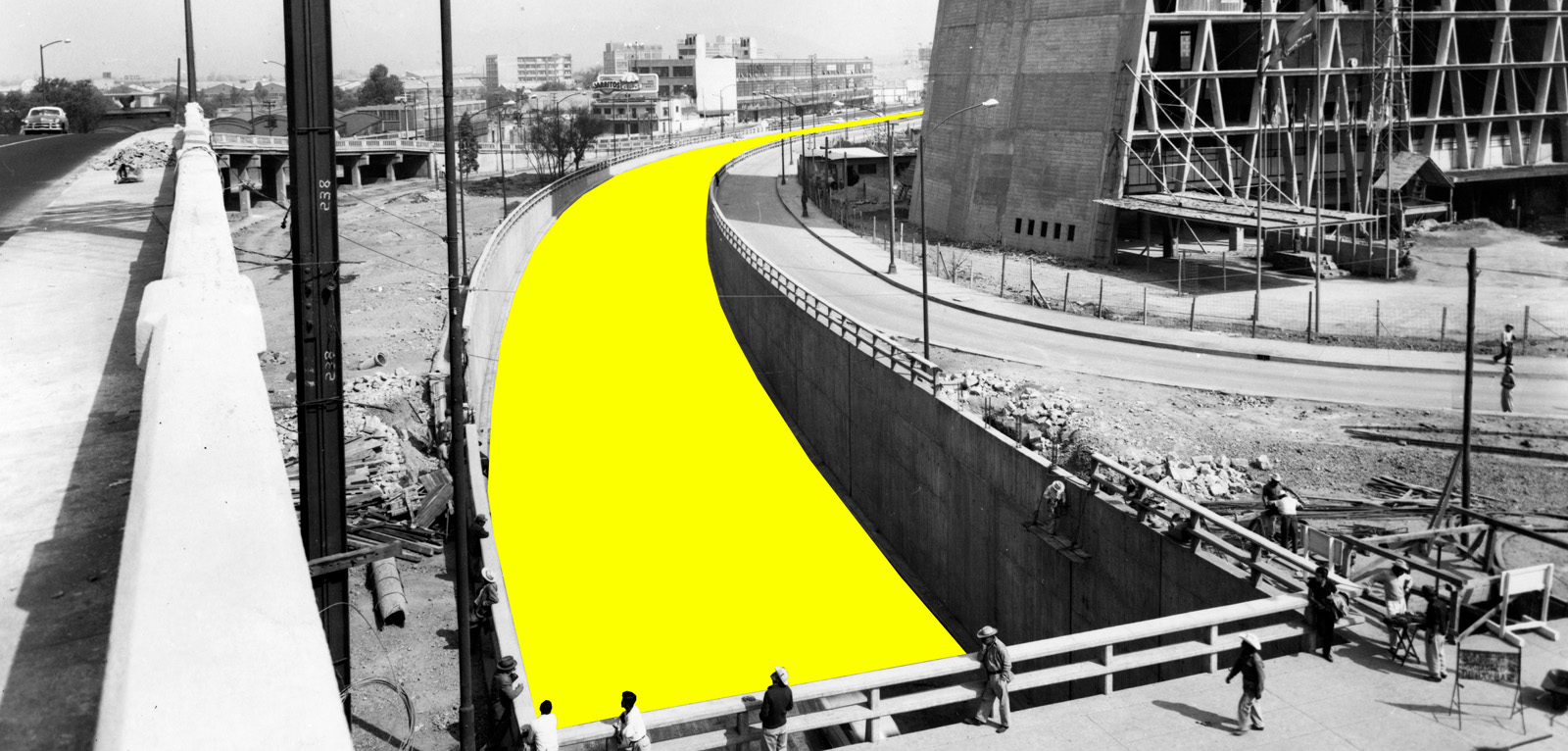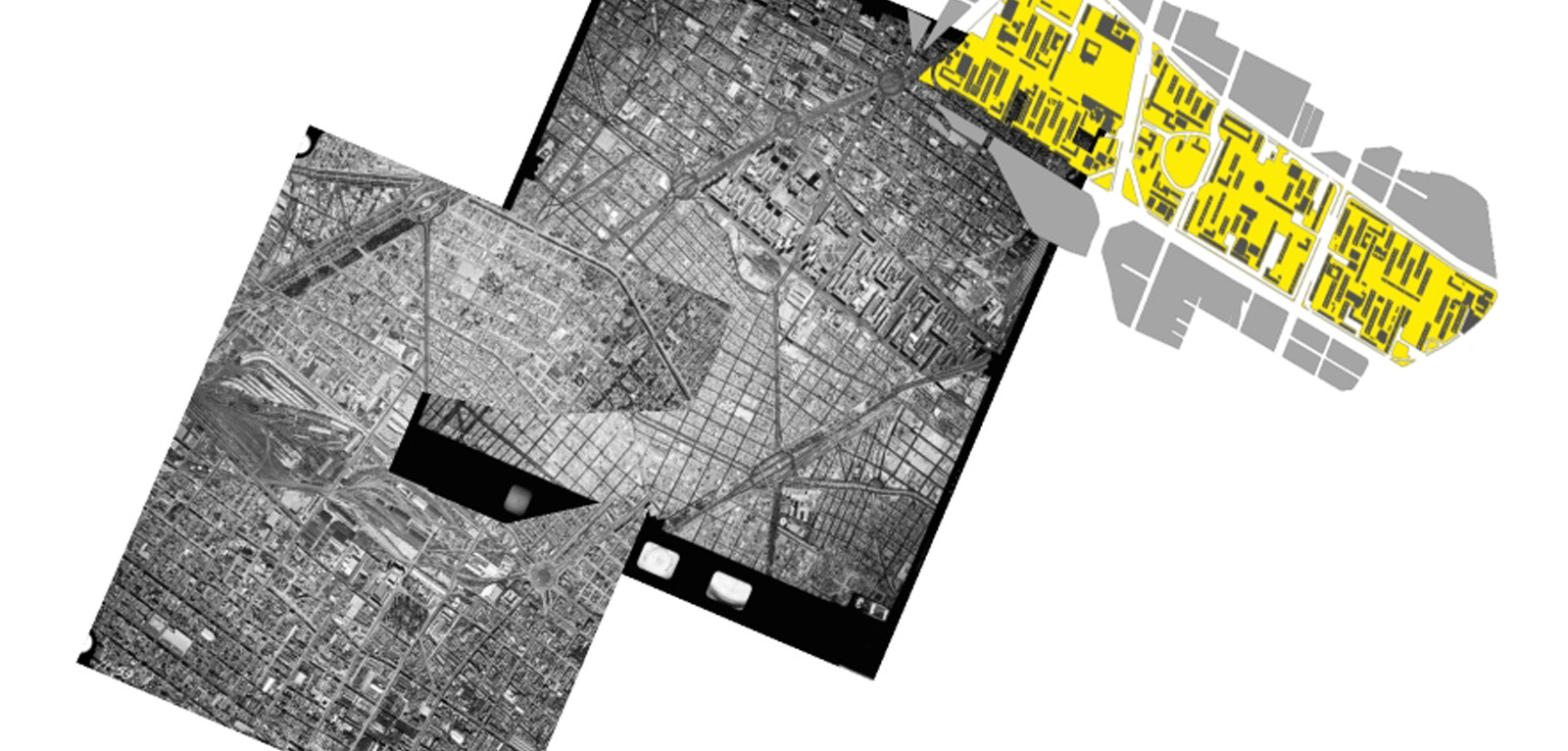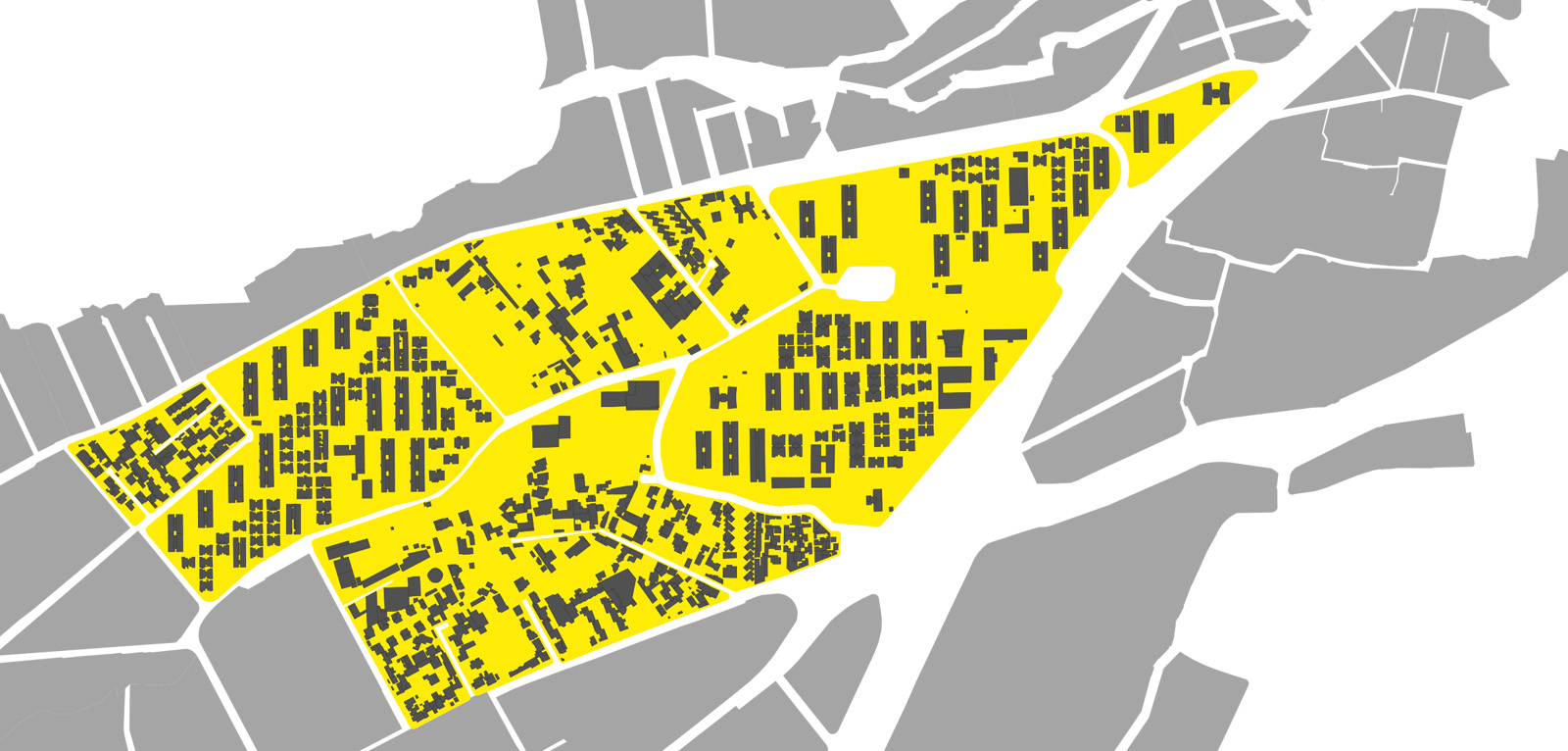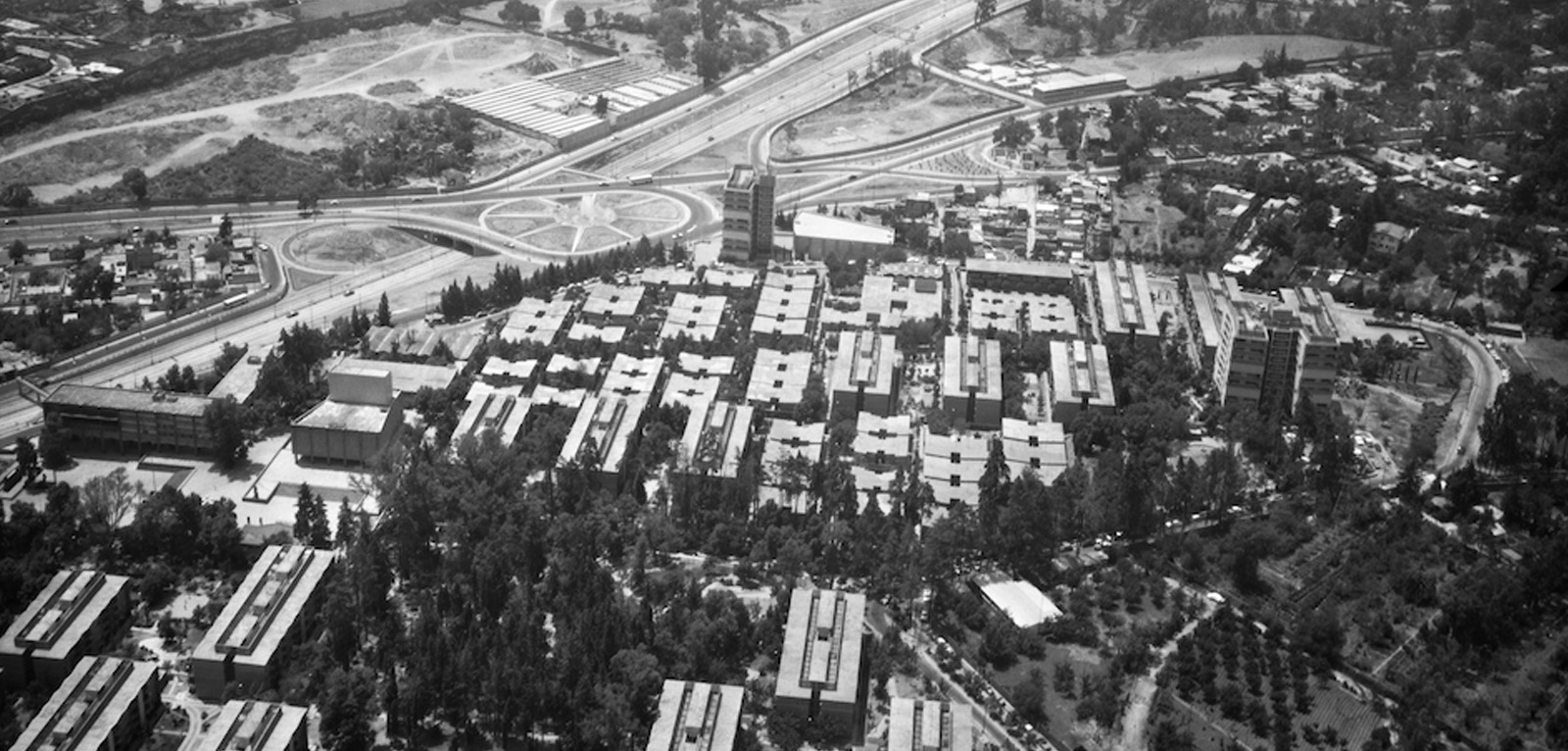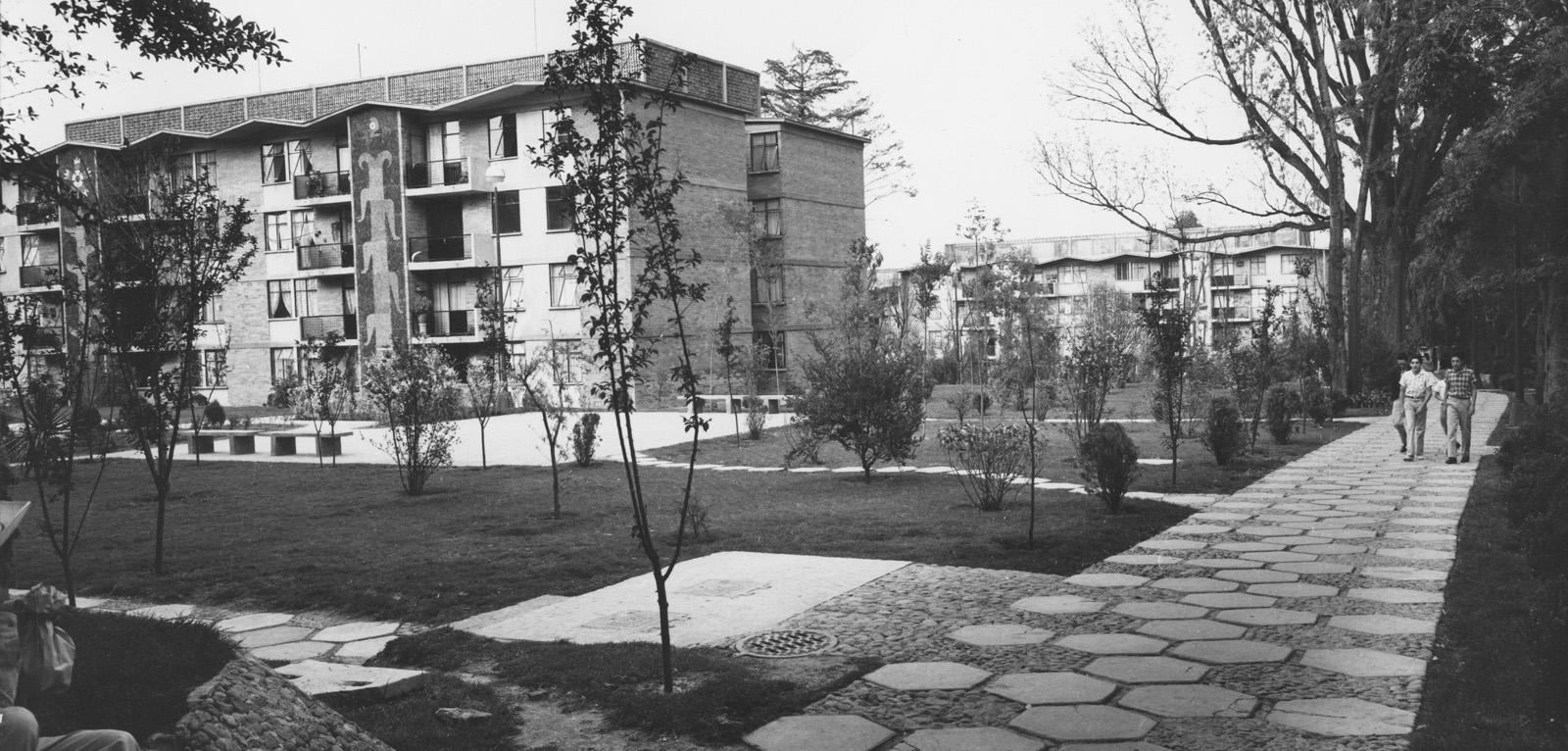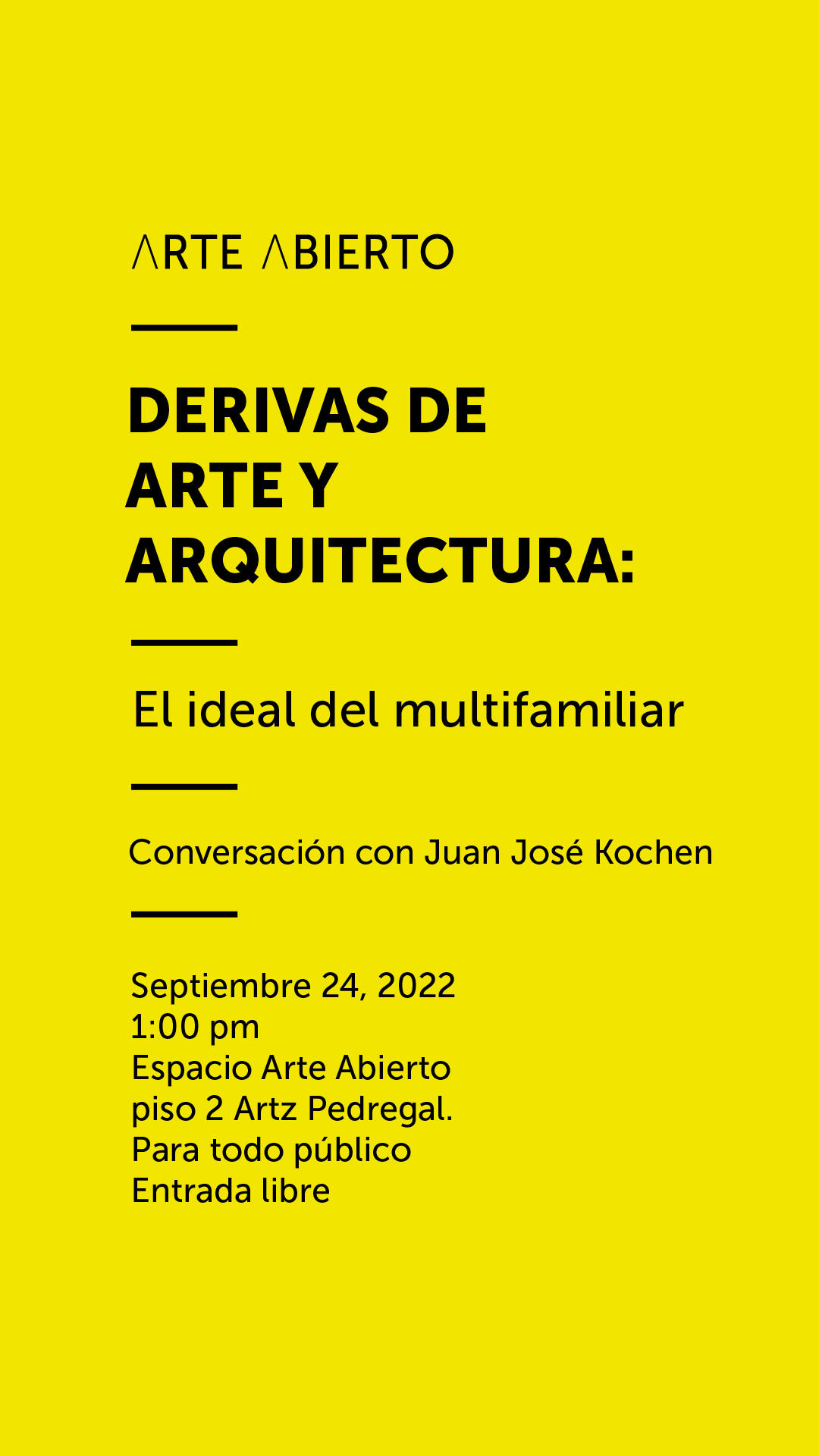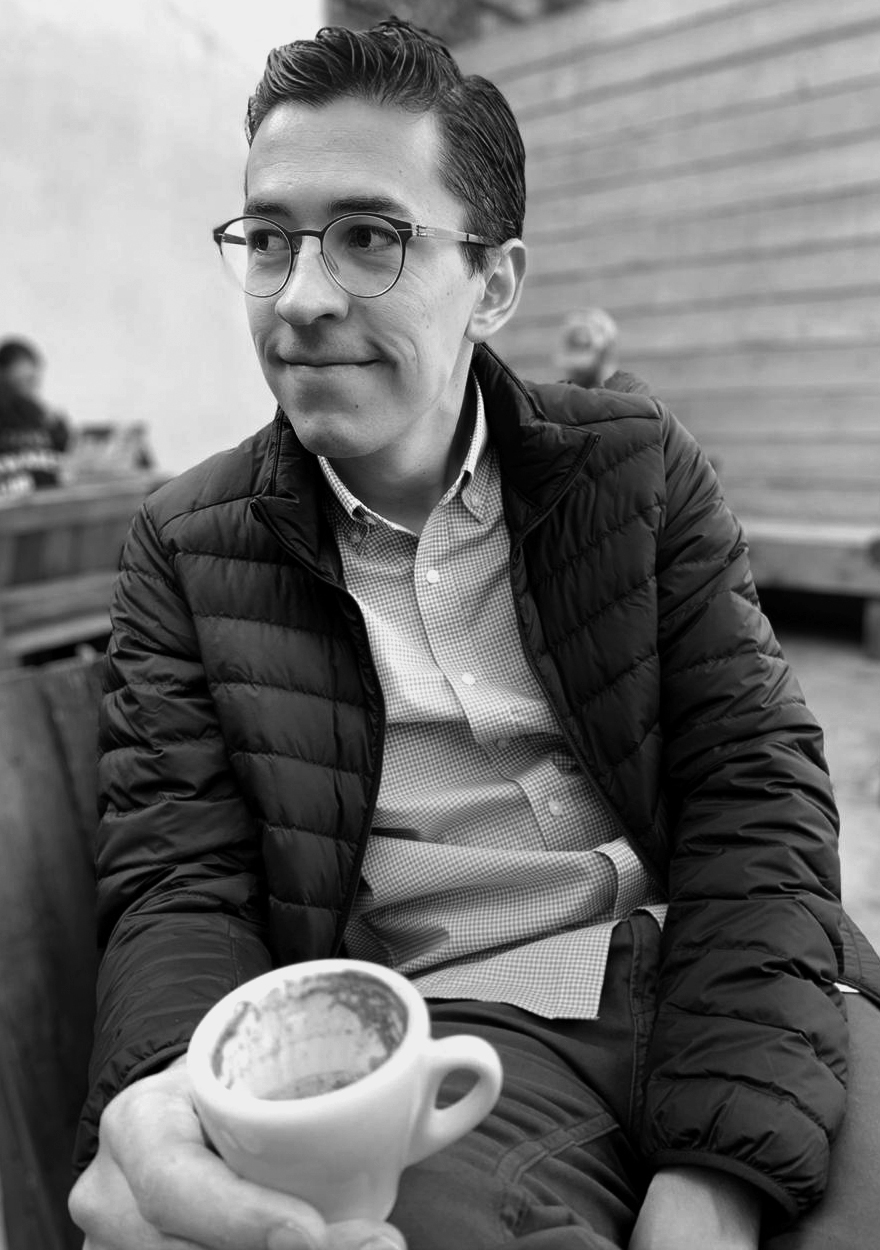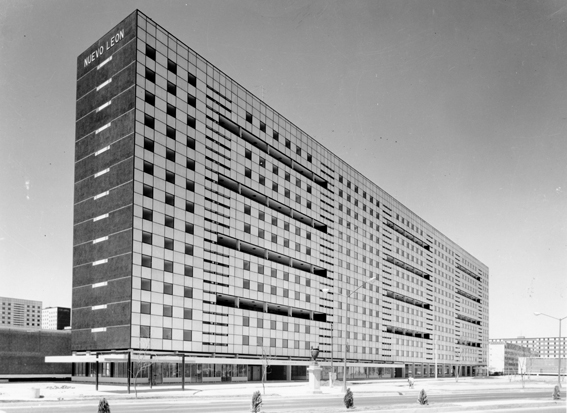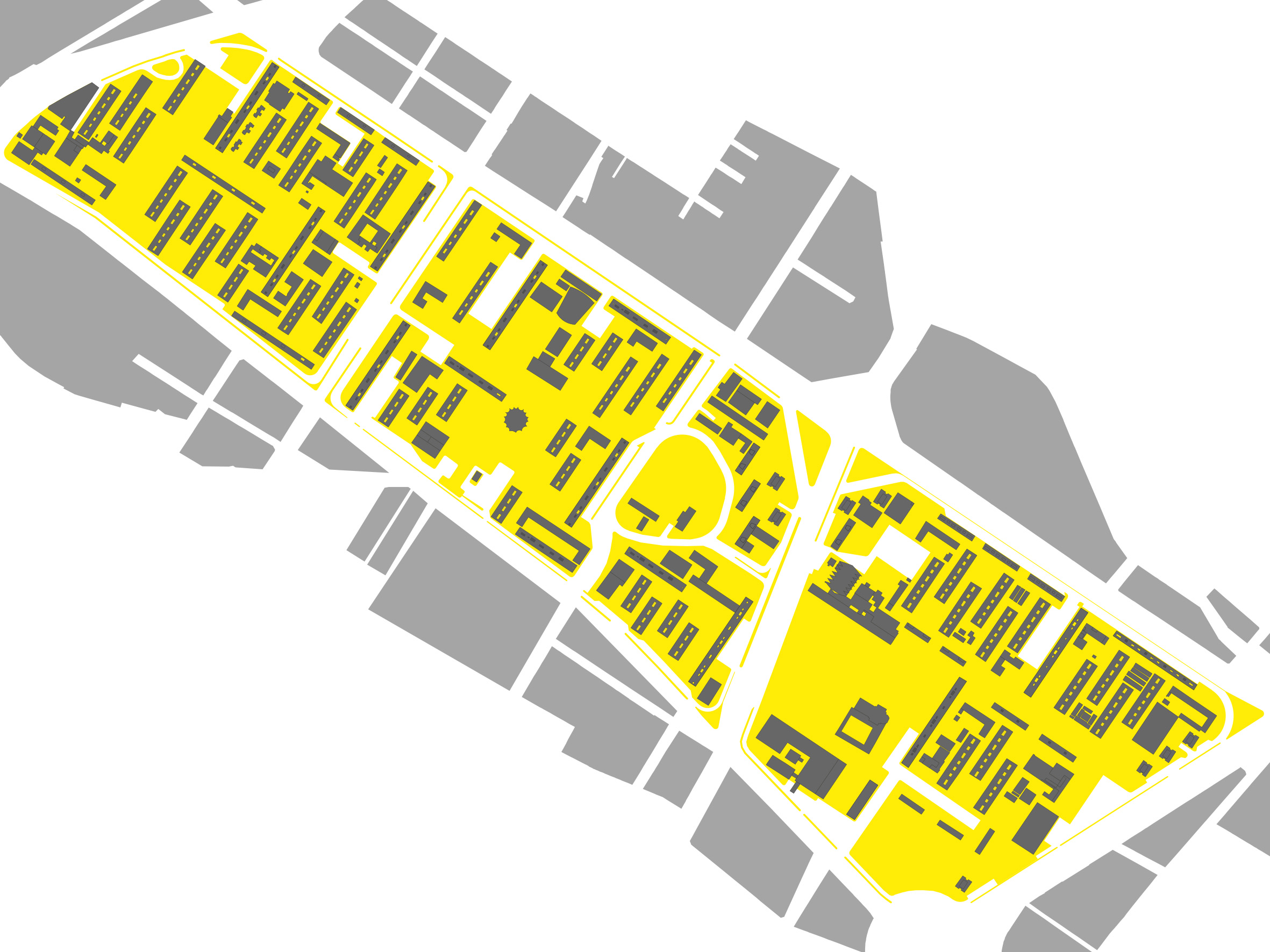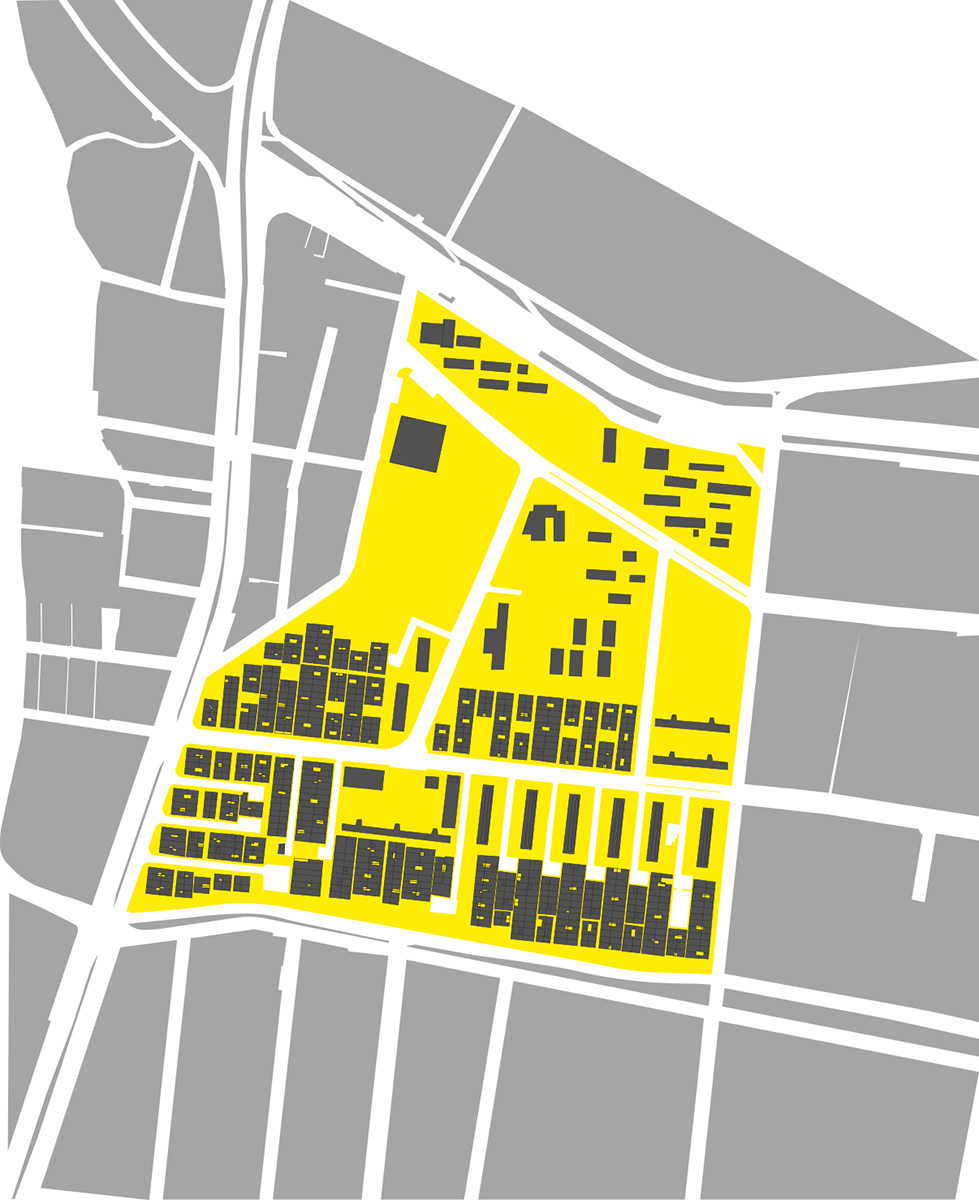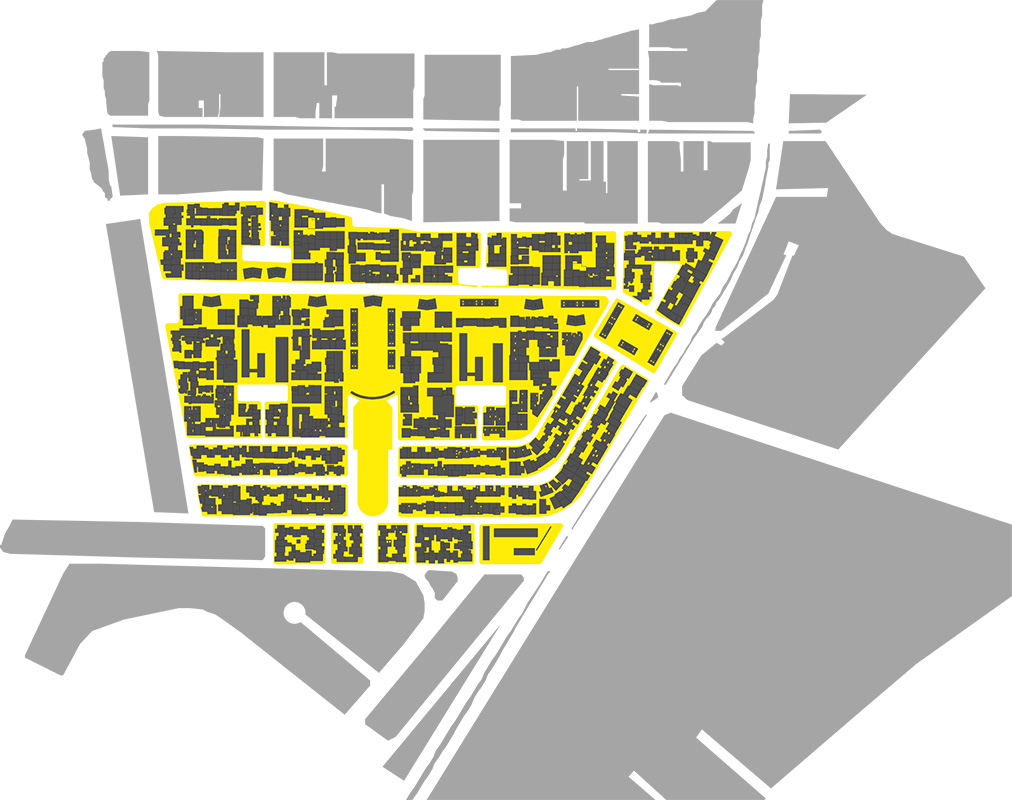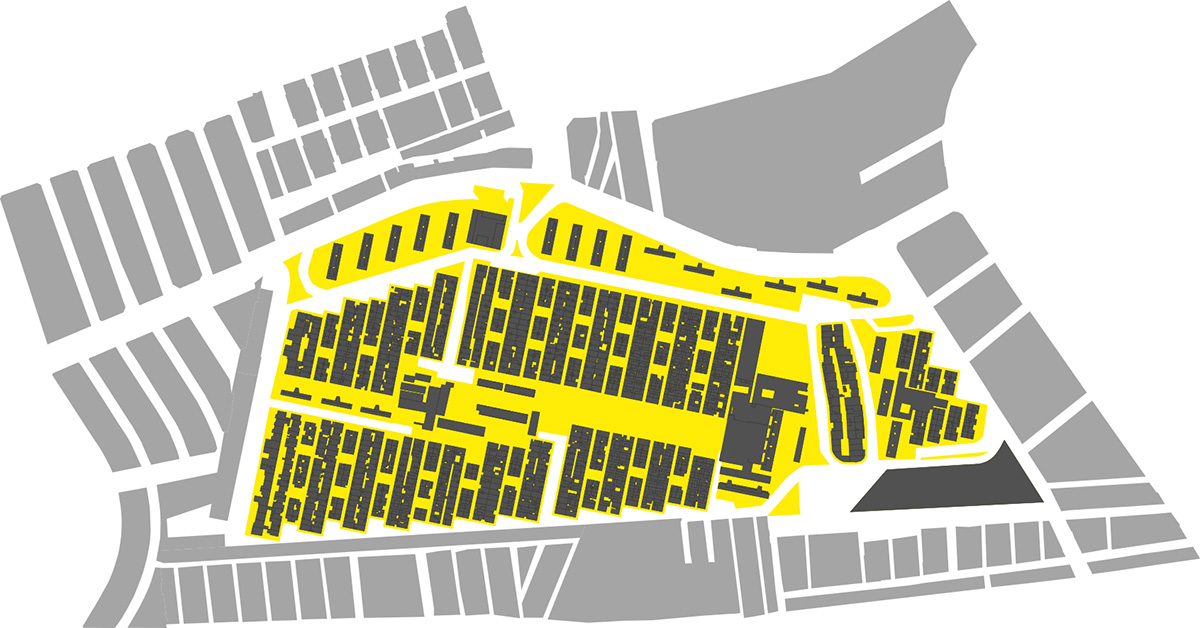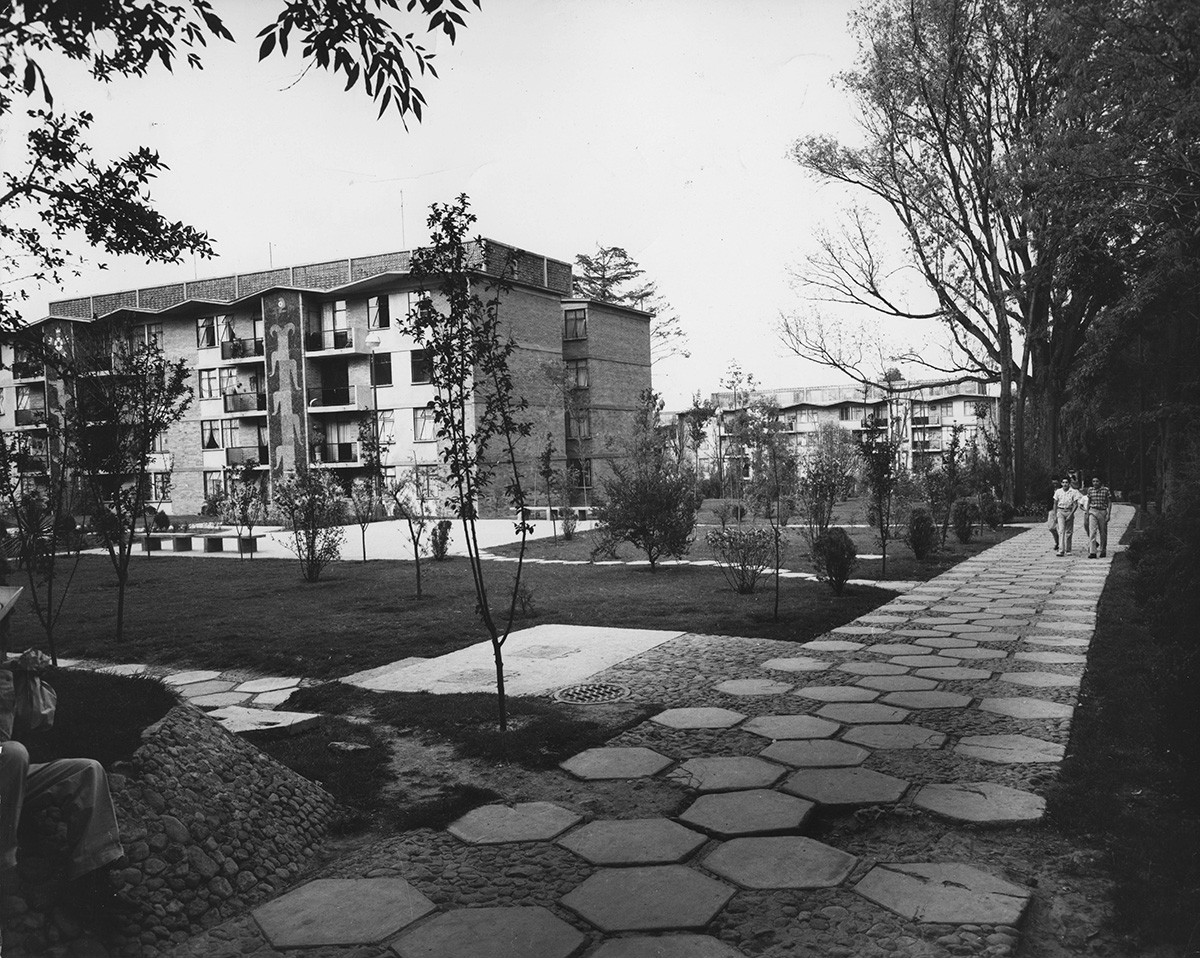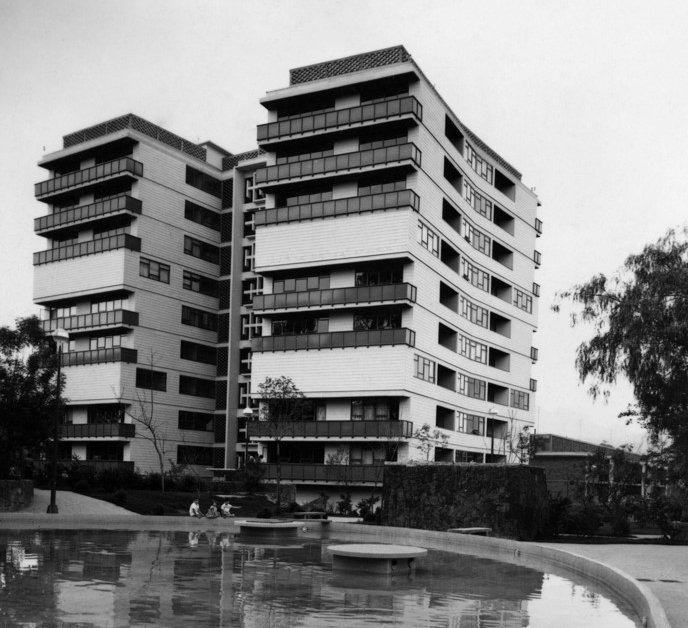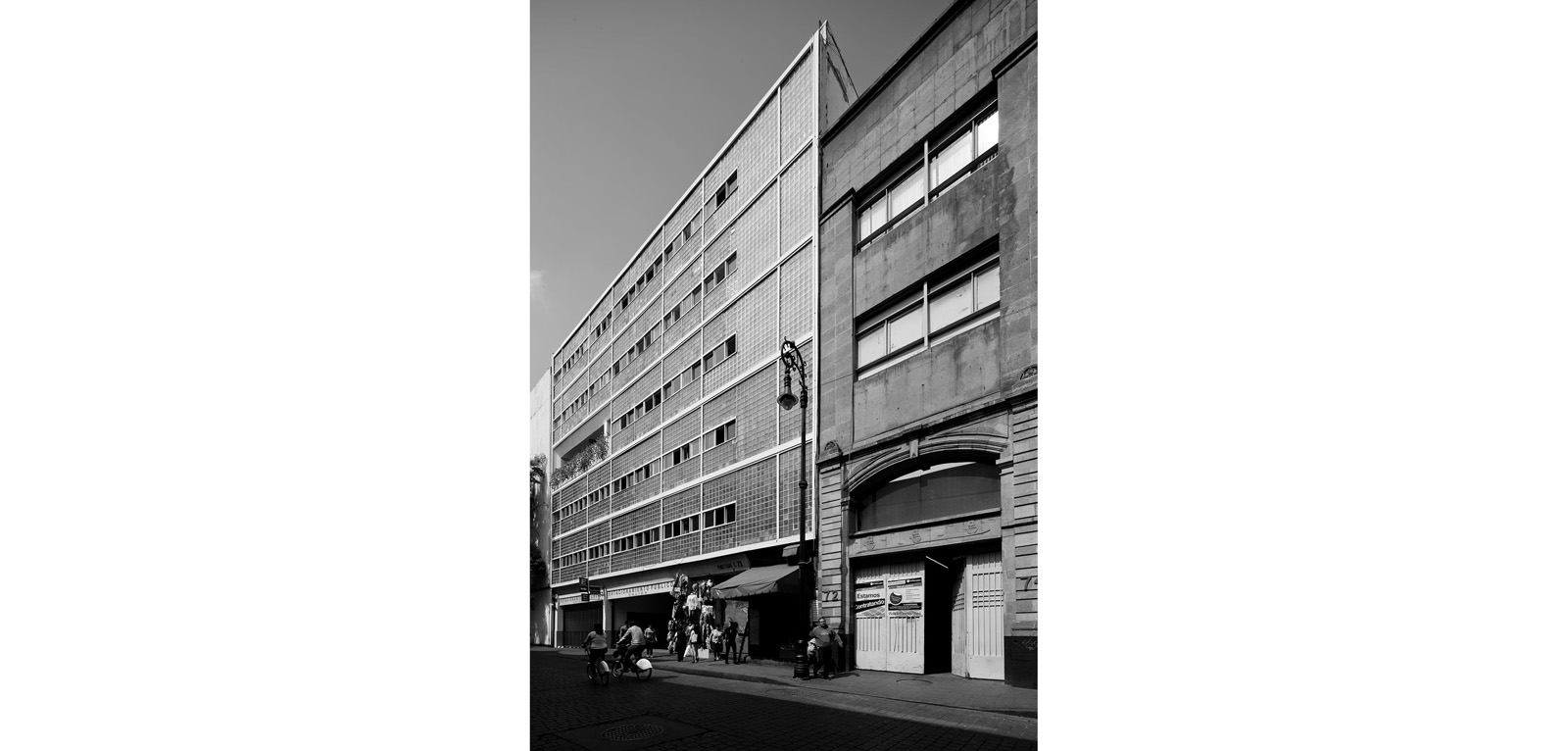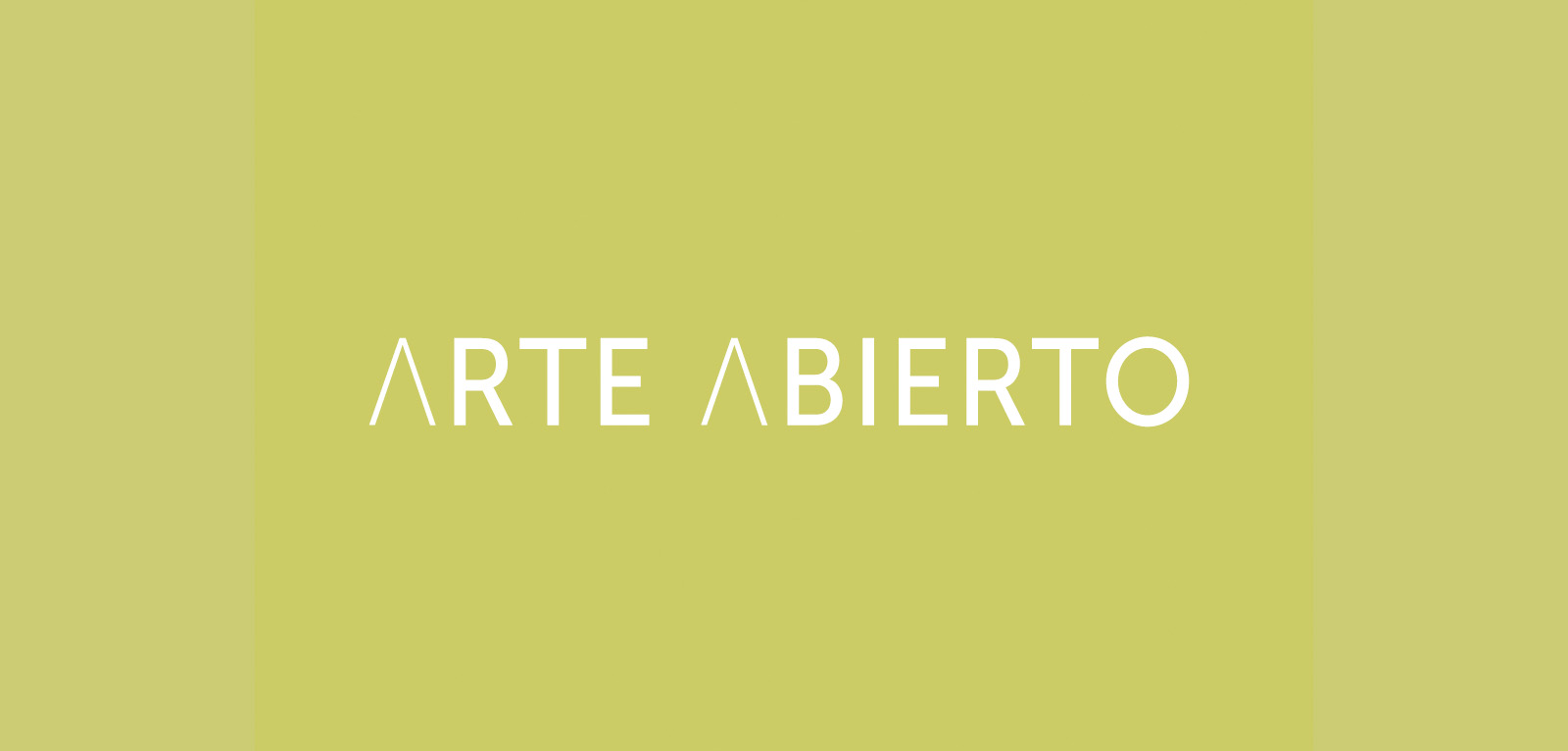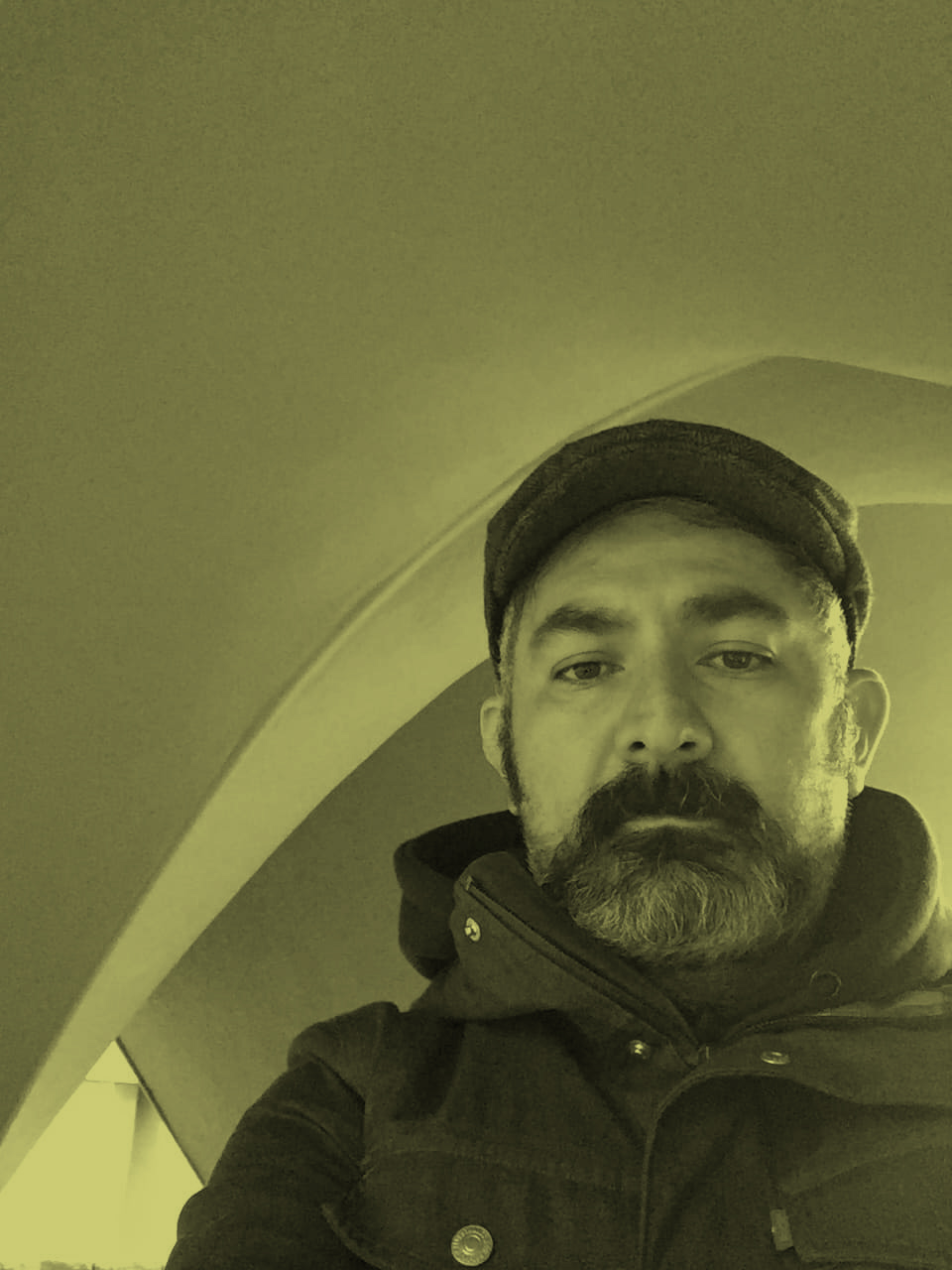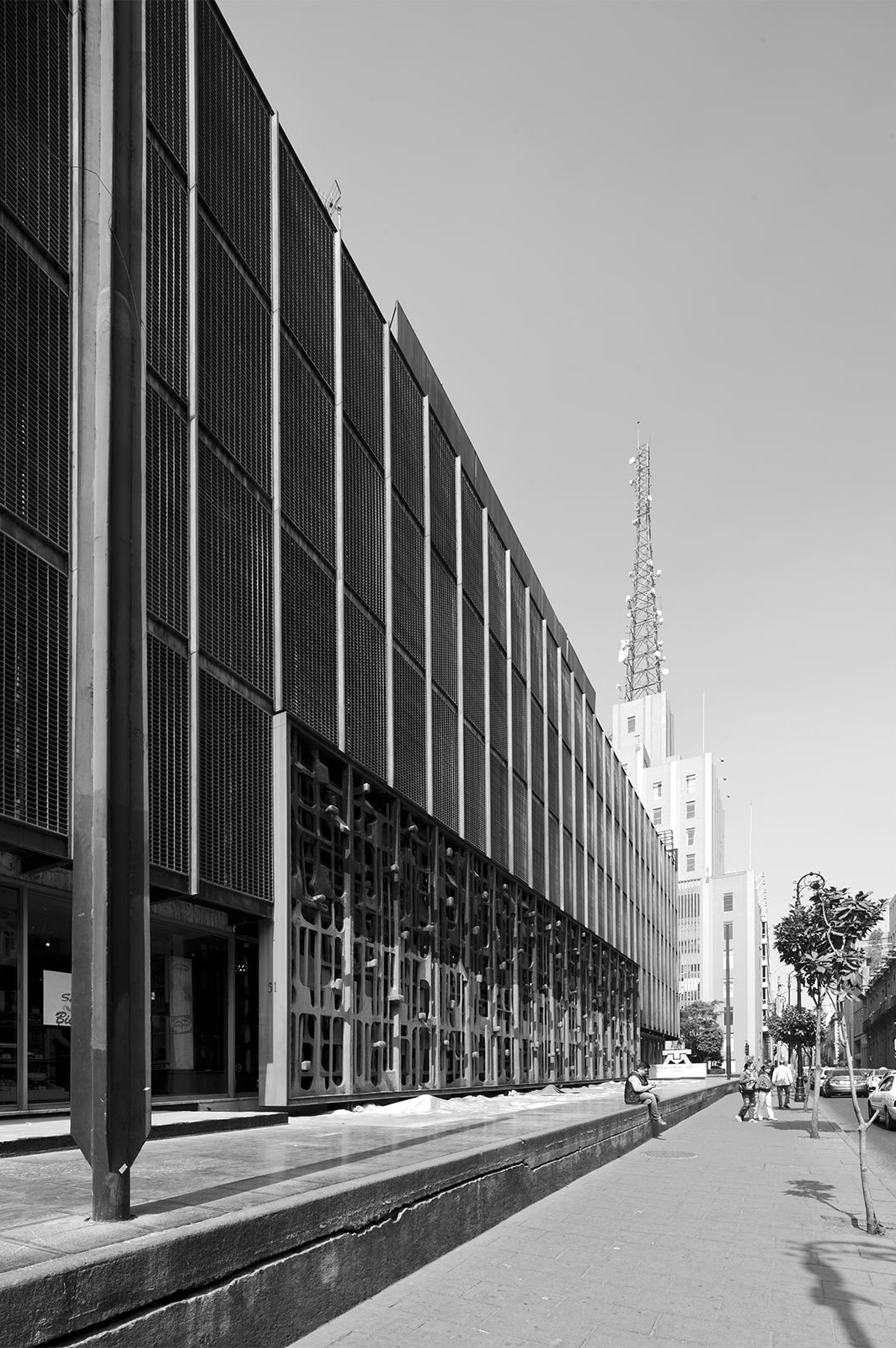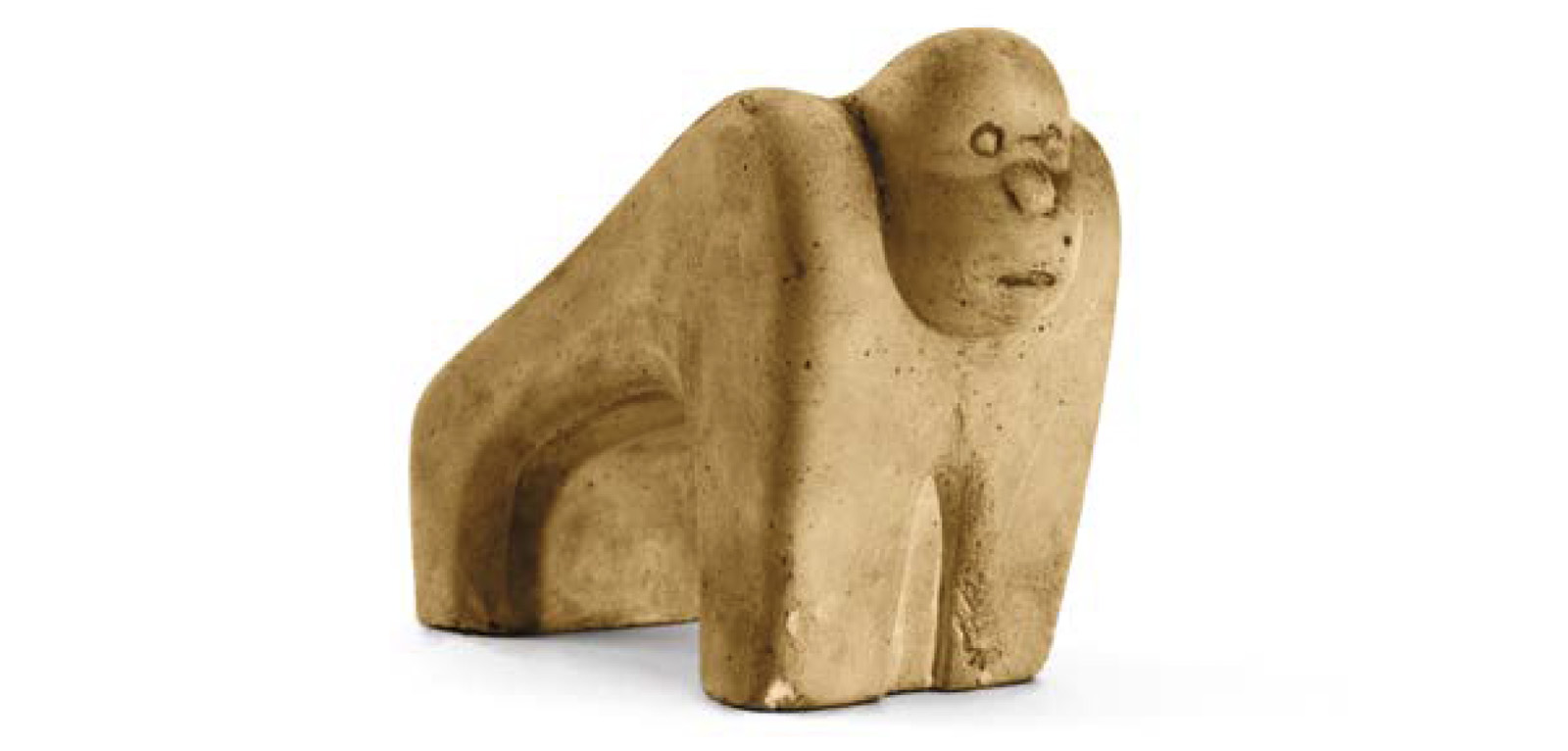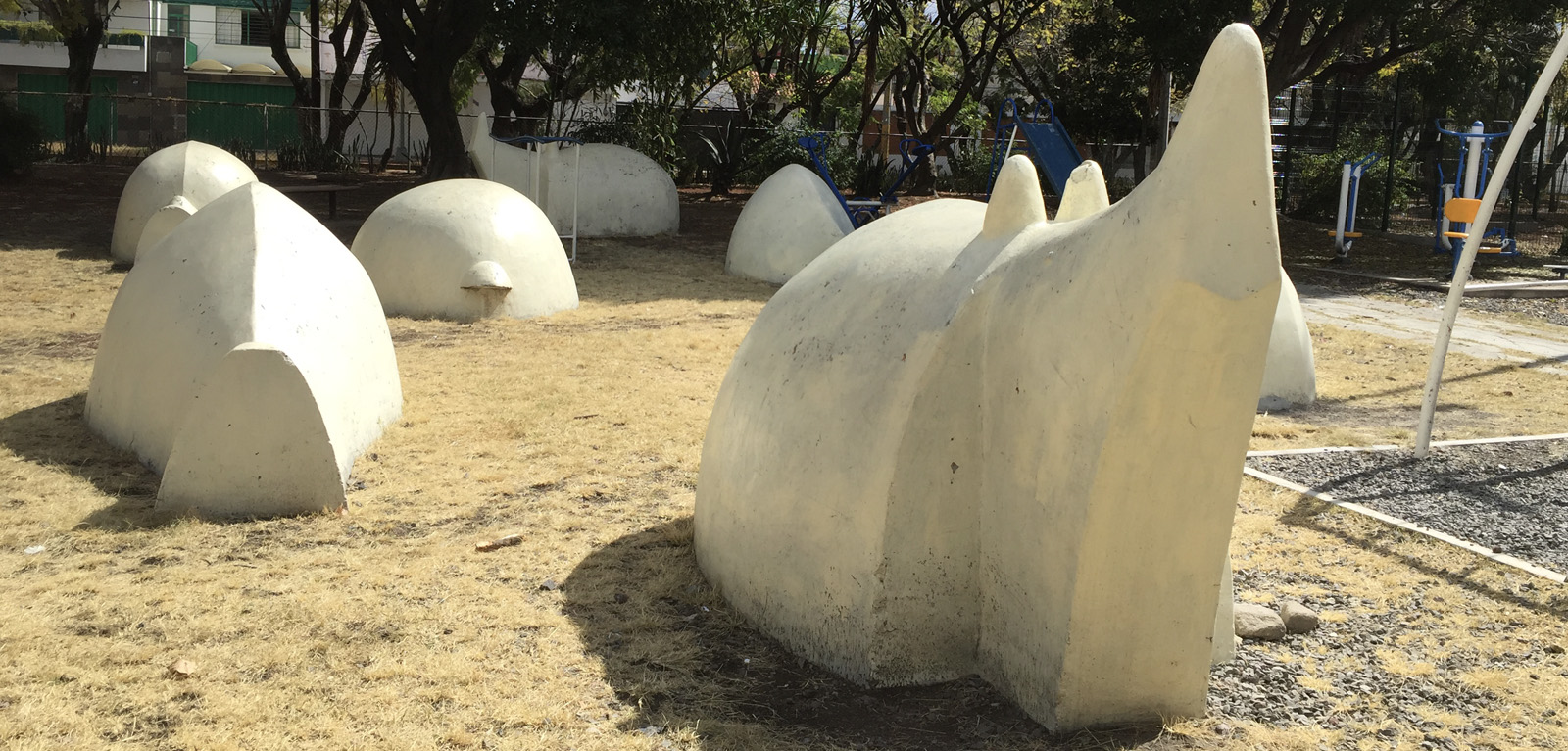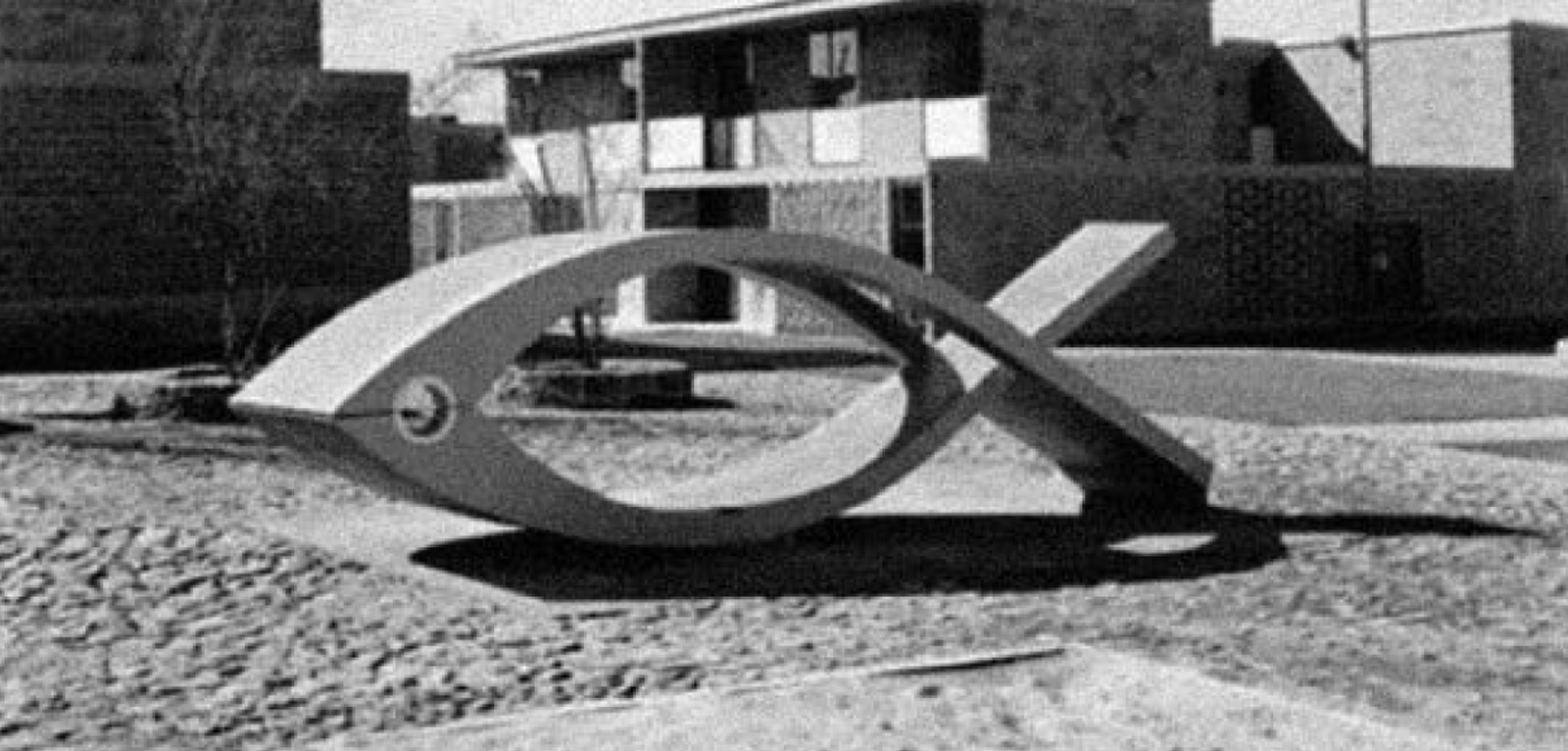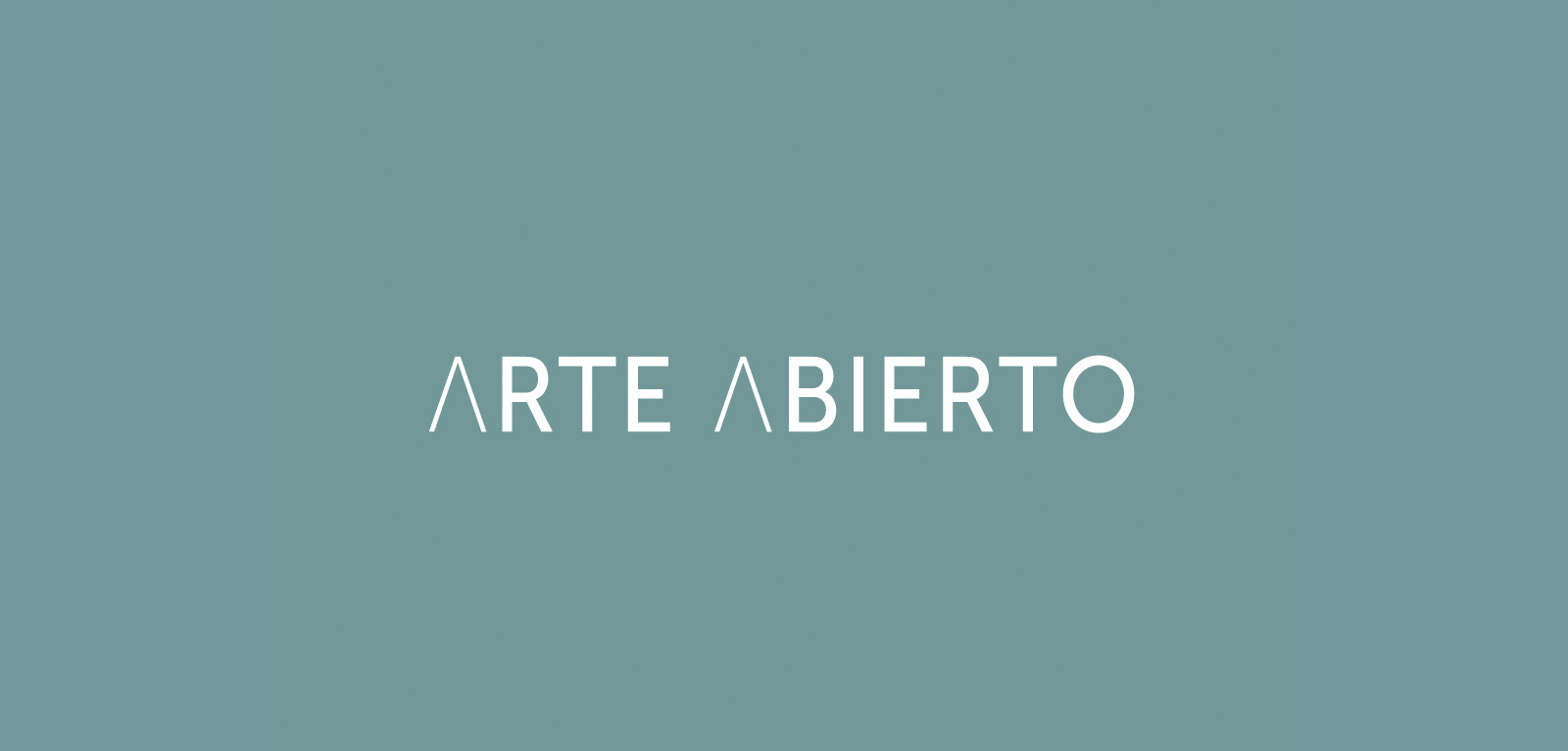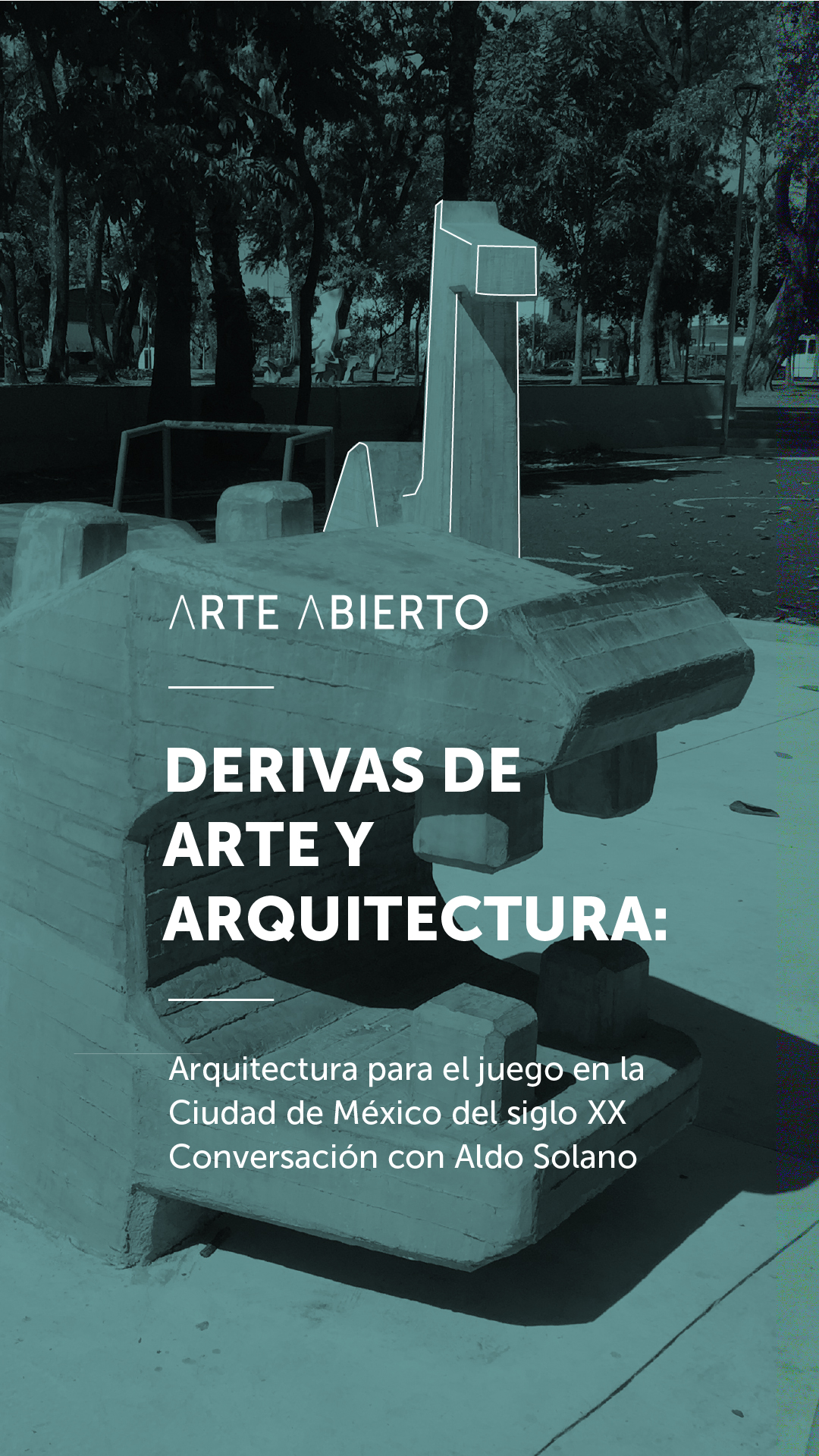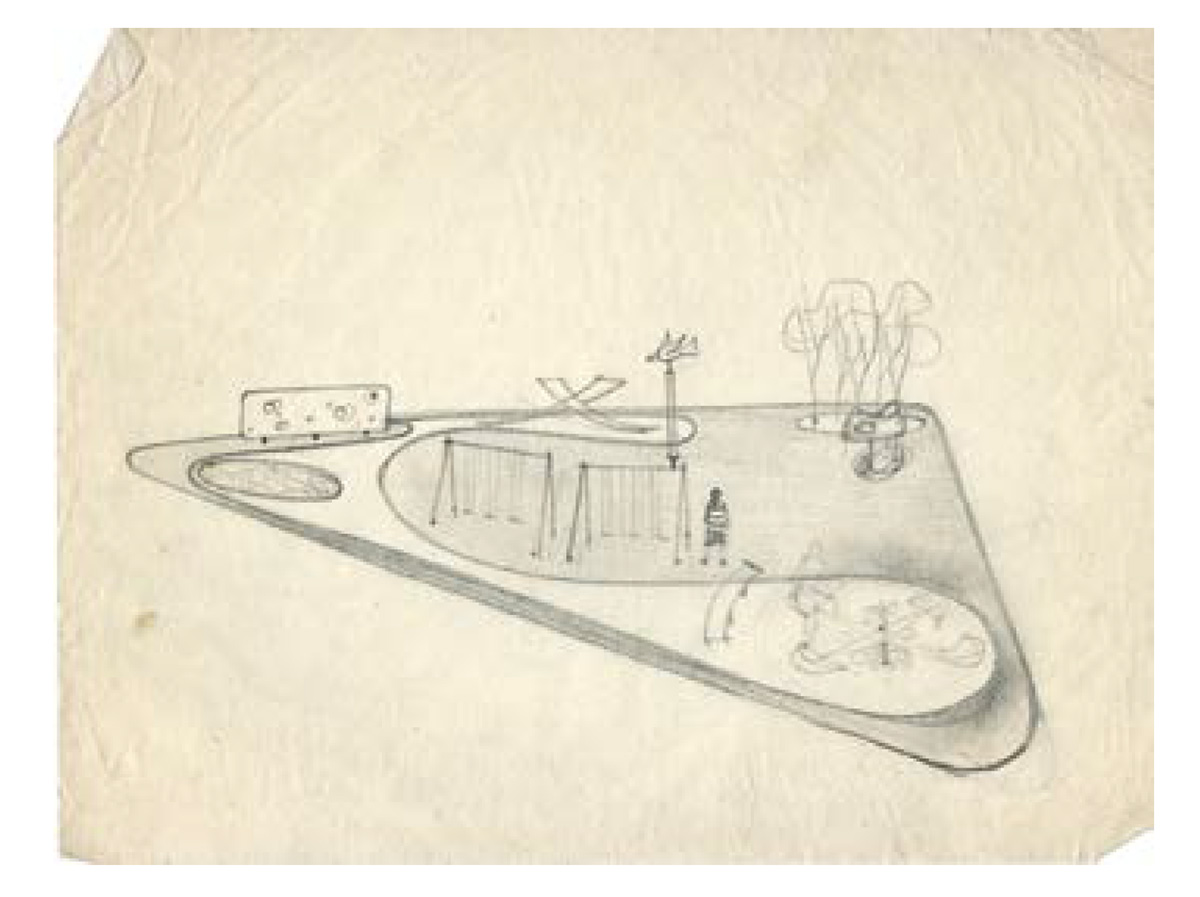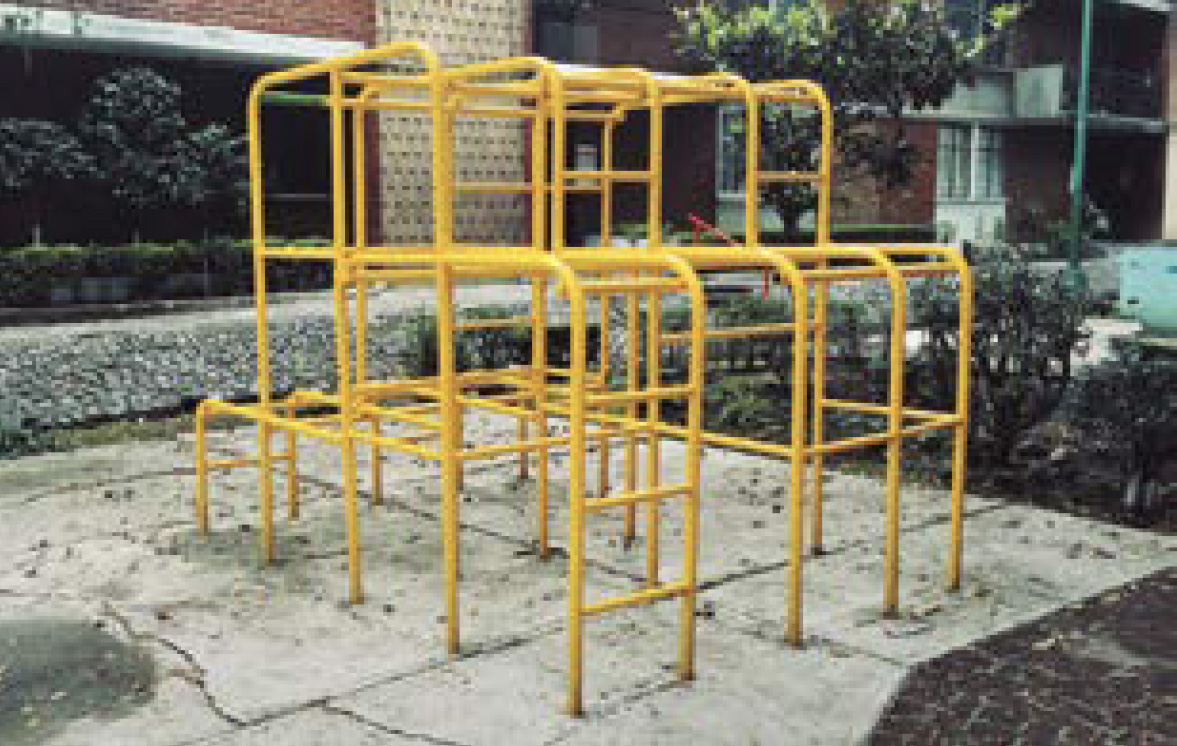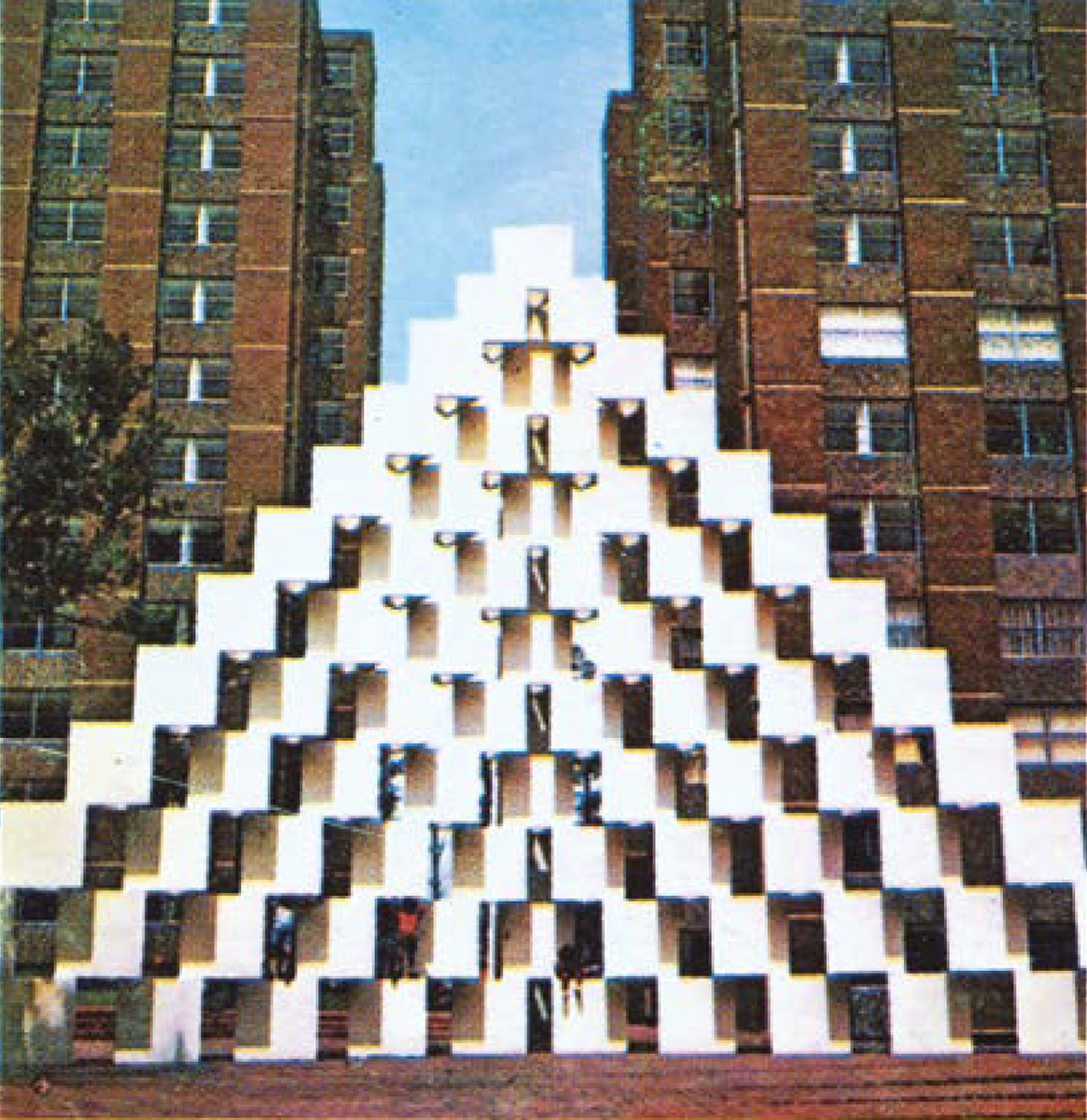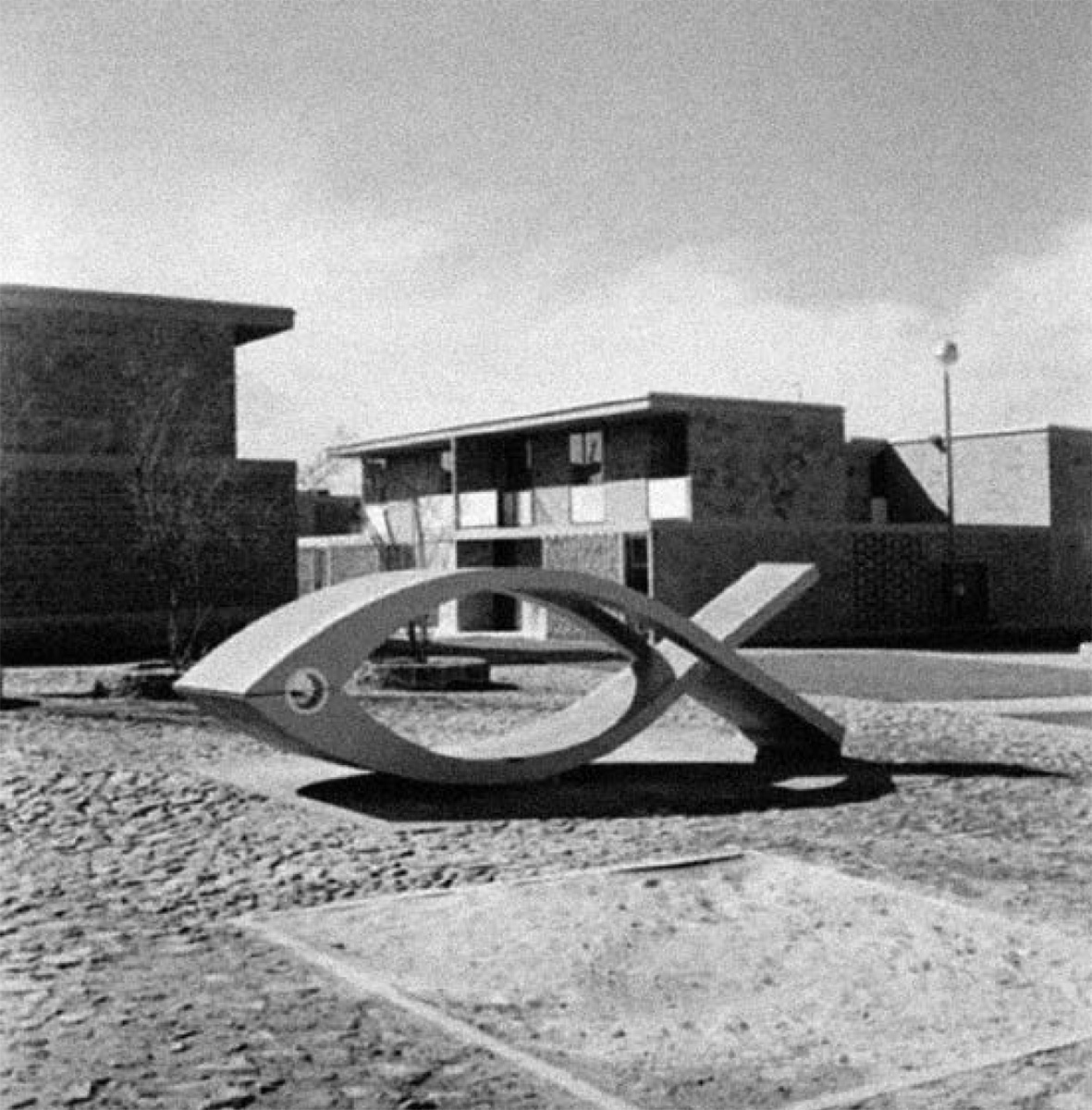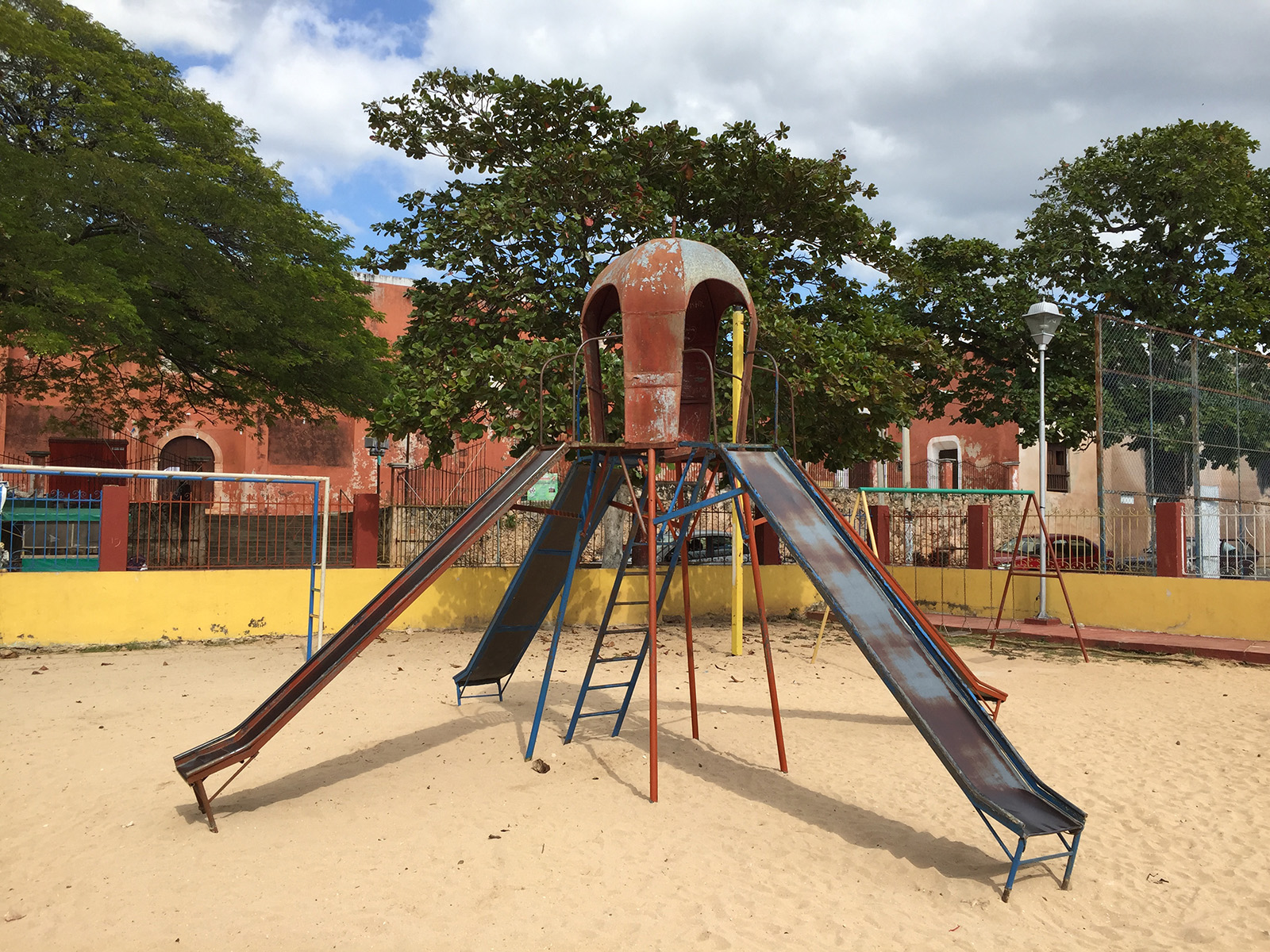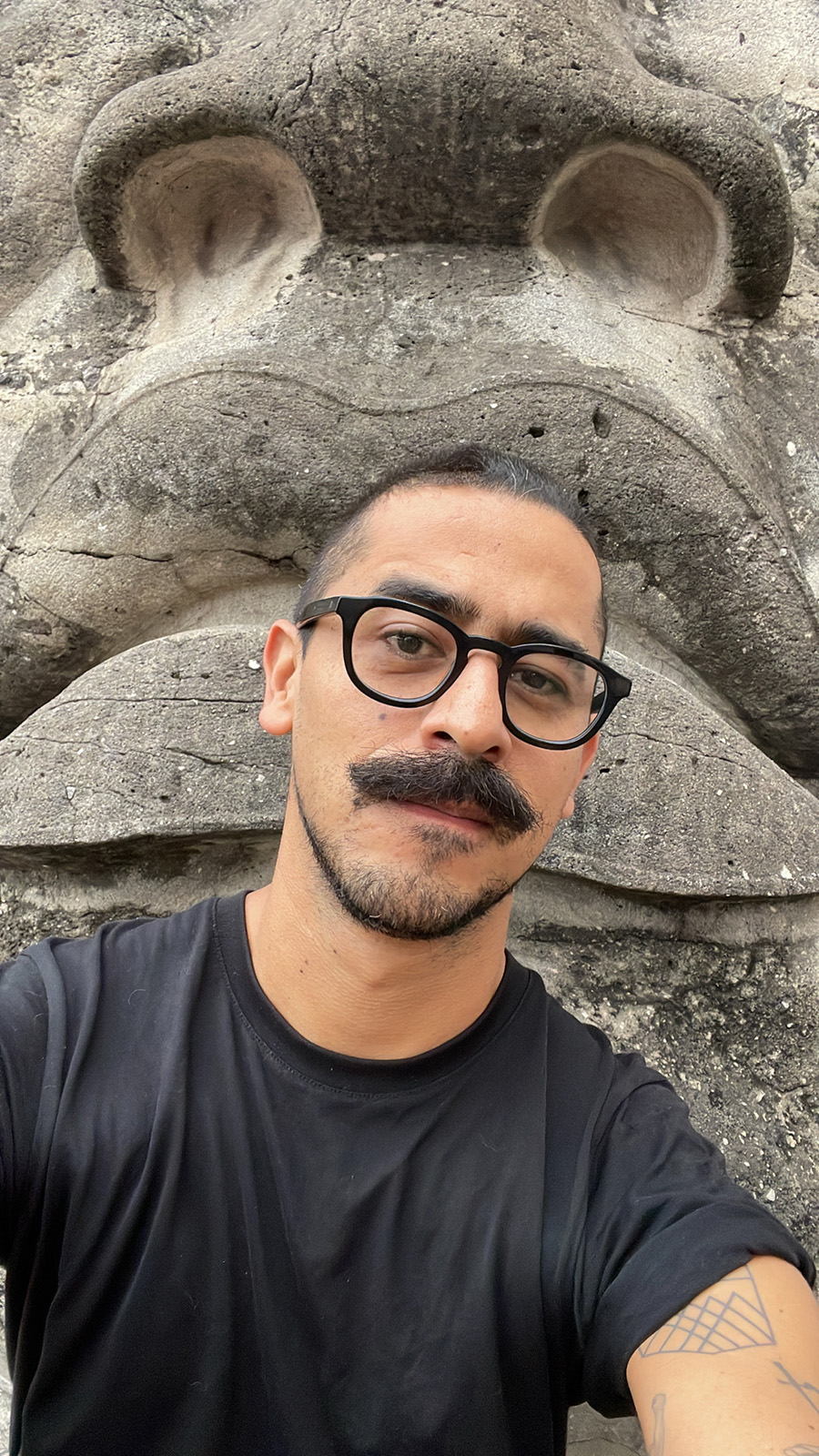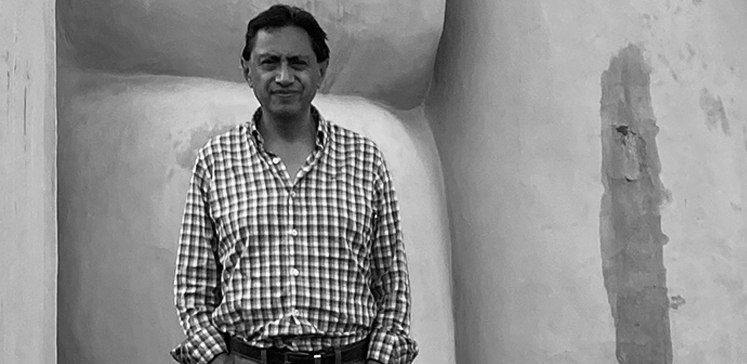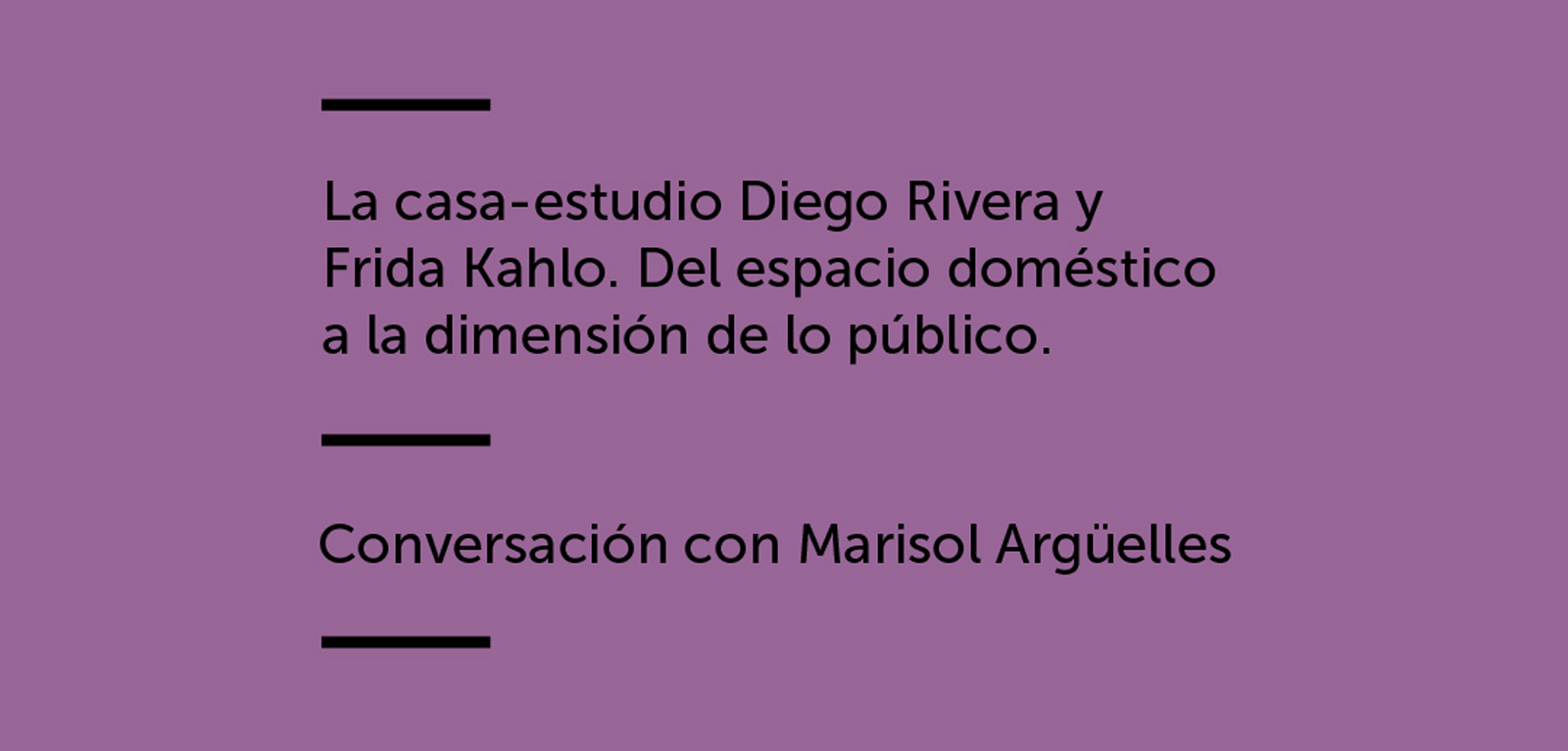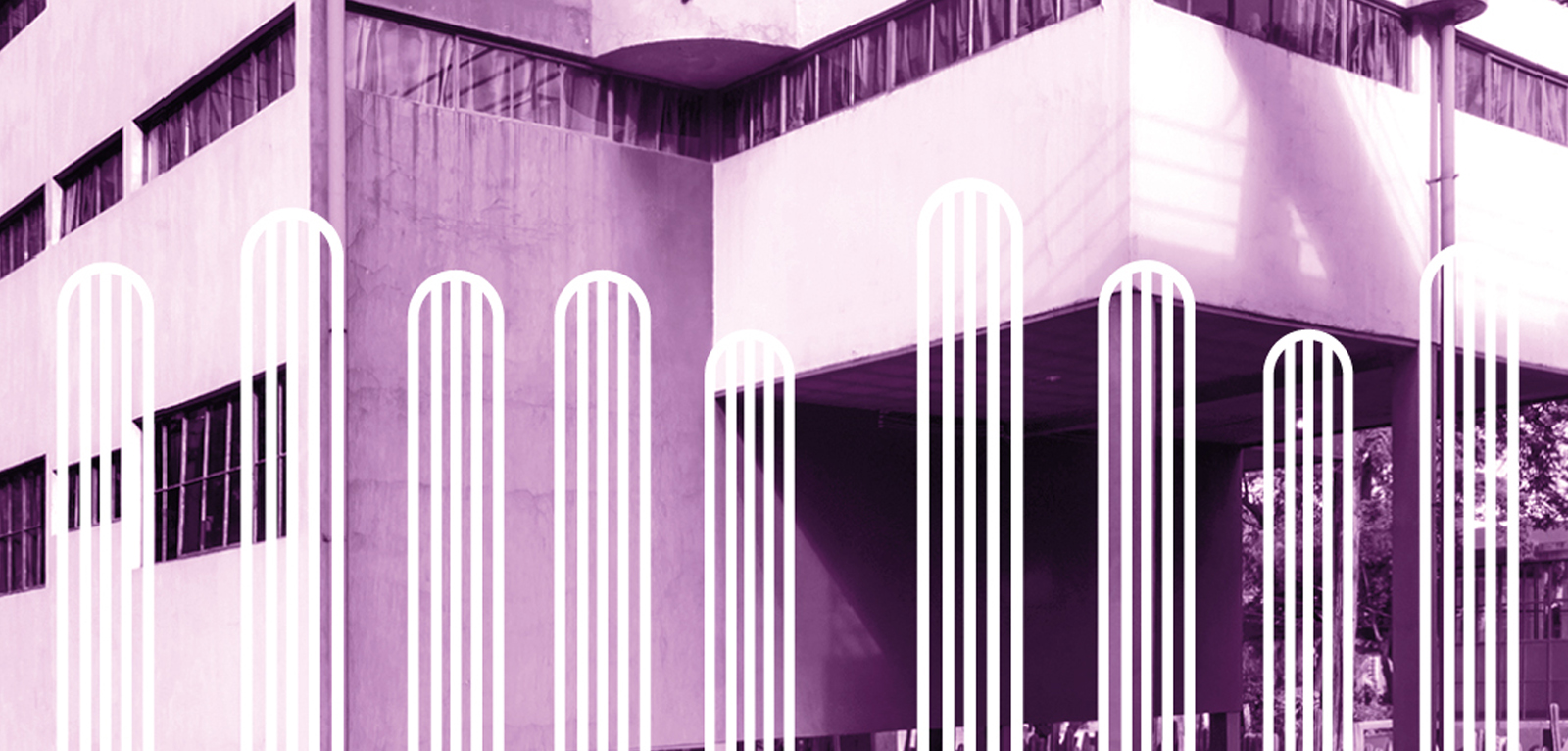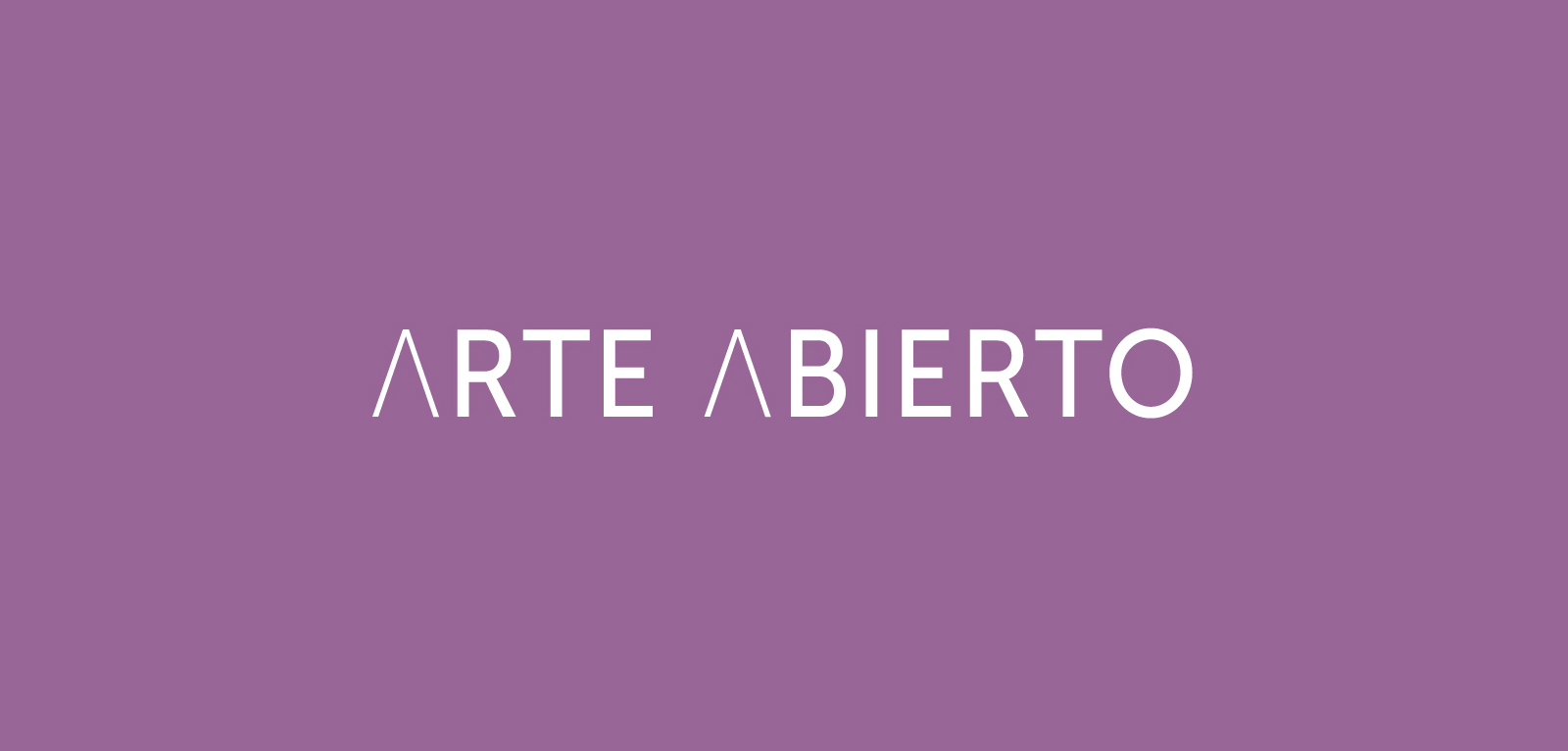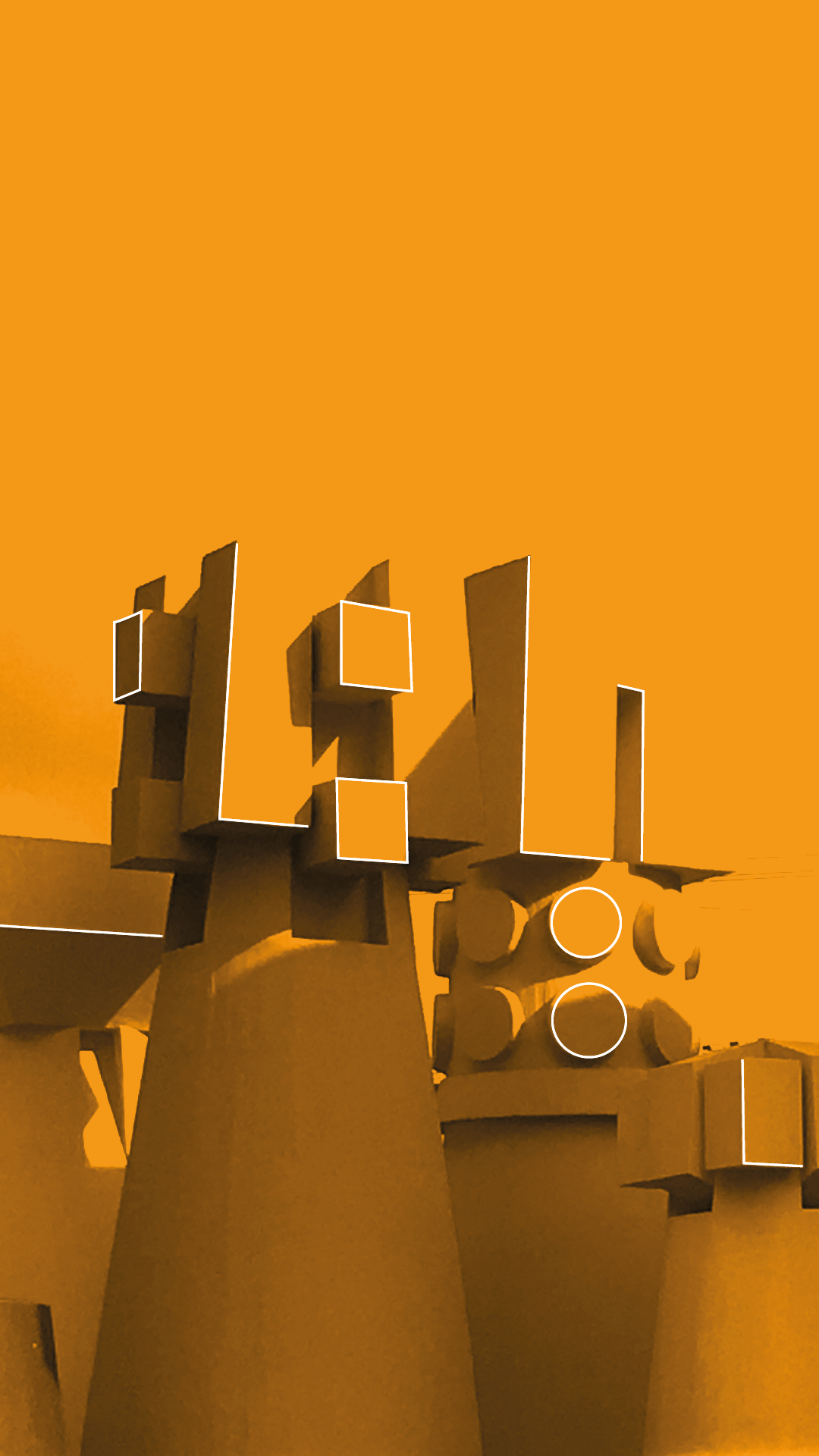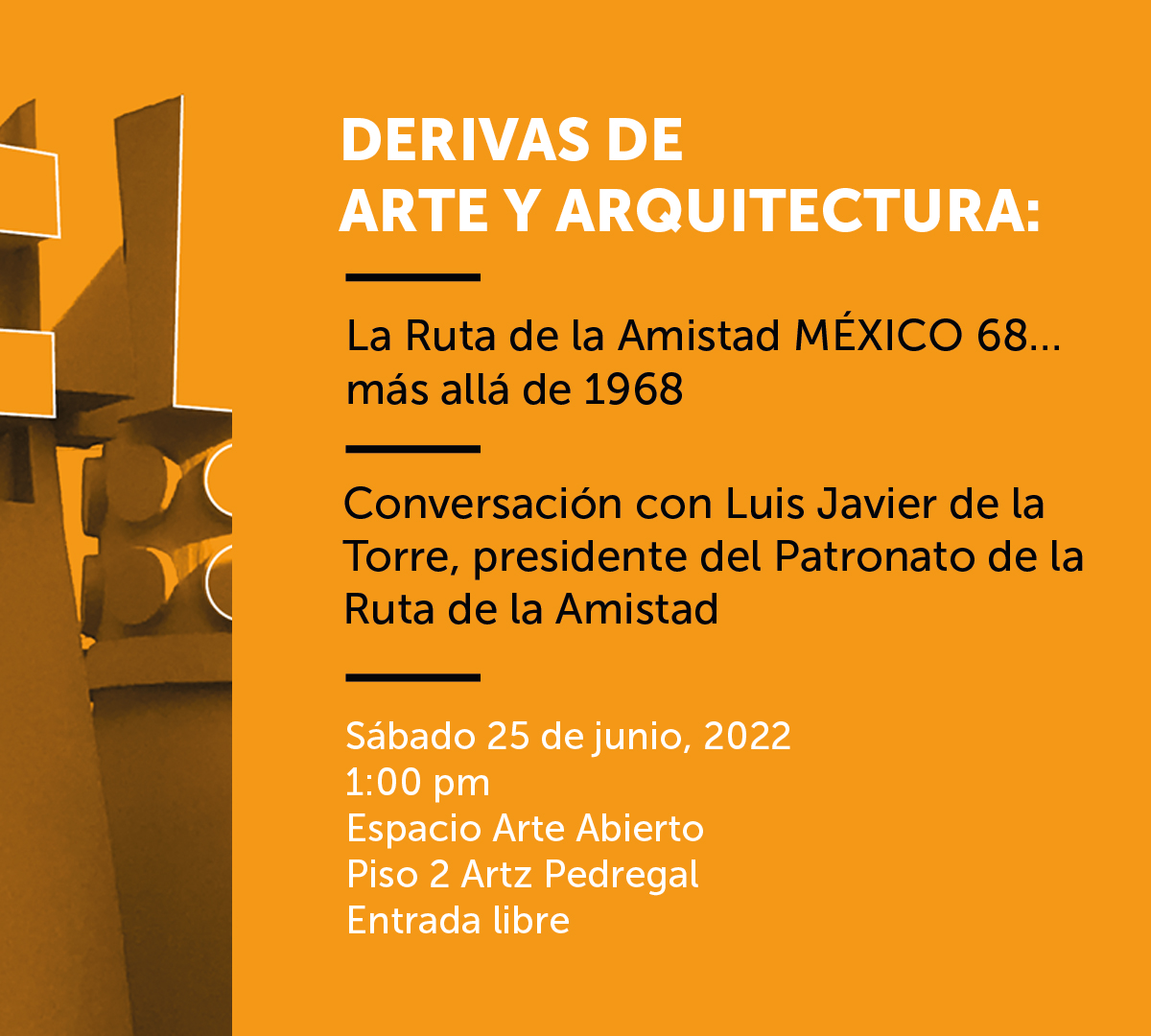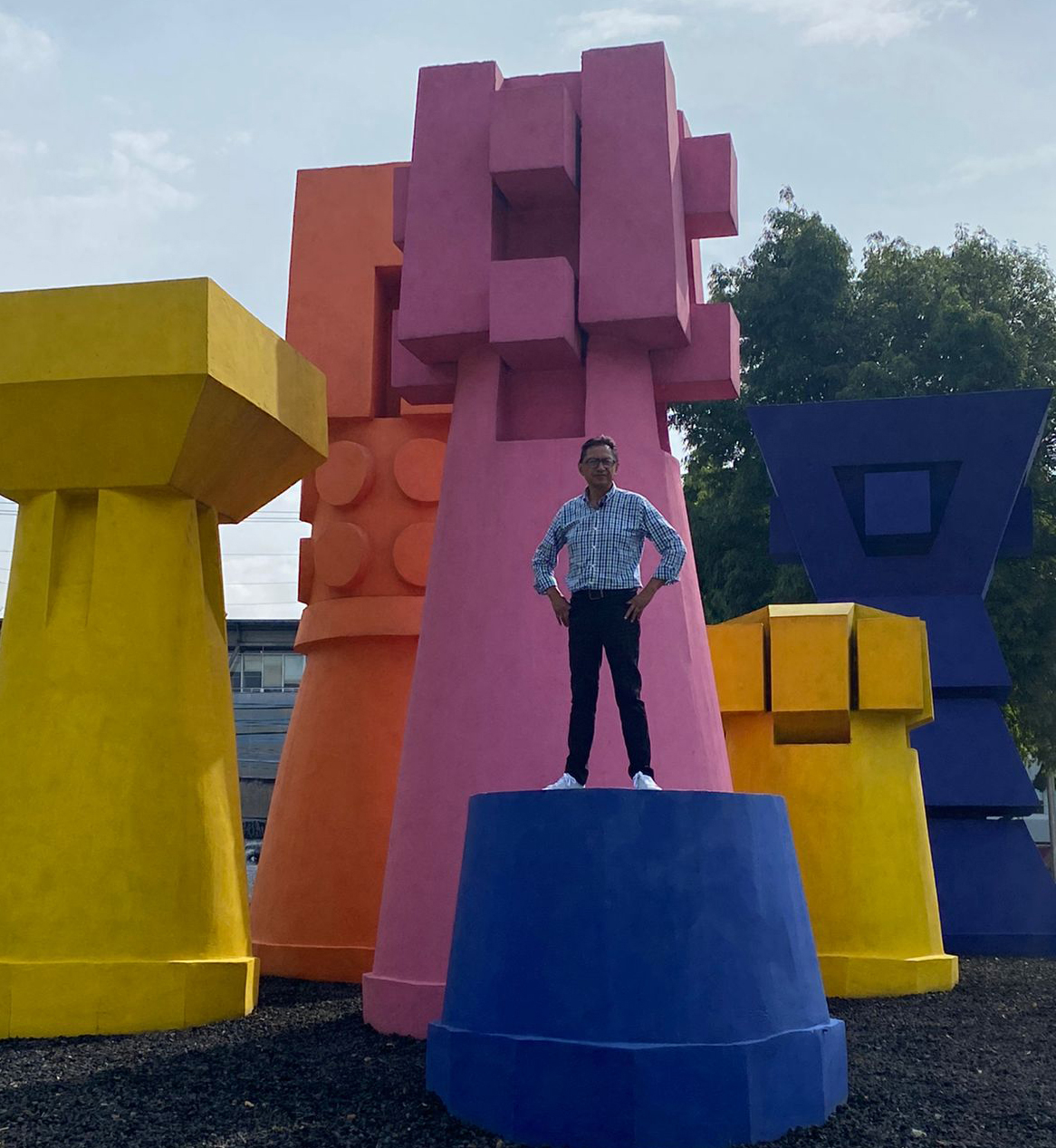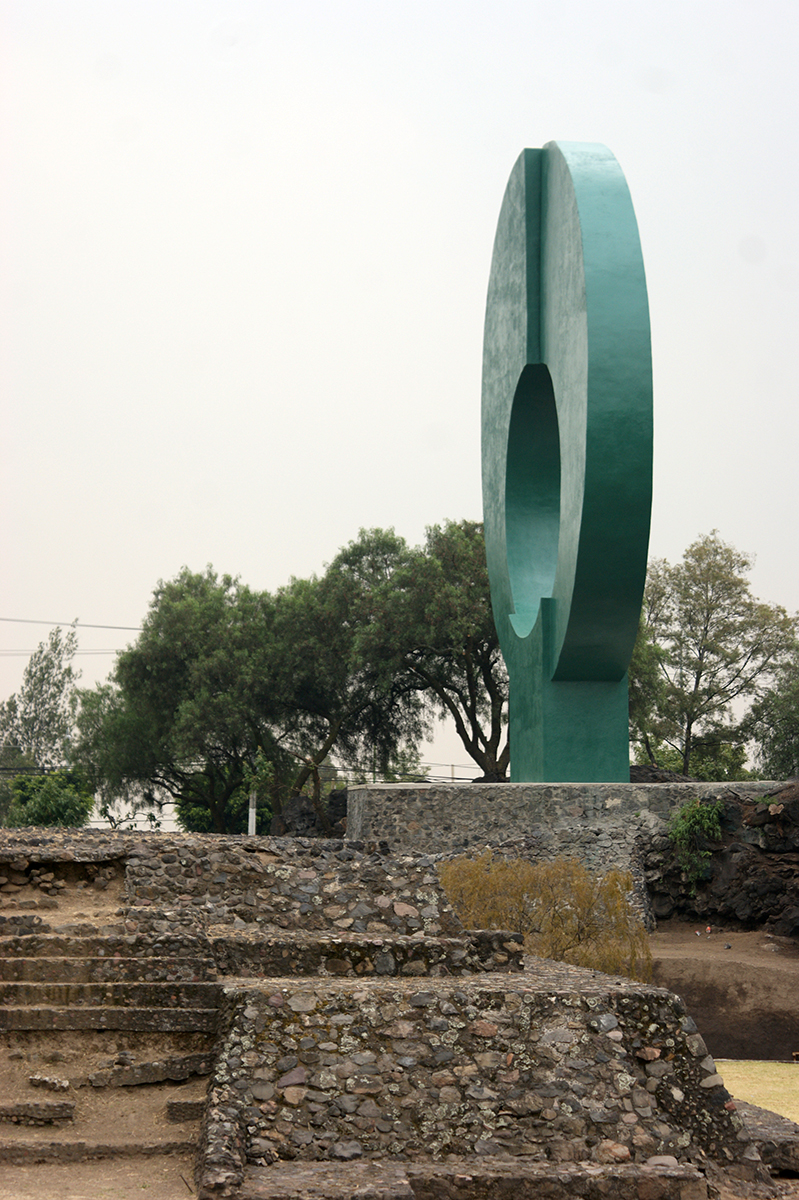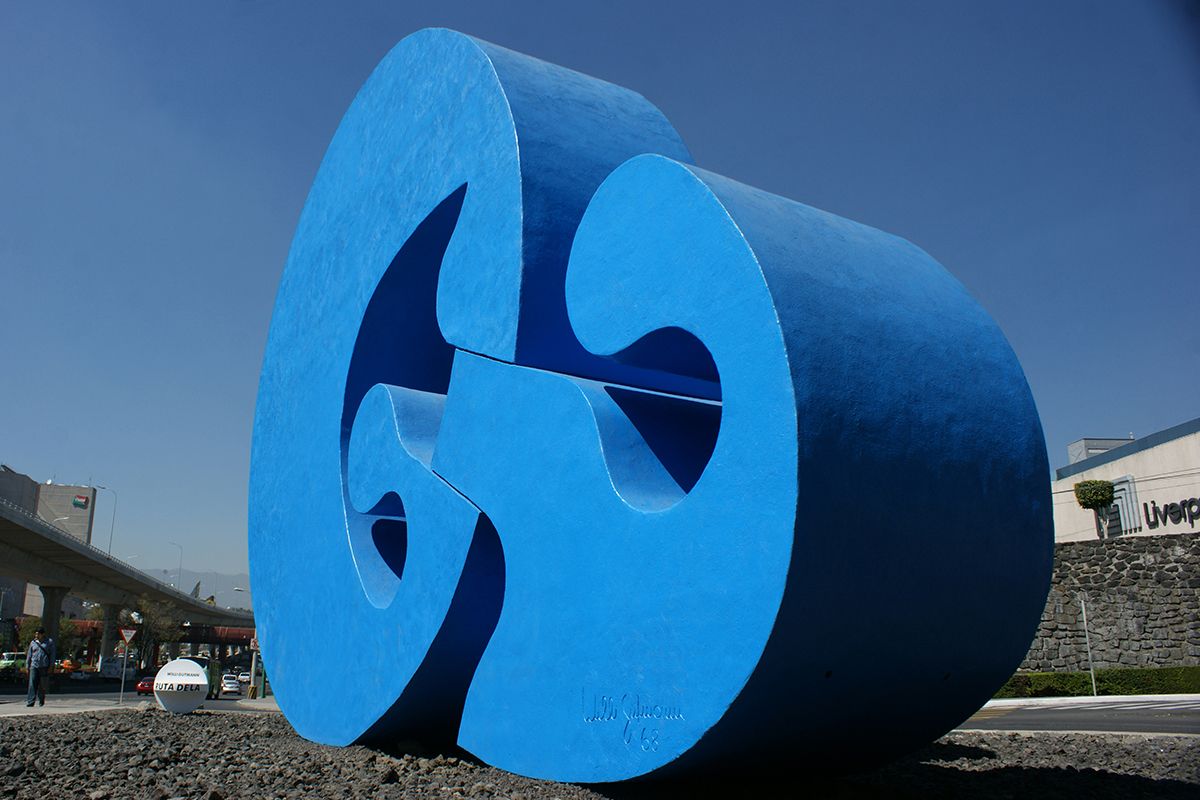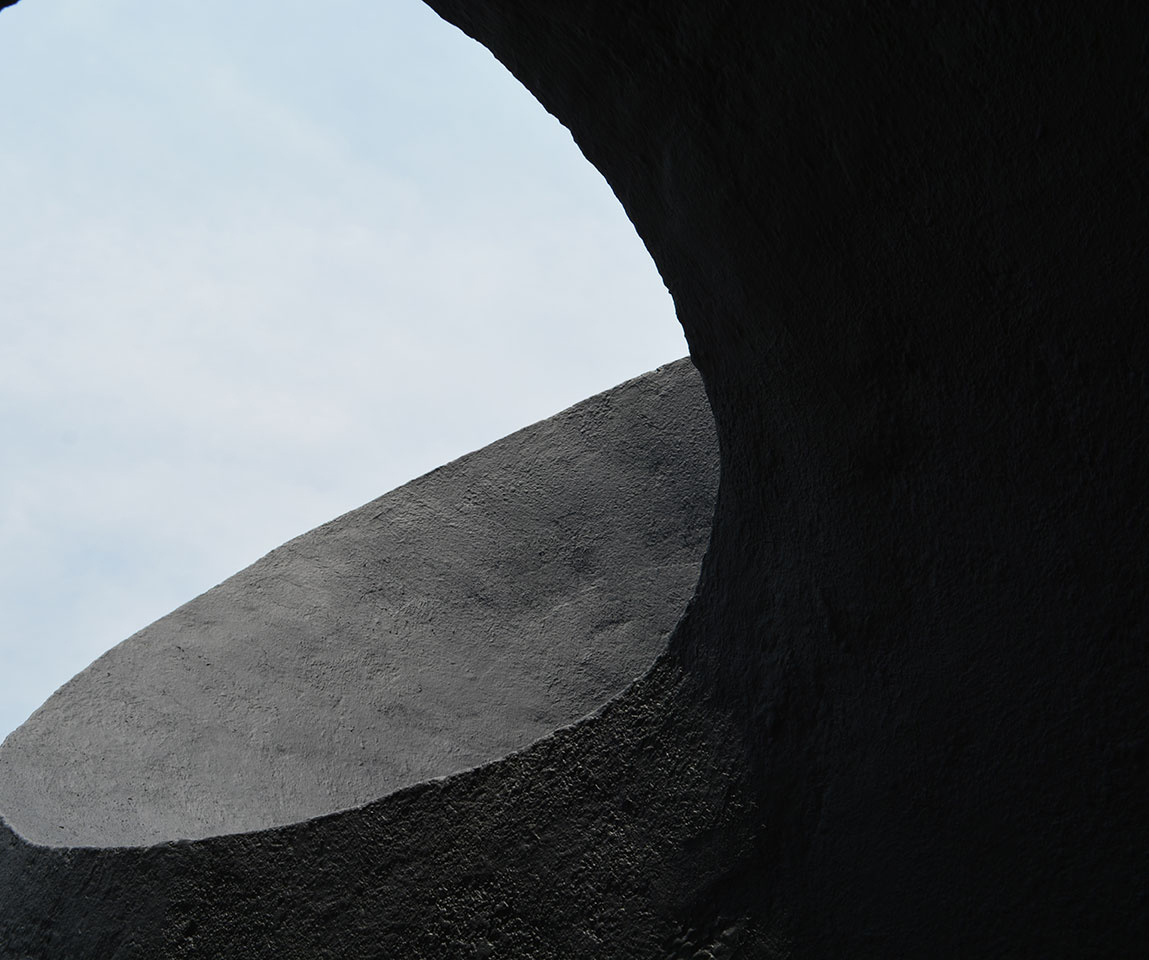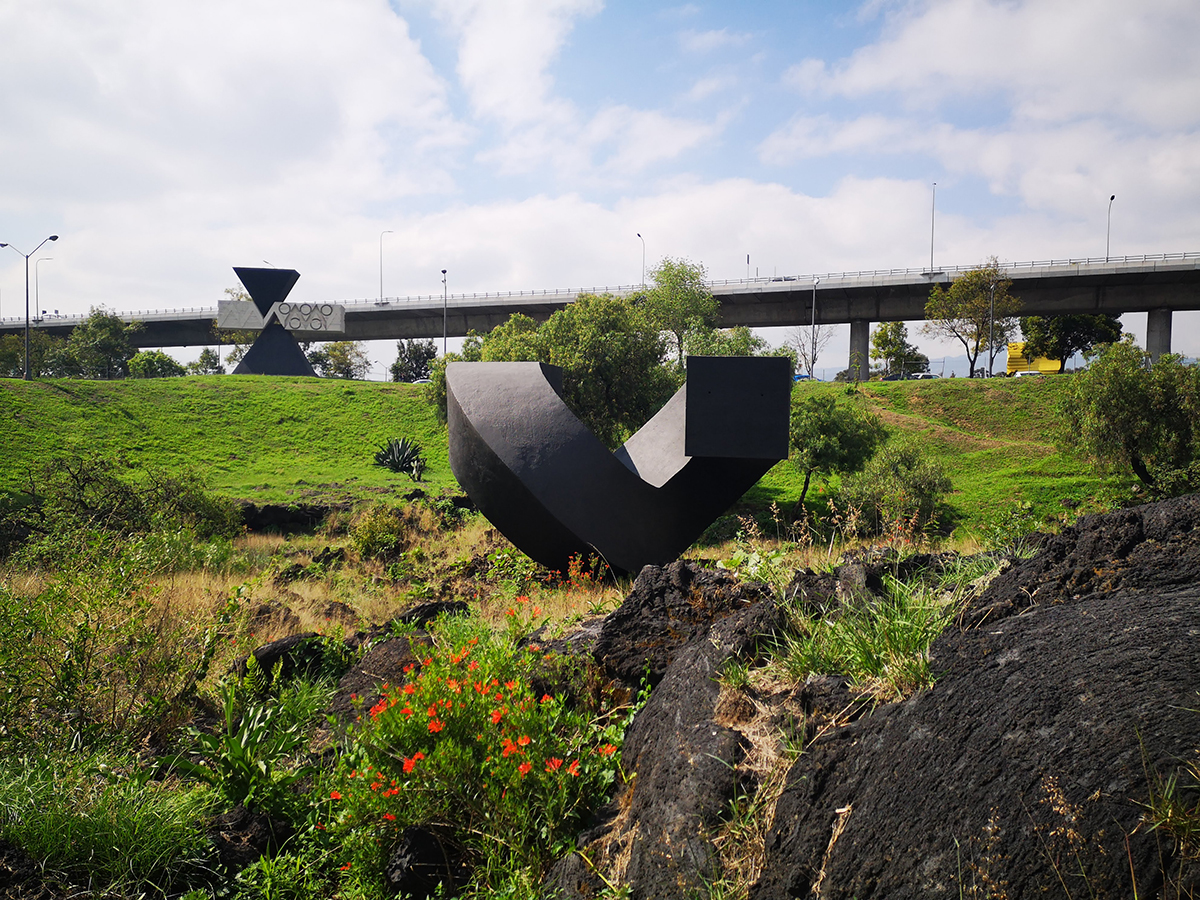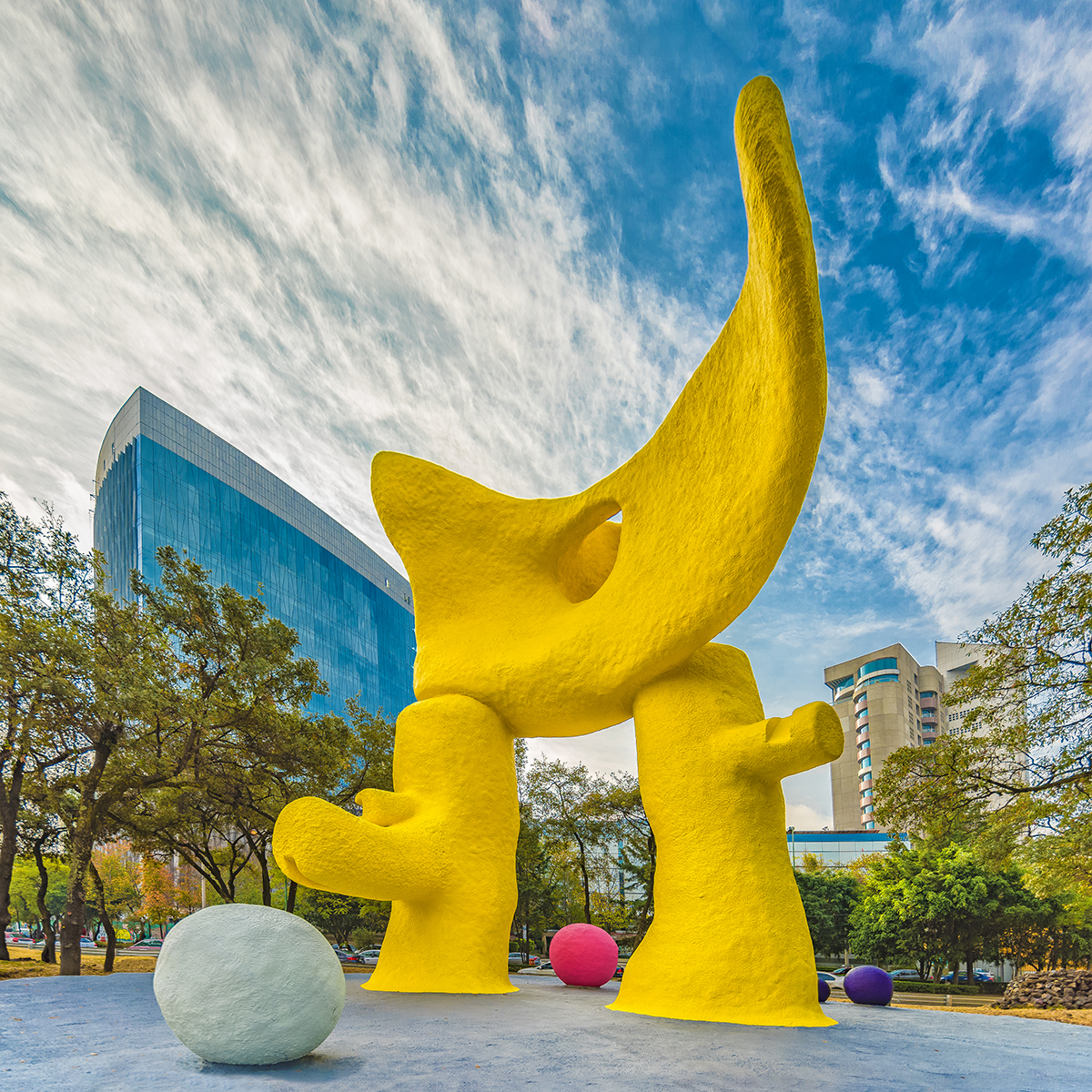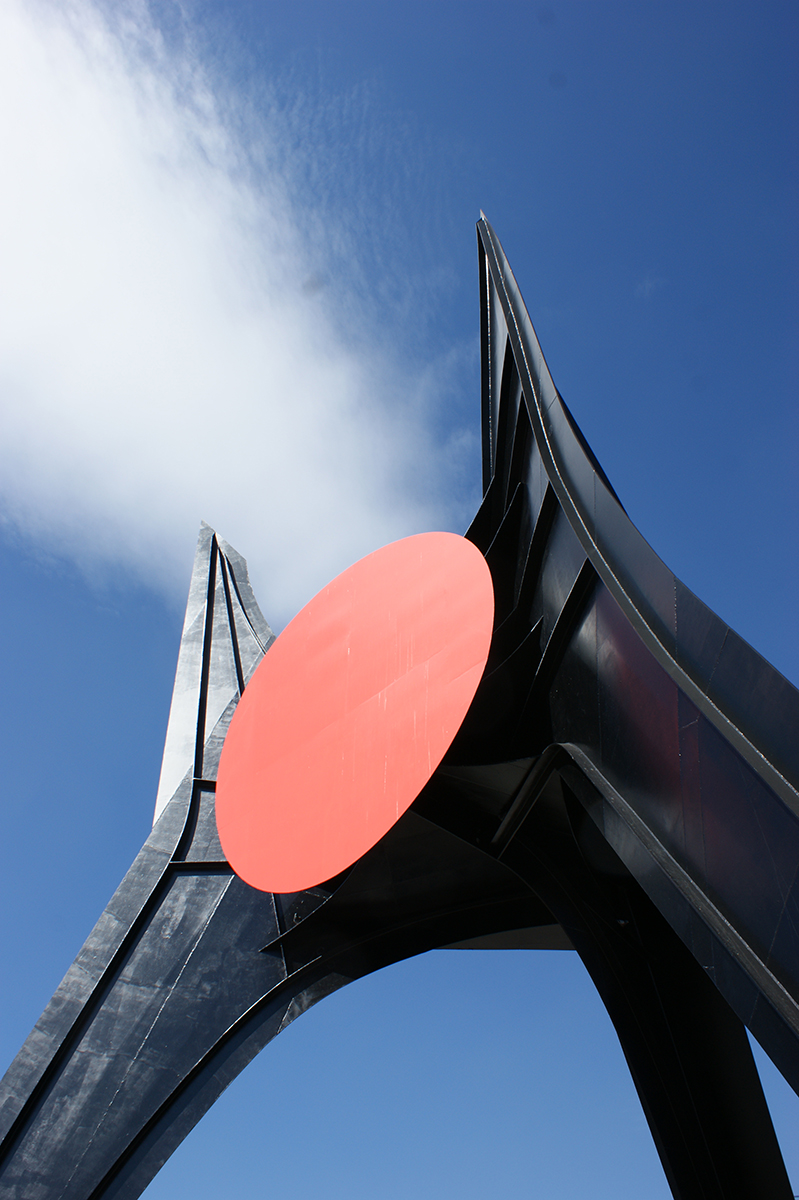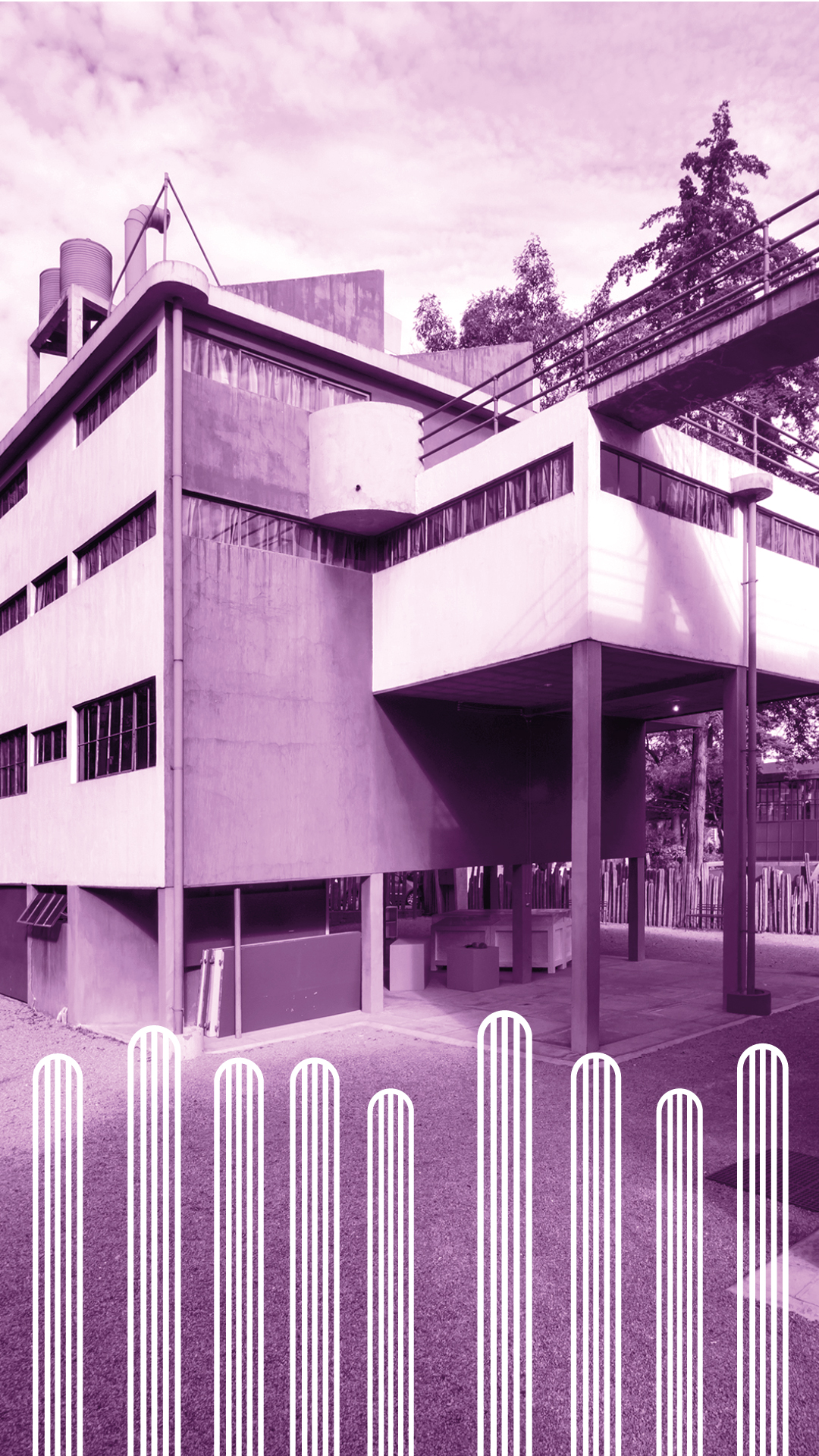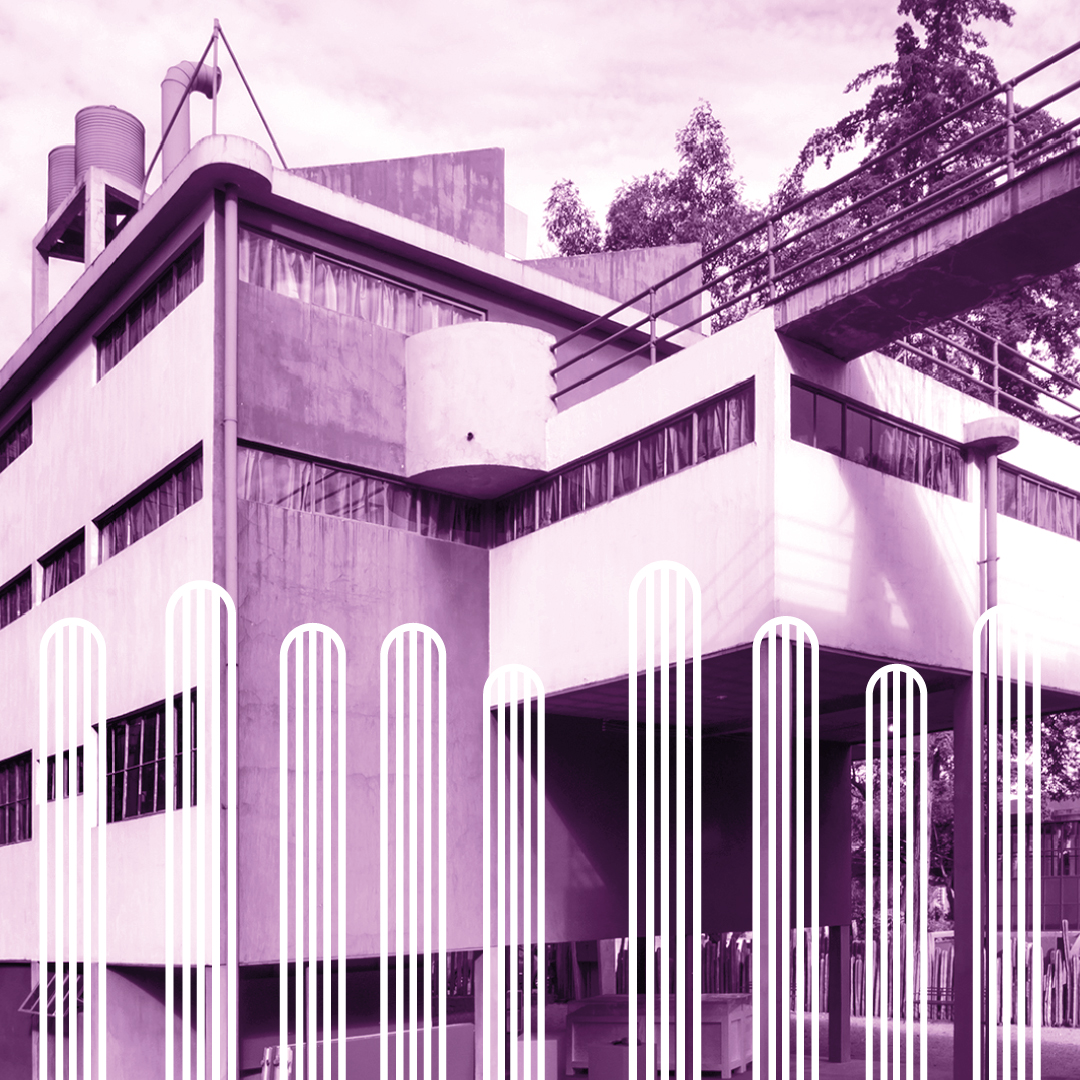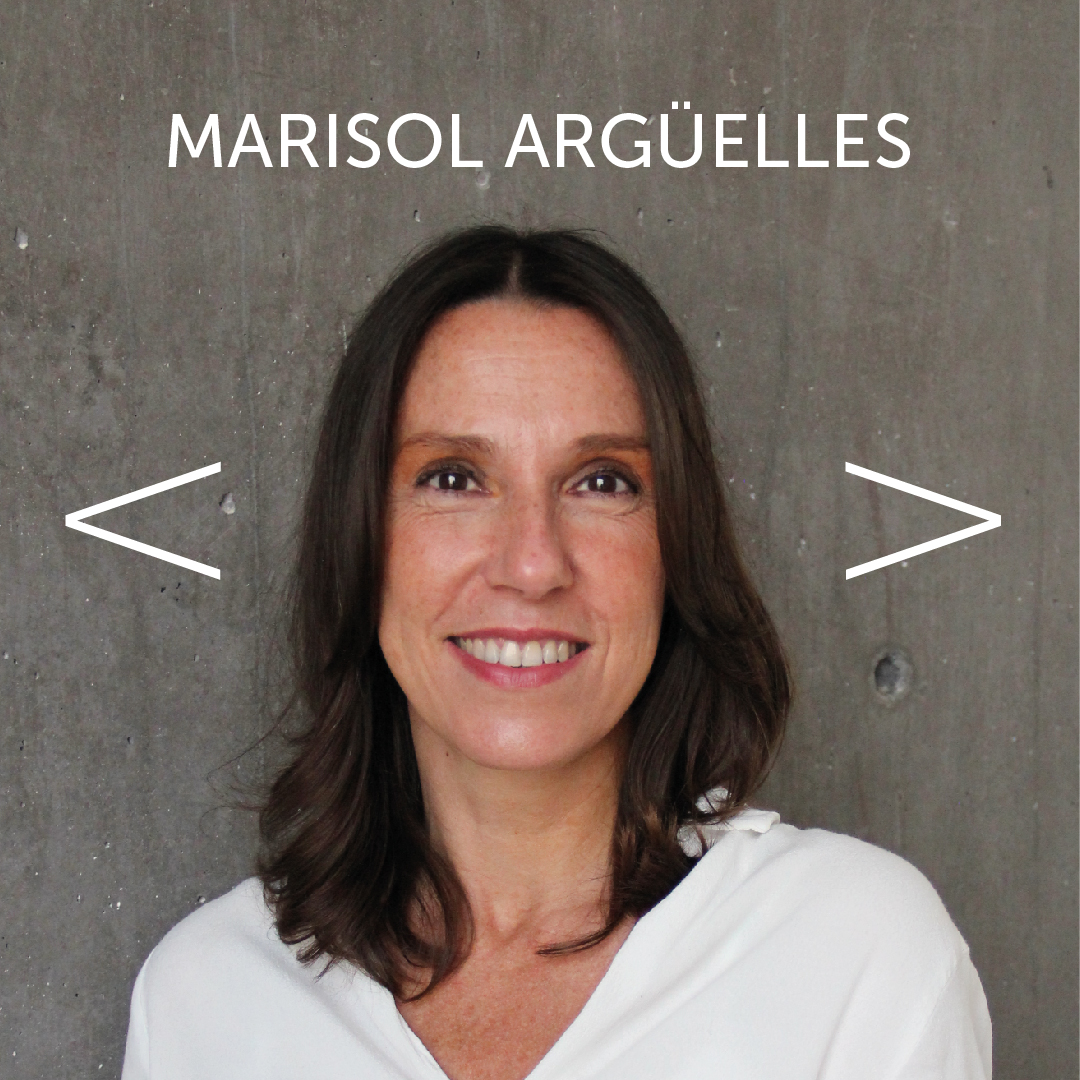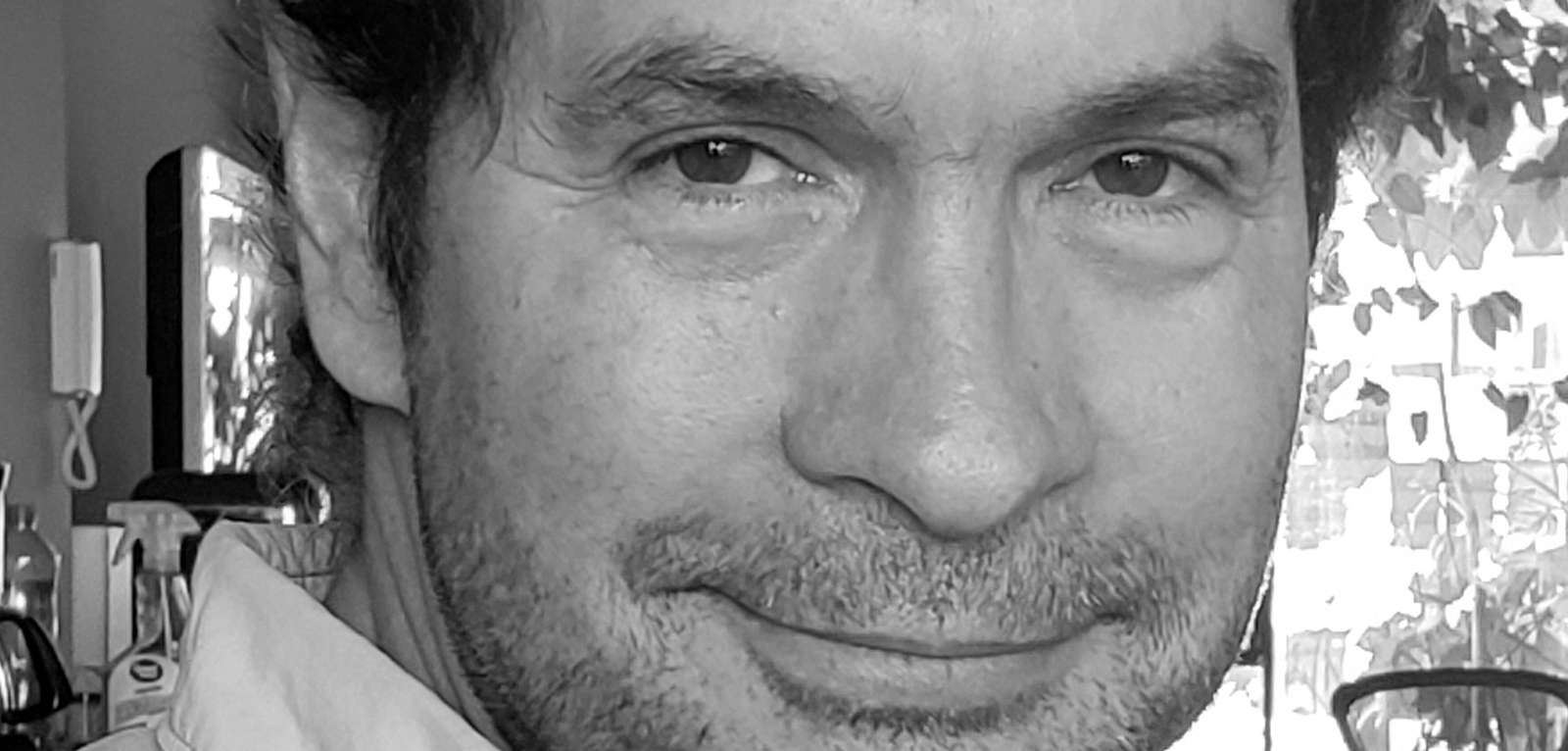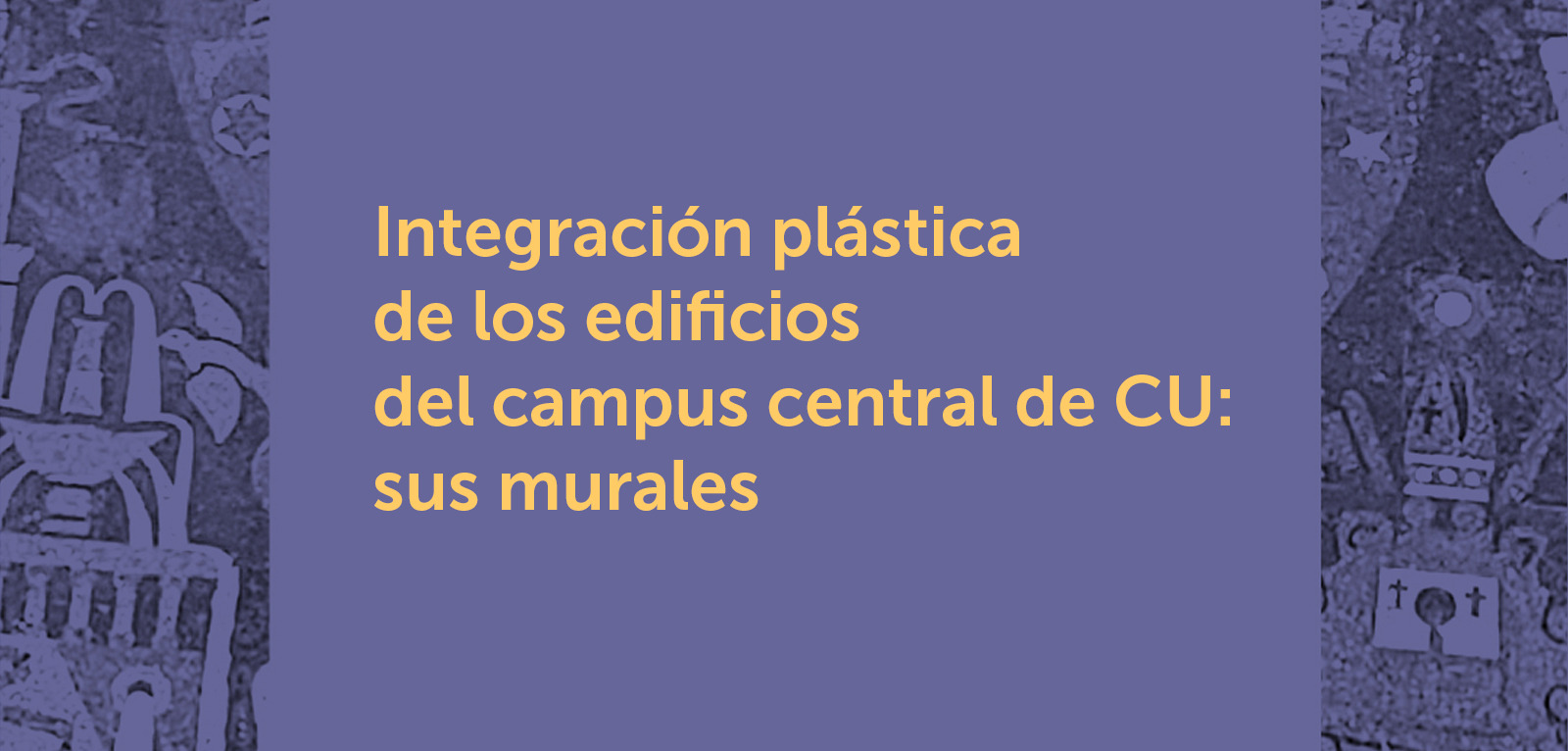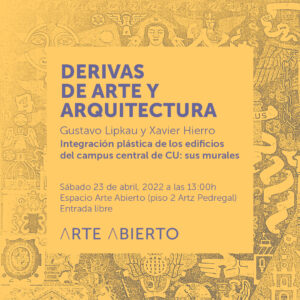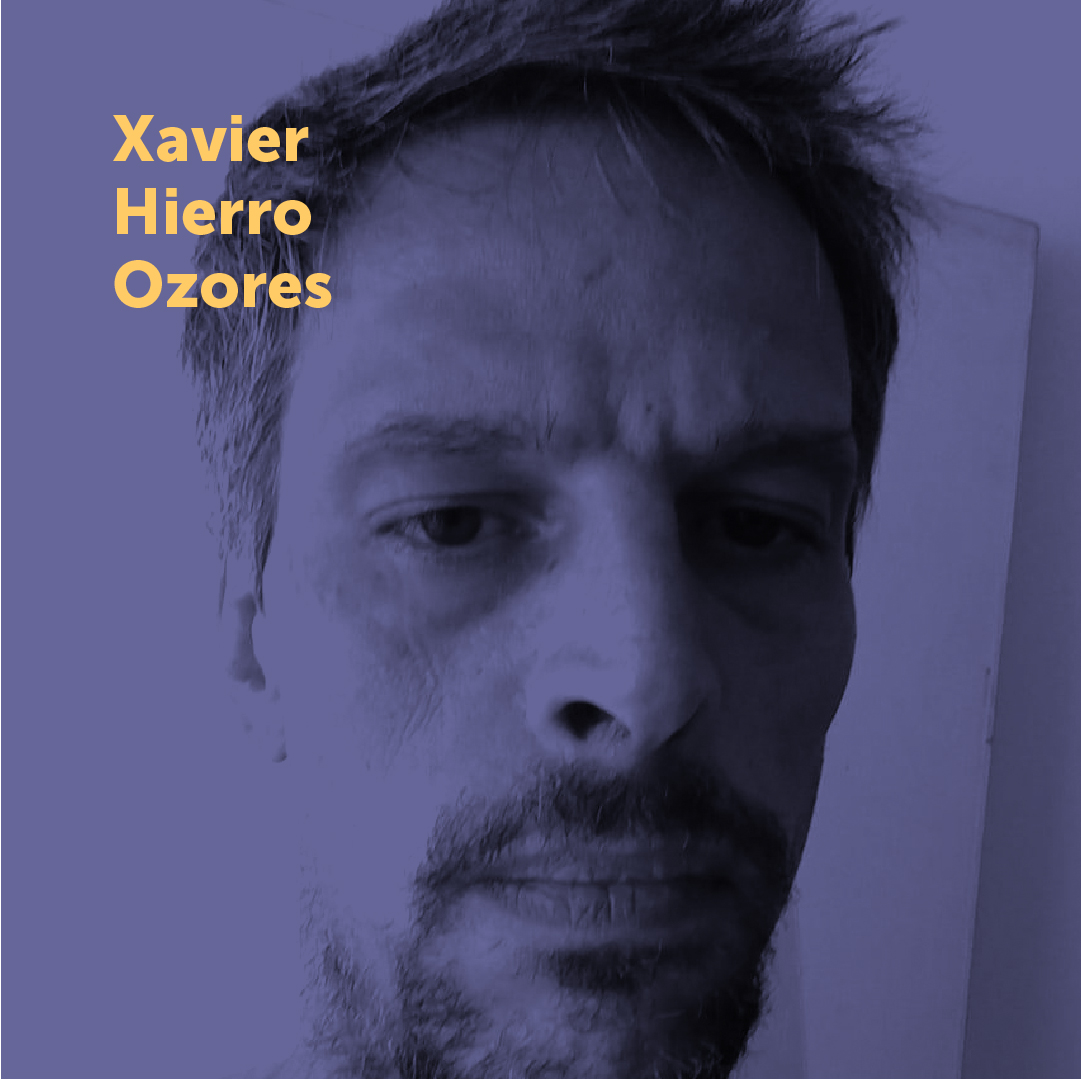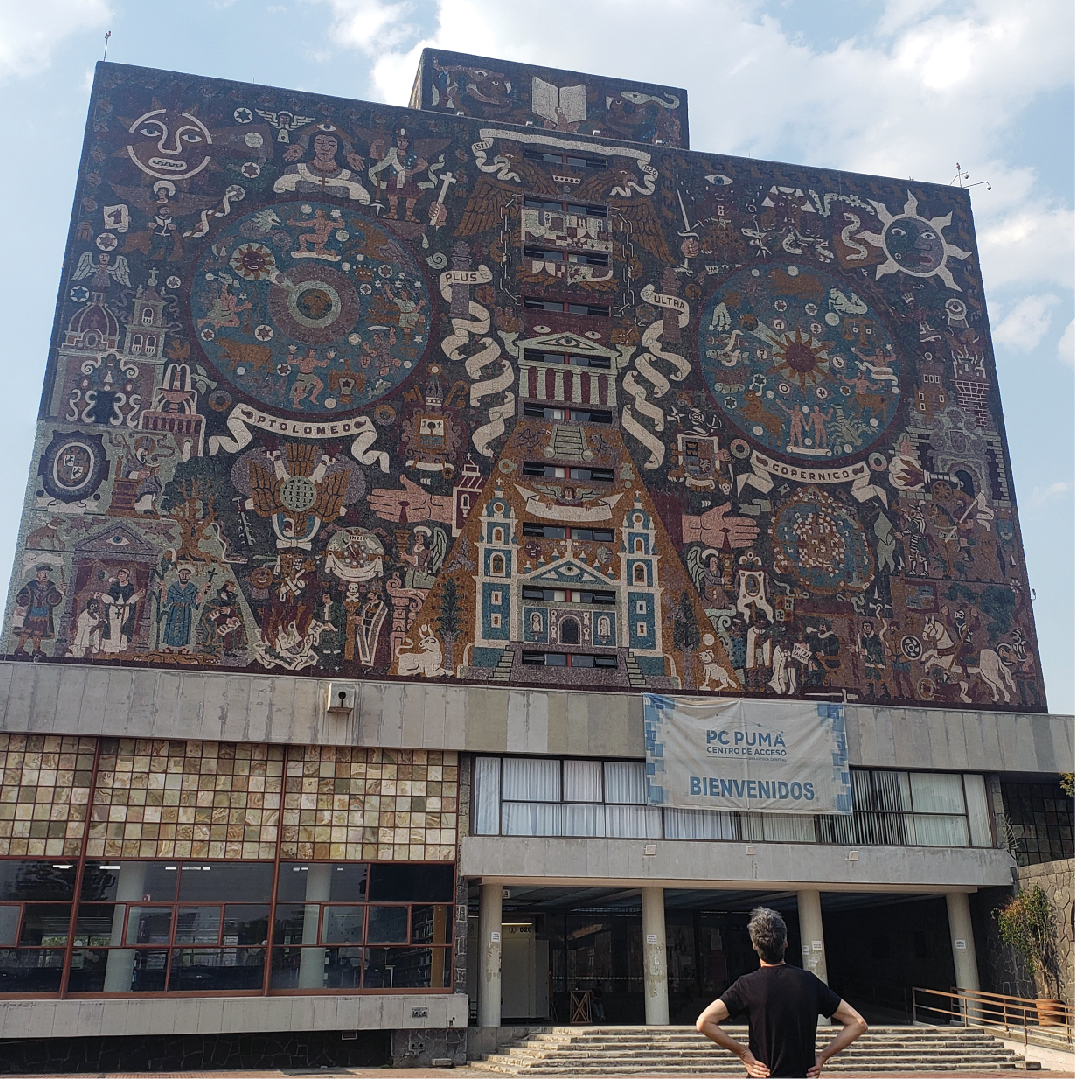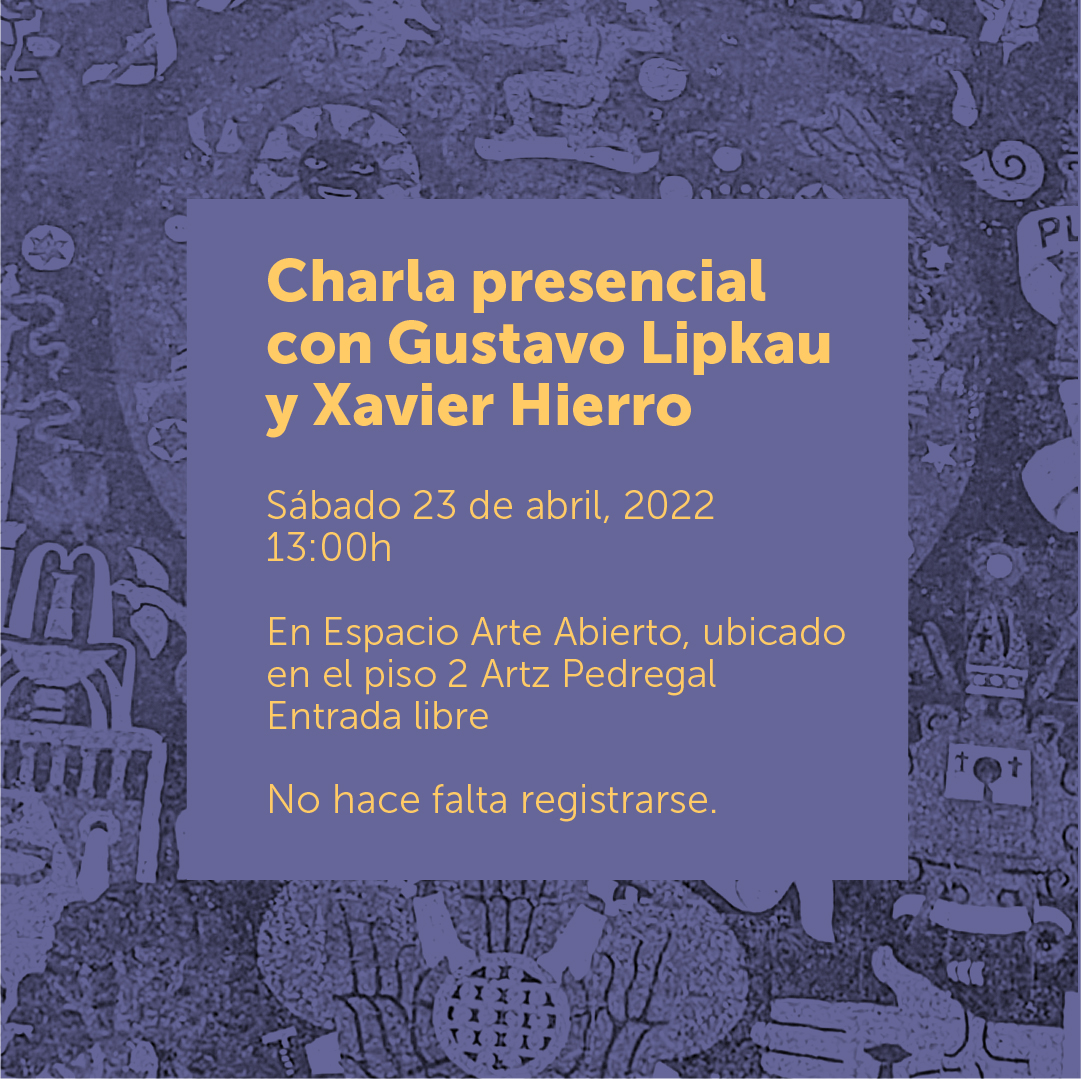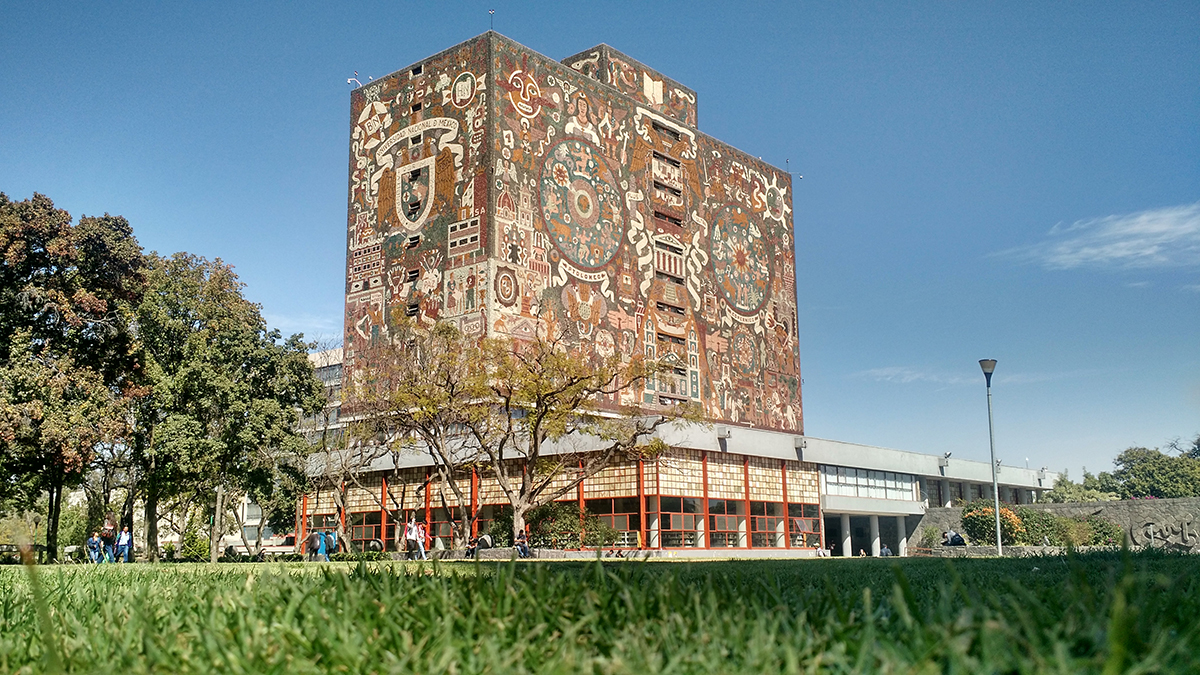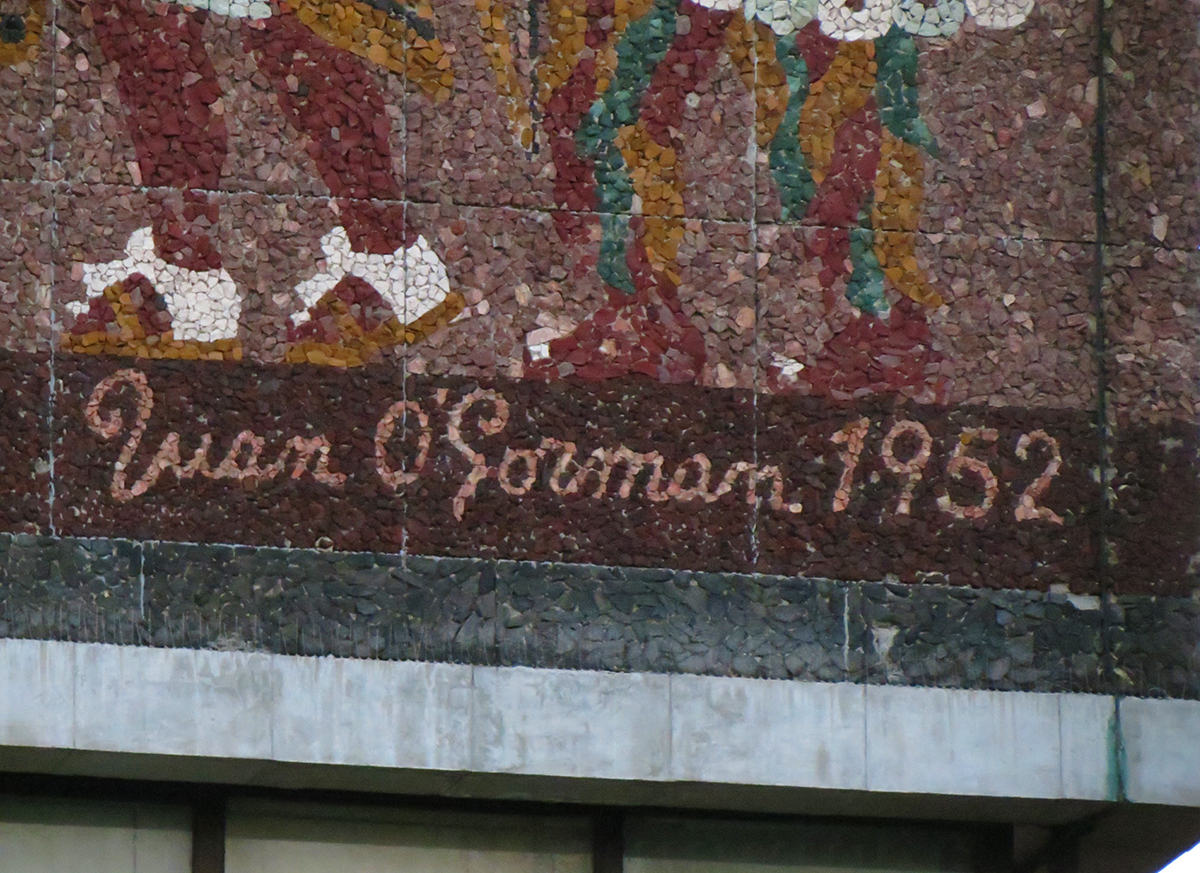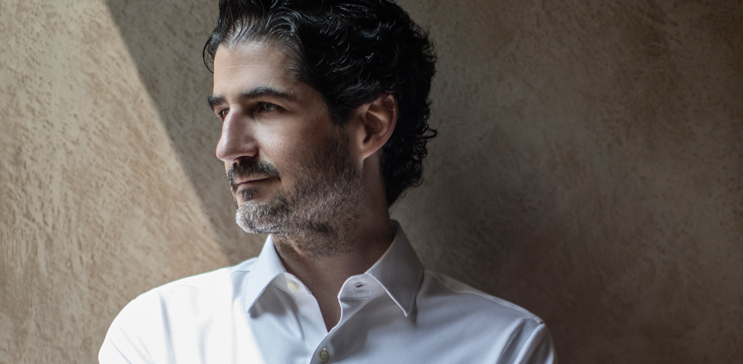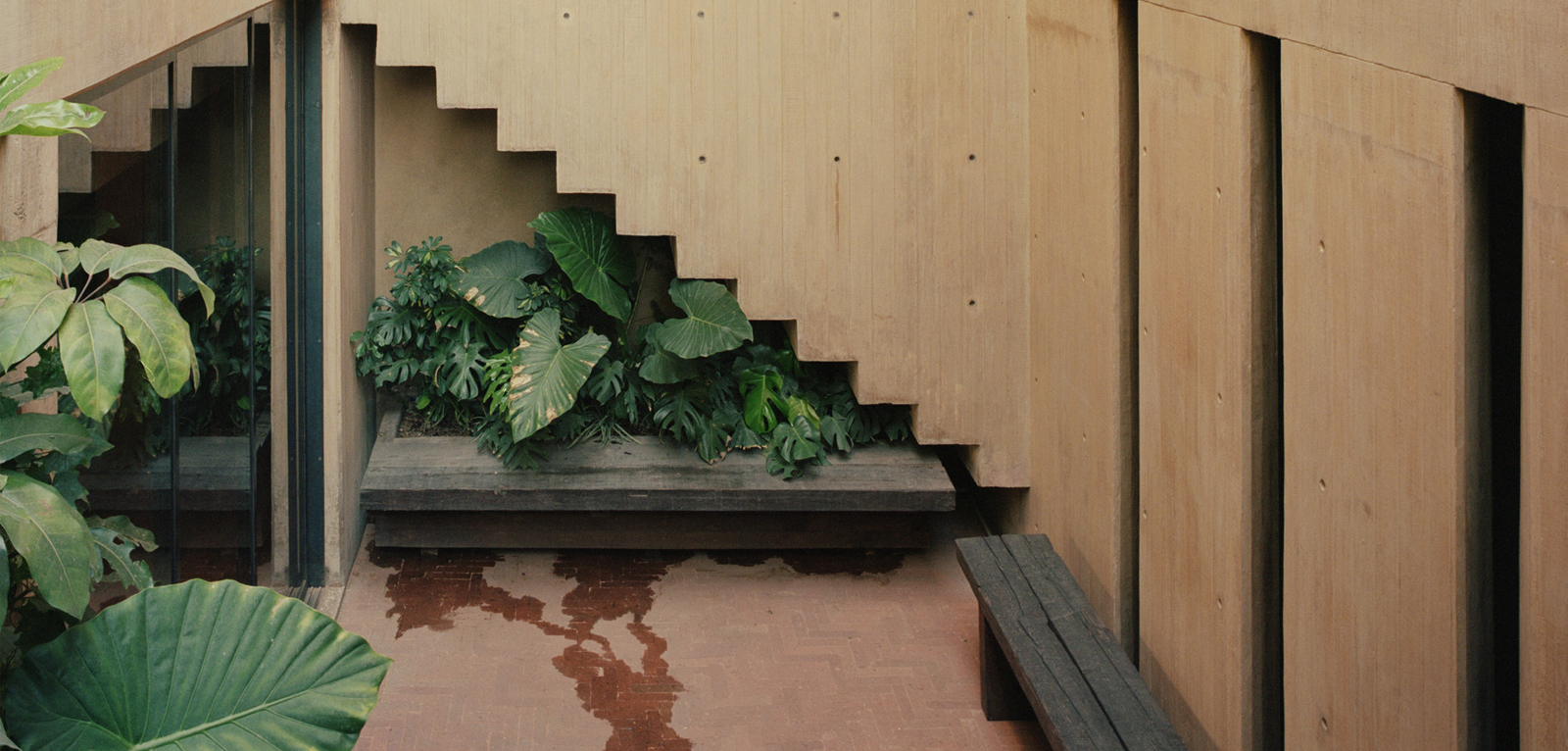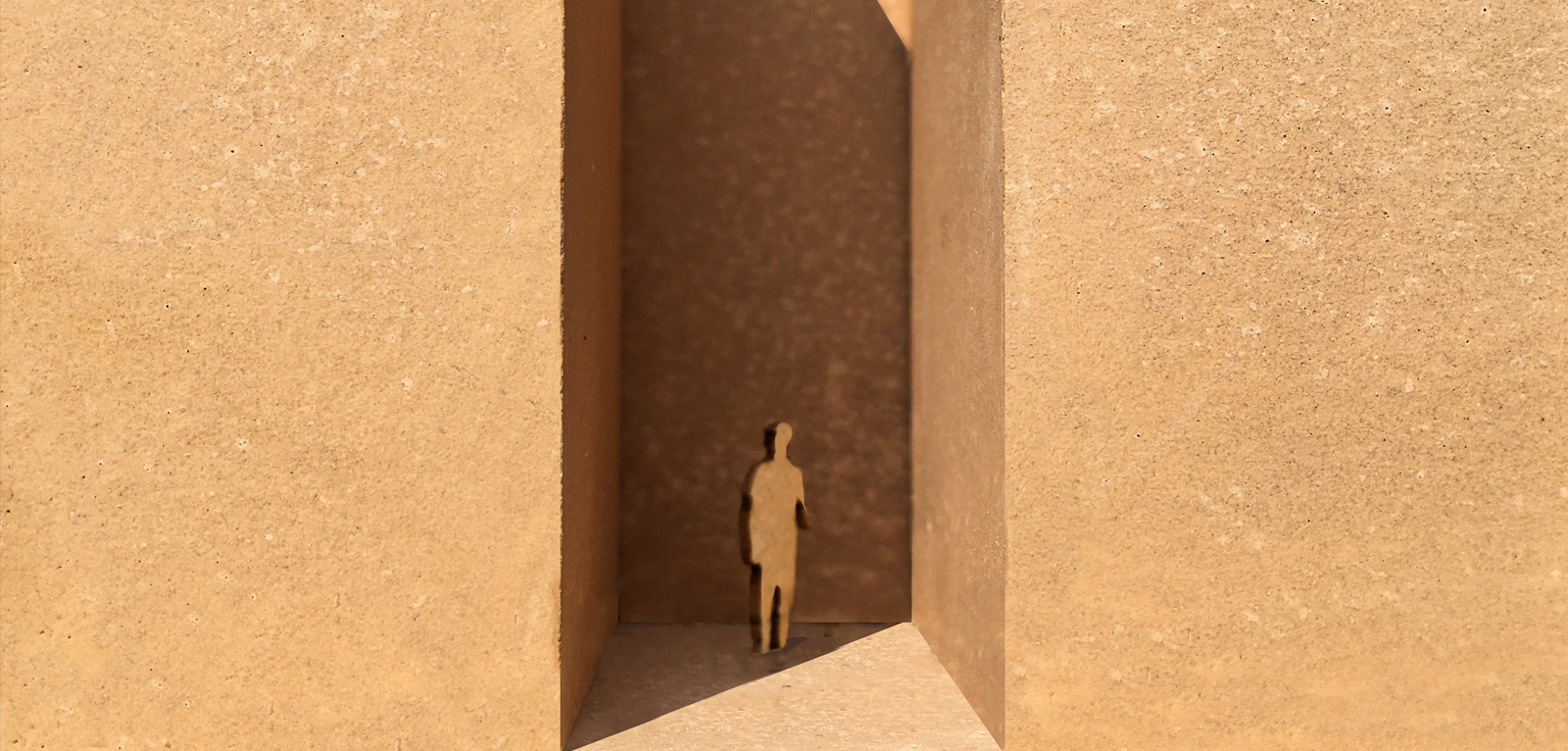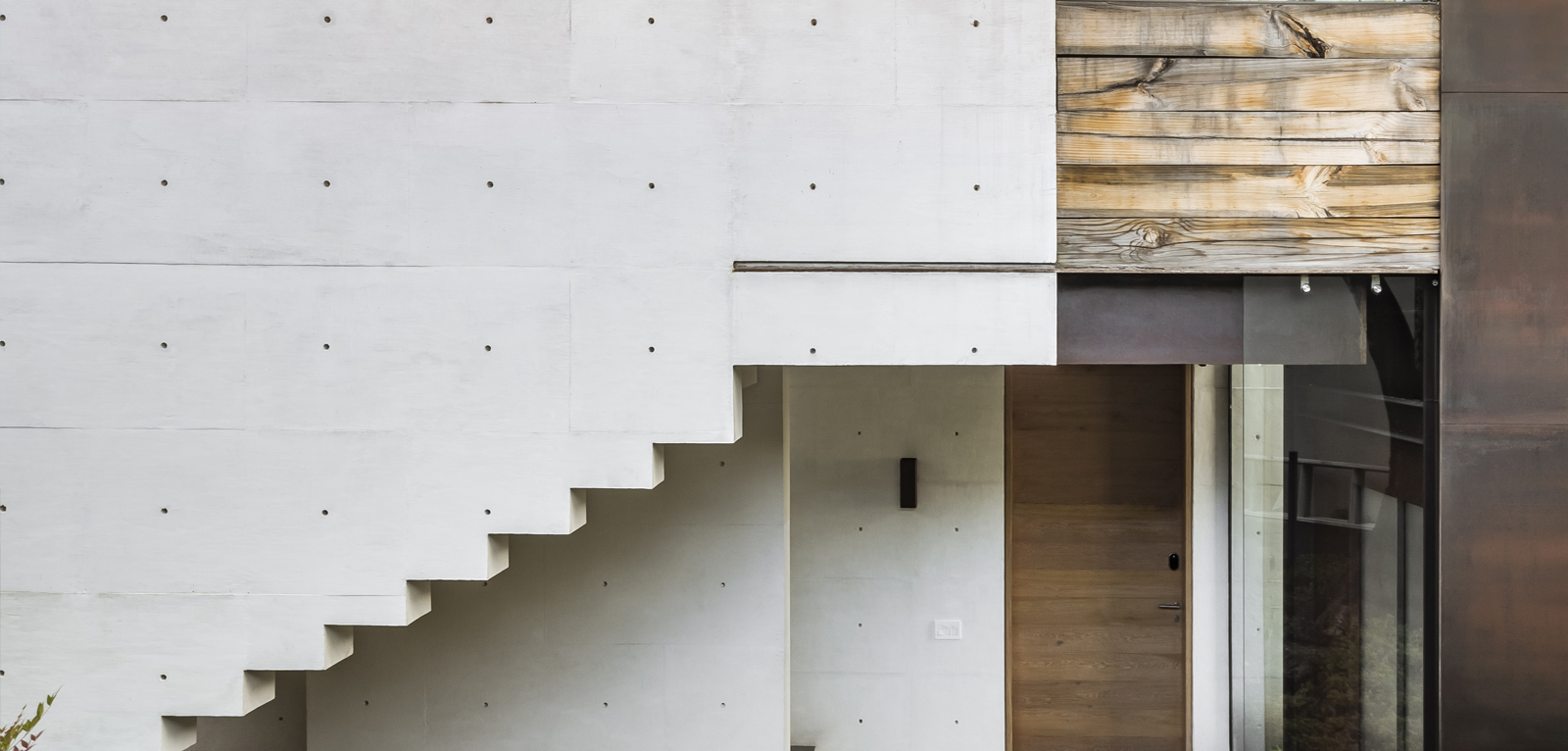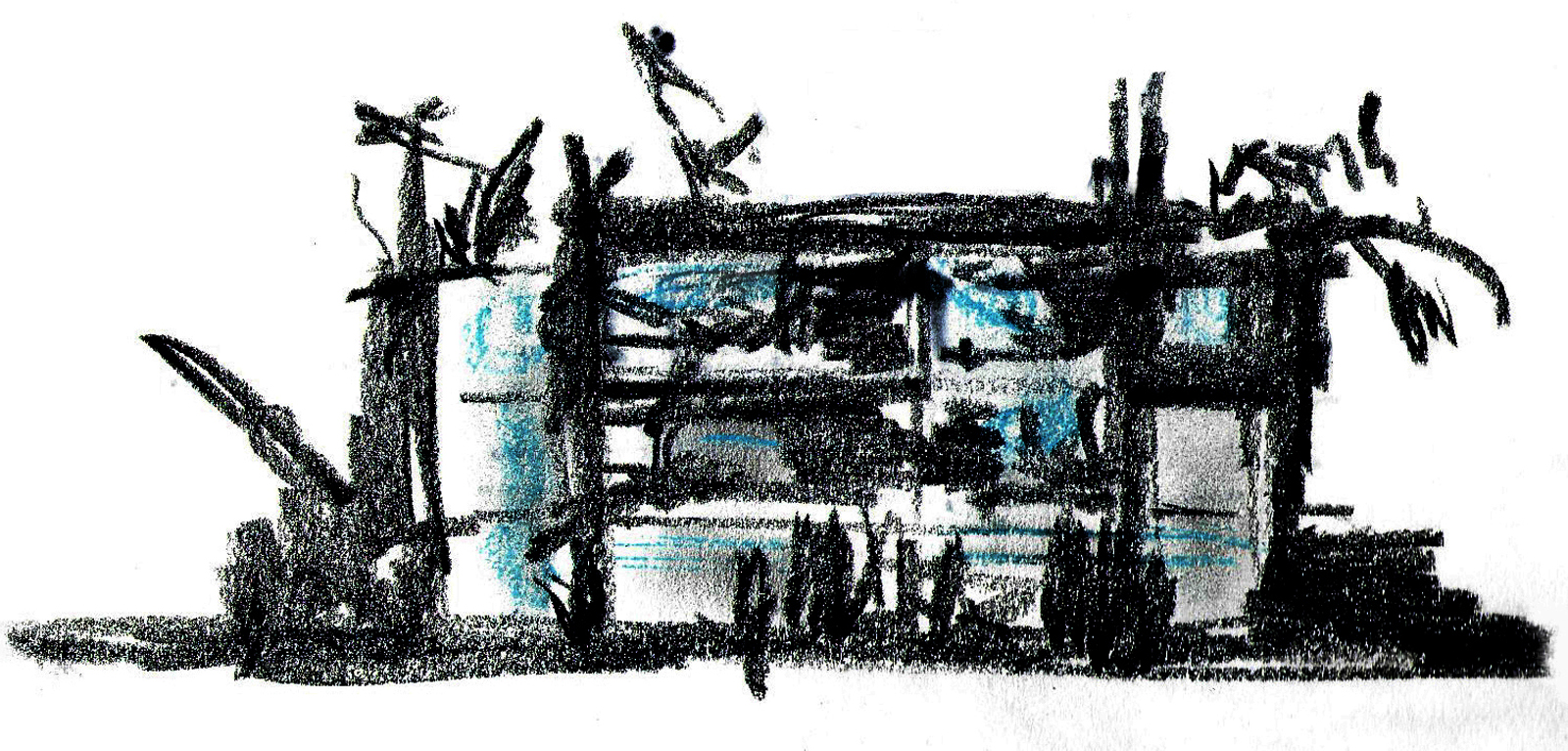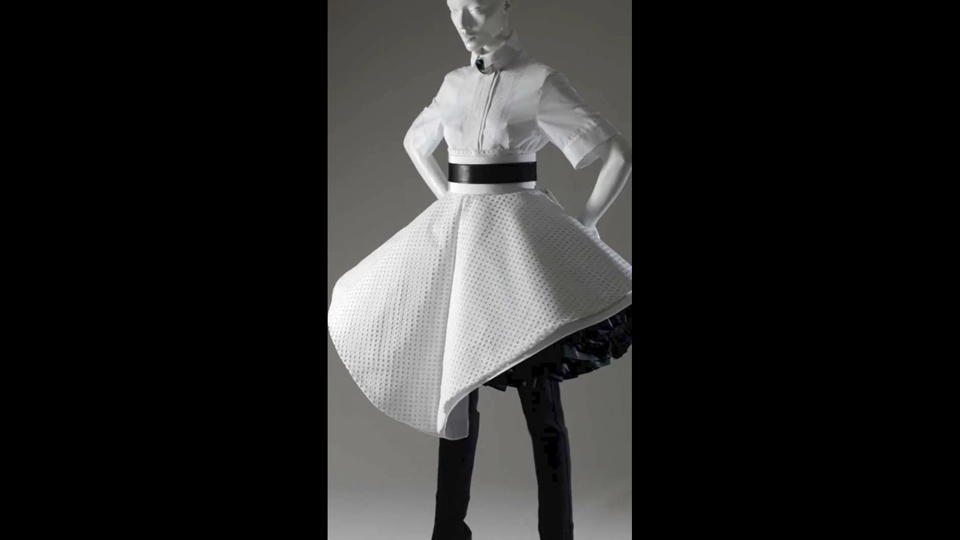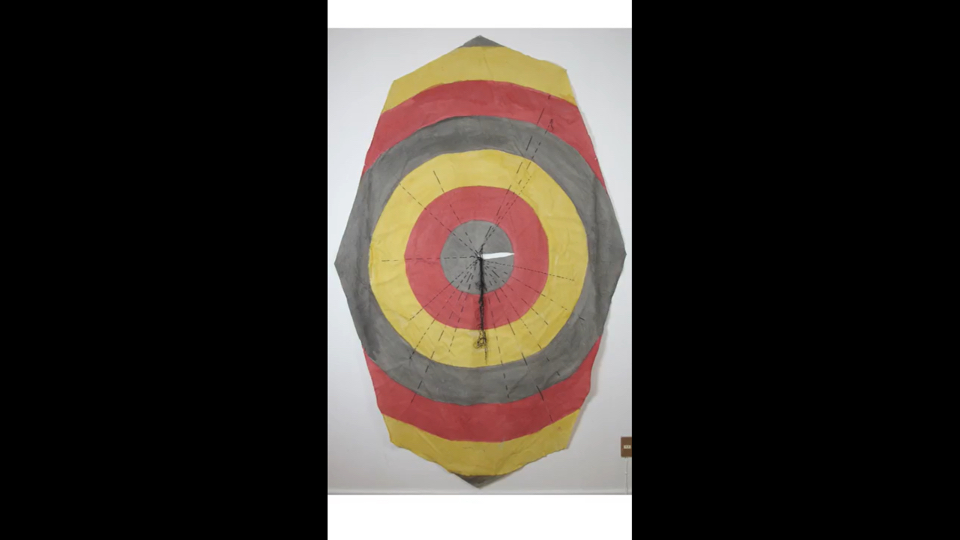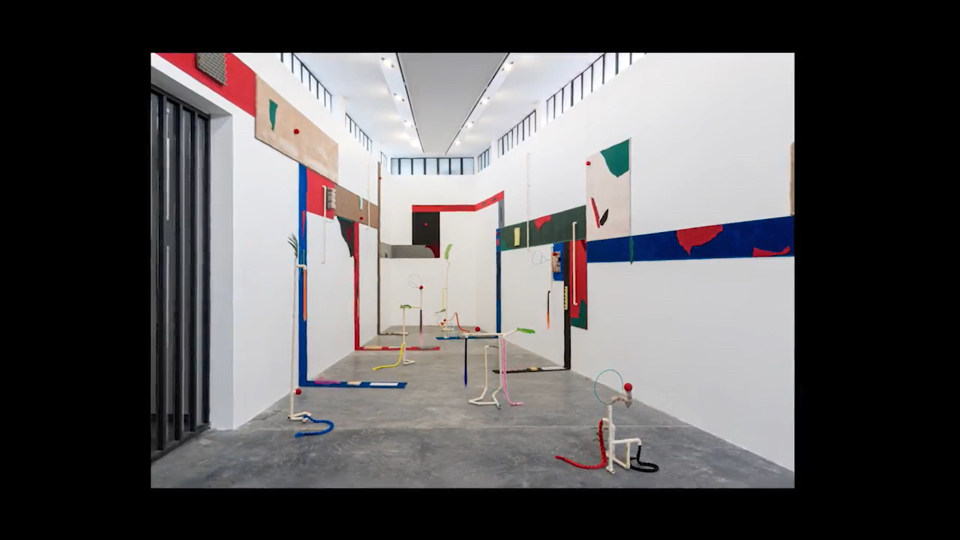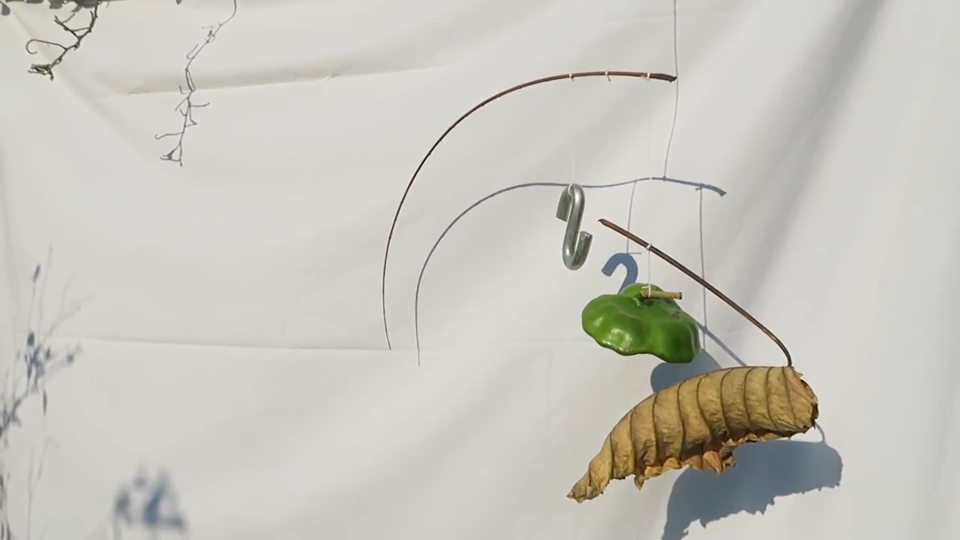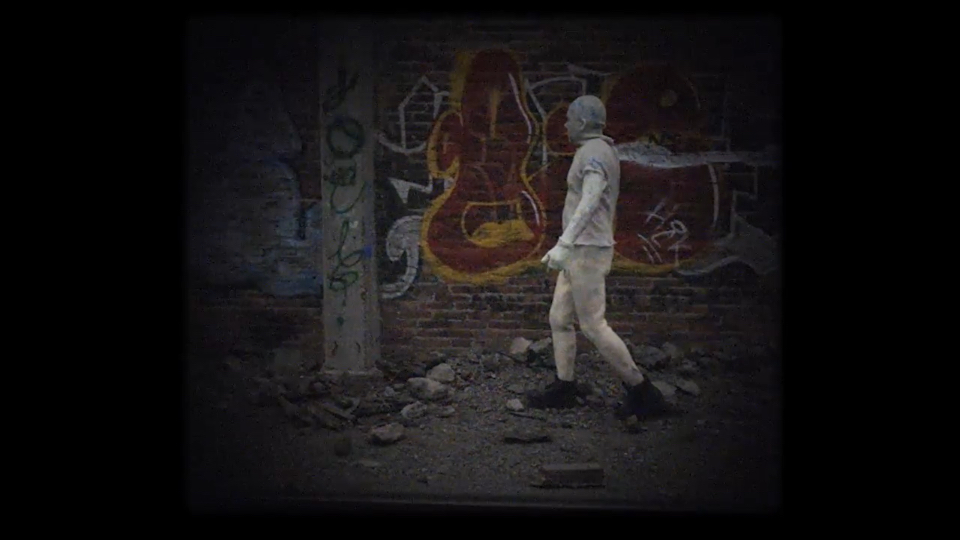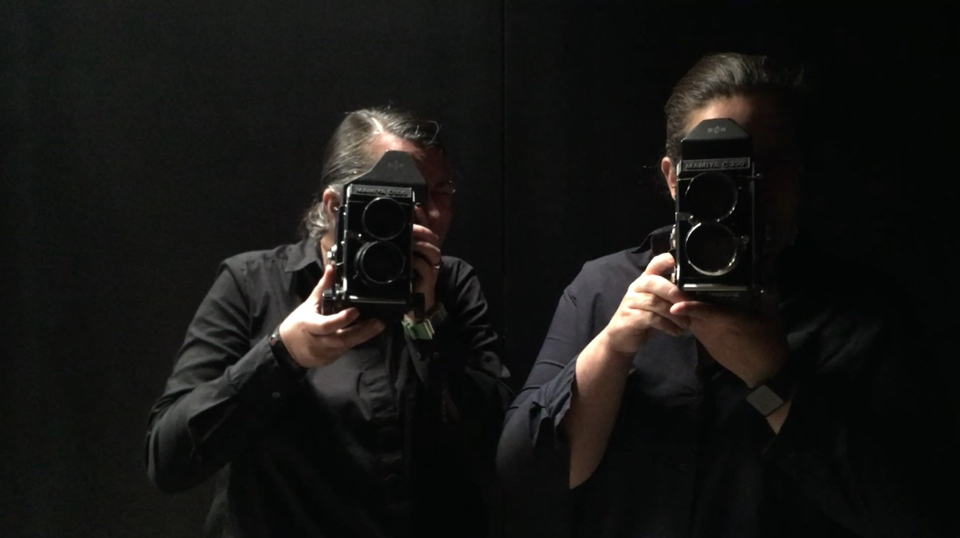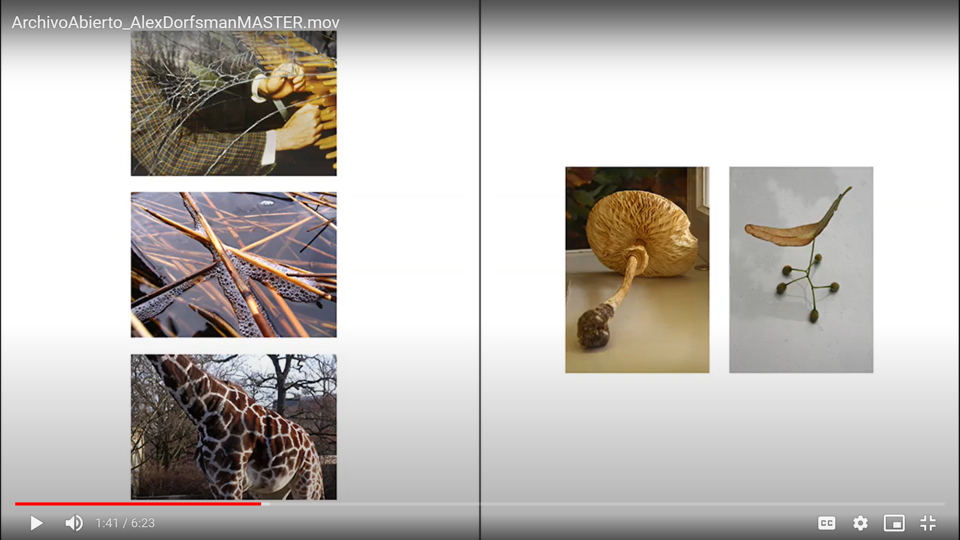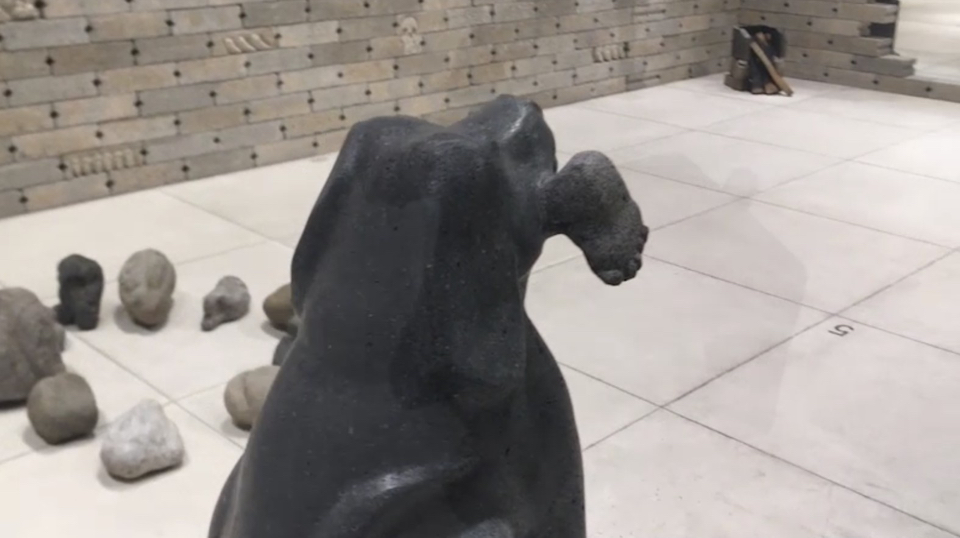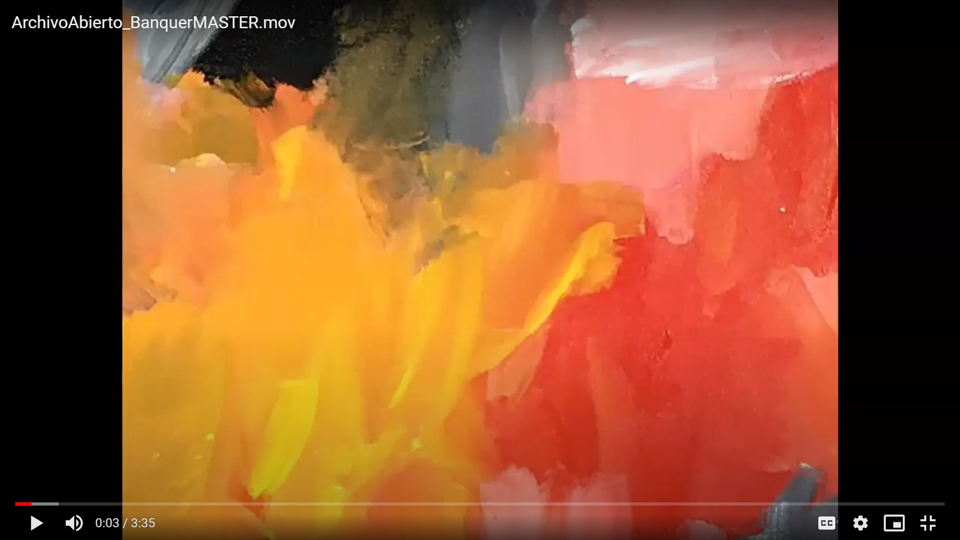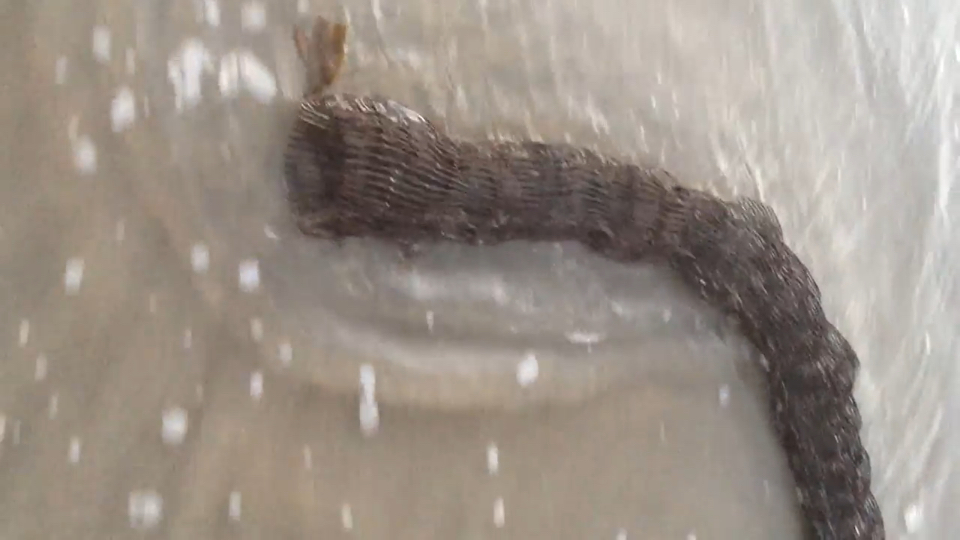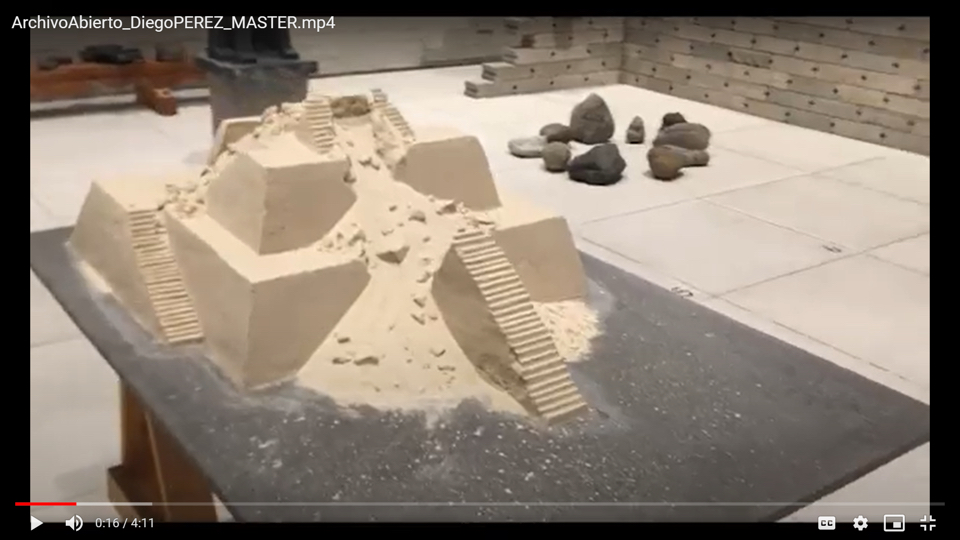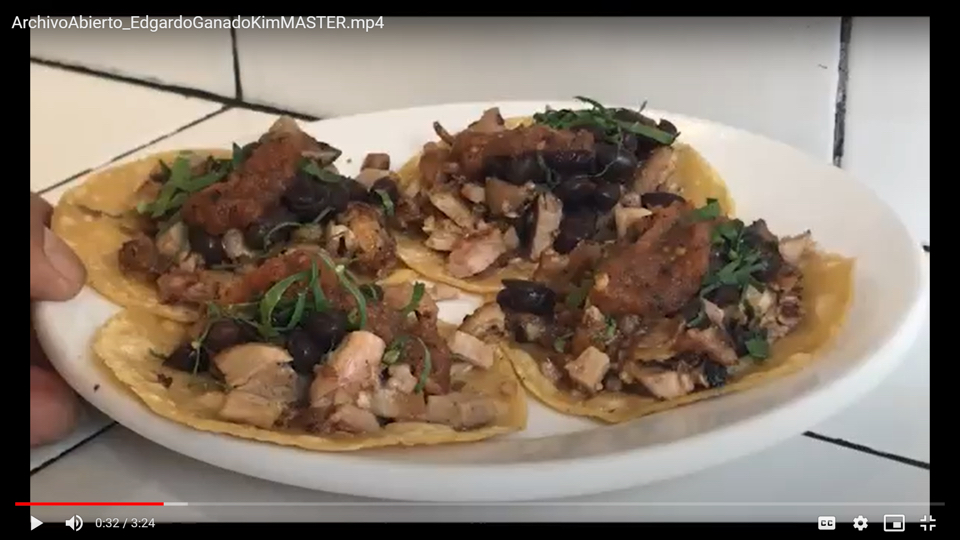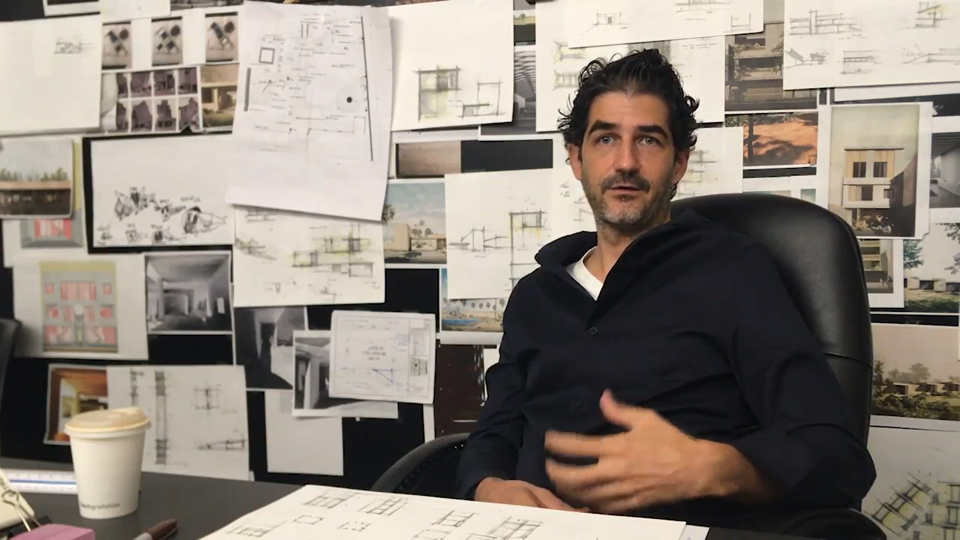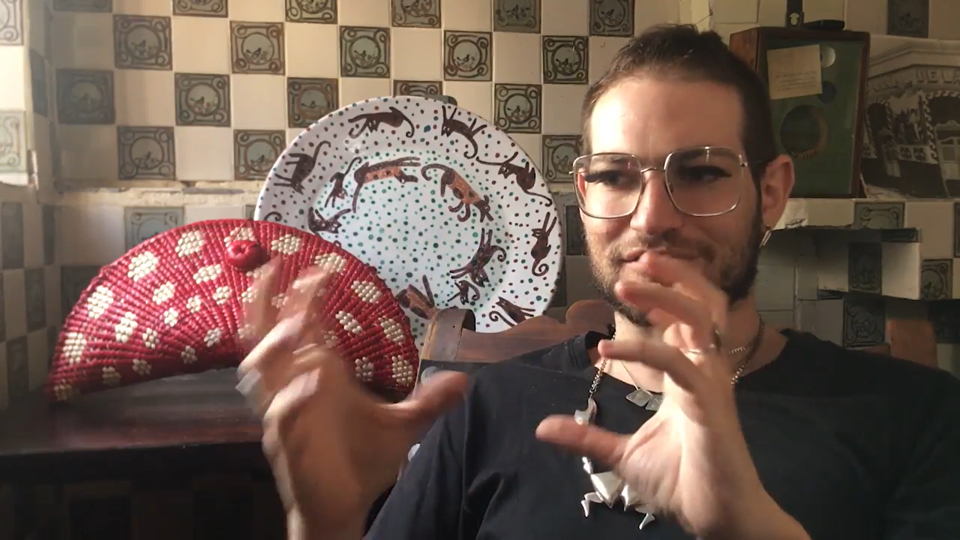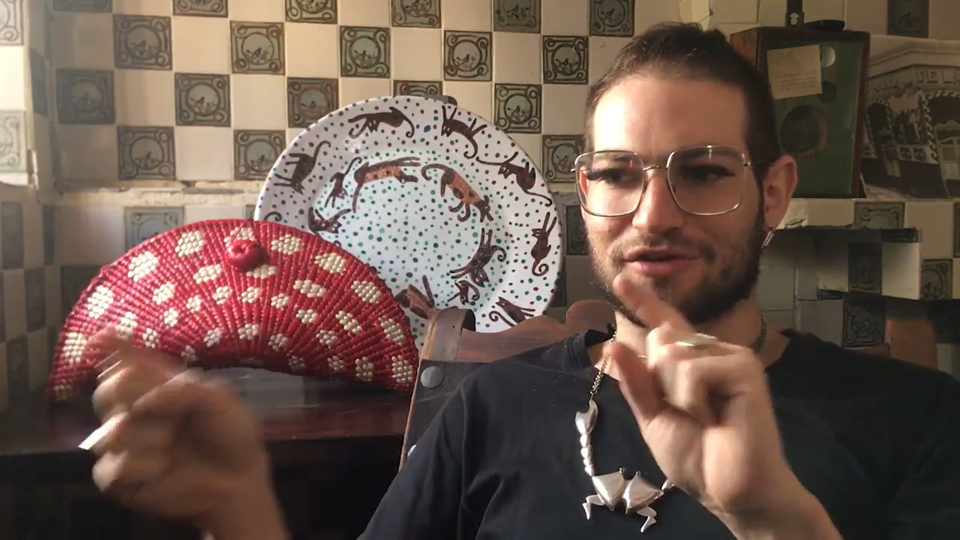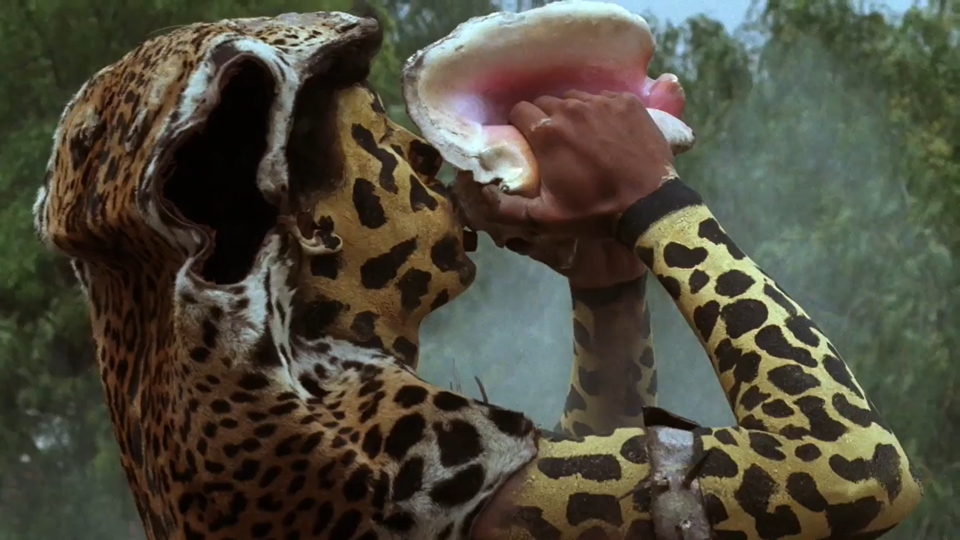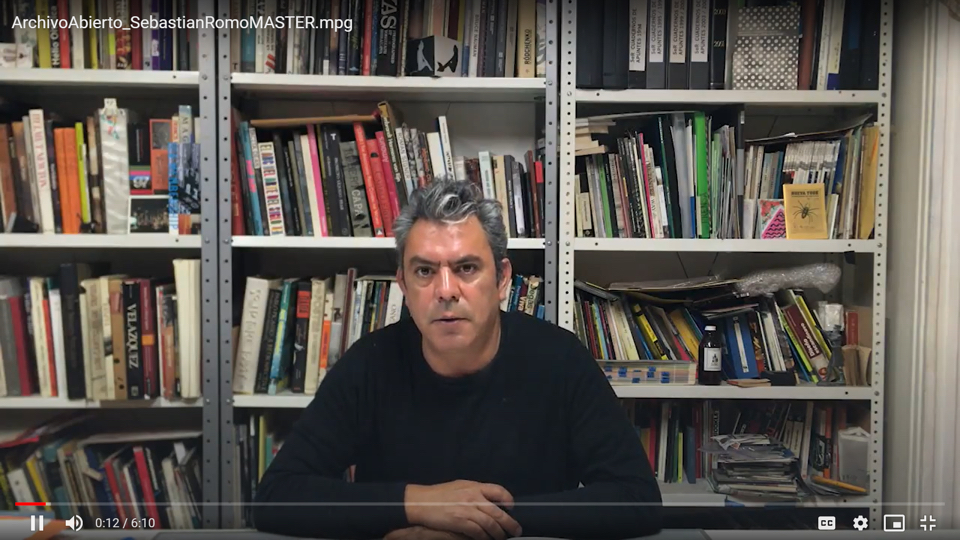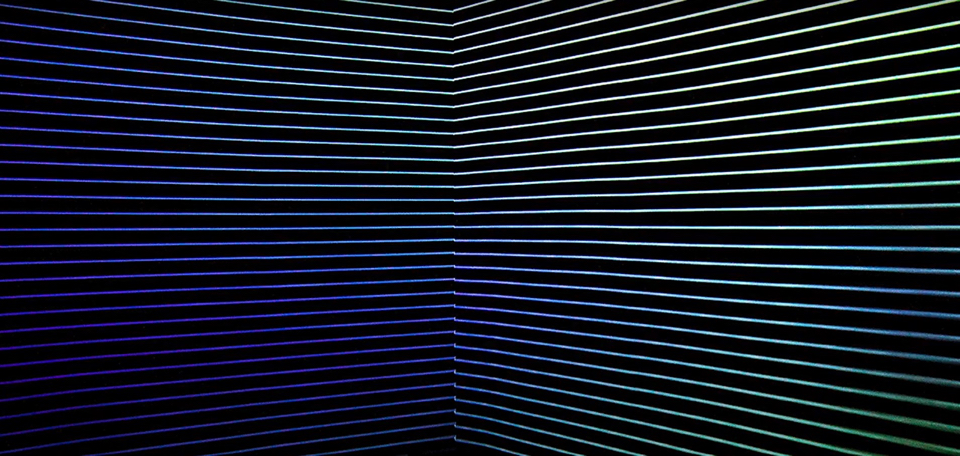19 Oct TANIA CANDIANI – ART AND ARCHITECTURE DERIVES 🗓 🗺
QUANTUM PRELUDE. SOUND ACTIVATION BY TANIA CANDIANI.
A conversation with Tania Candiani.
For our 9th Art an Architecture Derive our special guest speaker is Tania Candiani.
In this derive, the artist Tania Candiani will talk about her work Quantum Prelude, a two-channel audiovisual installation with octophonic sound and original music by Rogelio Sosa, in which different paradigms and readings on the perception and understanding of the emergence of life are intertwined and the world, ranging from ancestral indigenous knowledge and worldview to the implications of quantum physics.
The project, which was born after Candiani’s residence at CERN (The European Organization for Nuclear Research) takes shape at UNAM’s Sculptural Space, in the circular megalithic monument, circumscribed by 64 triangular prisms; 64 musicians were summoned, thus replicating the arithmetic, geometric and harmonic qualities constitutive of the sonority of music, the laws of physics, the organizing principle of nature and the expansiveness of the cosmos.
>>
Quantum Prelude. Sound activation by Tania Candiani.
A conversation with Tania Candiani.
- Saturday, October 29, 2022
- 13:00h
- At Espacio Arte Abierto, located on the second floor 2 in Artz Pedregal
- Free admission
>>
No registration needed.
>>
Tania Candiani (Ciudad de México, 1974)
Multidisciplinary artist who is interest is the translation between the systems of phonic, graphic, linguistic, corporal, symbolic and technological languages. Non-academic researcher, she uses historical records as material, she creates interdisciplinary work groups, consolidating intersections between art, literature, music, architecture and science, with an emphasis on the recovery of early technologies. Her projects are related to tradition, sound, synesthesia, rhythm and translation. Scholarship holder of the National System of Art Creators, her work has been exhibited around the world and is part of important collections. She represented Mexico in the 56 Bienal de Venecia.
taniacandiani.com/
IG @tcandiani
>>
Tania Candiani (Mexico City, 1974)
Preludio cuántico [Quantum Prelude], 2022
Installation. Two-channel video with octophonic sound, single-channel video and wall drawing
27’20’’
Sound action for voices and orchestra, created ex profeso for the unam’s Sculptural Space.
Composition: Rogelio Sosa
Production: Rafael Acevedo, Fernanda Ezquerro, Xenia López, Marcela Moreno, Virginia Roy.
Photography: Ivan García, Juan Manuel López, Marcela Moreno, Miriam Ortíz, Katri Walker.
Audio: Raúl Cortés Ayal, Alexander Lozano, Carlos Merino, Ollin Miranda, José Luis Jiménez, Miguel Ángel Jiménez, Antonio Jiménez Urbina, Arie Orihuela, Jacqueline Saavedra Peralta, Alan Zaragoza Corona.
Asisstants: Victor Barragán Zamora, Natalia Cáceres, Mariana David, Arturo Durán, Adrián León, Miguel Ángel Molina Gutiérrez, David Temoltzin, Fernanda Vázquez, Gerardo Zapata.
Audio postproduction: Miguel Ángel Molina Gutiérrez, Rogelio Sosa, Alan Zaragoza Corona.
Video postproduction: Joaquín Cordero, Ollin Miranda, David Sánchez, Alfonso Víquez Huicochea, Víctor Torres.
Musicians: Rodrigo Ambriz, Ernesto Andriano, Edgar Anguiano Molina, Carolina Aragón Lozano, Edgar Anguiano Molina, Alda Arita, Armando Daniel Arista Villar, Luis Alfredo Belmont, Emilio Bozzano Azpiri, Alexander Bruck, Anahlí Cerrillo, Manuel Chacón Acosta, David Iván Contreras, Nefi Hugo Domínguez Herrada, Alejandro Cruz González, Rocío Durán, Sofía Escamilla Galindo, Ángel Ricardo Espinosa Vidal, Diego Espinoza, Alonso González González, José Carlos Greco Pantoja, Jorge Galindo González, Carla González Ramírez, Rodolfo Gutiérrez Ocampo, Jireh Sarai Hernández Chávez, Ramón Hernández Mendiola, Javier Hernández Tagle, Albania Juárez Rodríguez, Katya Kazachkina, Paola Landa, Eduardo Lobaco, Omar López, Saúl López Arzate, Alina Maldonado, Miguel Francisco Manríquez Fernández, Misha Marks, Roberto Martínez (Roberto Tercero), Ulises Martínez, Azul Miranda, Leika Mochán, Sandra Muciño, Allan Muñoz Trujillo, Anahí Luisa María Navarrete, Ariadna Ortega Torres, Geo Alí Ortiz, Elizabeth Piña, Aleida Pérez González, Paulina Posadas, Gustavo Rangel Guerrero, Loretta Ratto Celiz, Miguel Ángel Rivera Bedolla, Jesús Humberto Rivera Iribe, Adriana Alejandra Rosales, Silvestre Ruiz Algara, Adriana Santiago, Elisa Schmelkes, Patricia Solís, Andrés Solis, Andrea Sorrenti, Luisa Amanda Tovalin, María Elena Tovar Garnica, Juan Armando Vázquez Carrillo, Rodrigo Adán Velázquez Hernández, Emmanuel Agustin Yañez Vera.
This piece was produced with the invaluable support of Interprotección.
>>
Arte Abierto continues with its new public program “Derivas de arte y arquitectura”, which seeks to renew our gaze on the architectural legacy of Mexico City. From a series of talks focused on rescuing the parallel stories of emblematic architectural projects and public spaces that have witnessed the variable intersection between art and architecture. In this first stage, the program deals mainly with modern architecture, based on a series of talks given by invited curators, architects, artists and urban planners.
With this program, ways of returning to architecture part of its public, experiential, collective character and close to those of us who inhabit the city are tested, recognizing in it its condition as a living archive. From these talks, circumstances, contexts and anecdotes are revealed that have been part of his sensitive memory and that complement his material memory, a relationship that often escapes documentary narratives and academic accounts.
The objective of the drifts is to generate experiences of spatial rediscovery, which allow us to renew our gaze on the legacy of certain emblematic architectural and artistic works, as well as those that have been forgotten.
The derives will be carried out free of charge on the last Saturday of each month, at 1:00 p.m. with a limited capacity.
Arte Abierto Derives :
February 26: Tania Ragasol / Entorno urbano, cotidianidad y arte: La Torre de los Vientos by Gonzalo Fonseca
March 26 : David Miranda / Del Animal Herido y otros eventos escultóricos dentro de la arquitectura moderna
April 23: Gustavo Lipkau y Xavier Hierro / Integración plástica de los edificios del campus central de CU: sus murales
May 28: Marisol Argüelles / La casa-estudio Diego Rivera y Frida Kahlo. Del espacio doméstico a la dimensión de lo público
June 25: Luis Javier de la Torre/ La Ruta de la Amistad MÉXICO68… más allá de 1968
July 30: Aldo Solano/ Architecture for playing in 20th Century Mexico City.
August 27: Christian del Castillo/ Tracing the modern in the architecture of the Historic Center of Mexico City.
September 24: Juan José Kochen/ The ideal of the multifamily apartment complex.
October 29: Tania Candiani / Quantum Prelude. Sound action by Tania Candiani.



